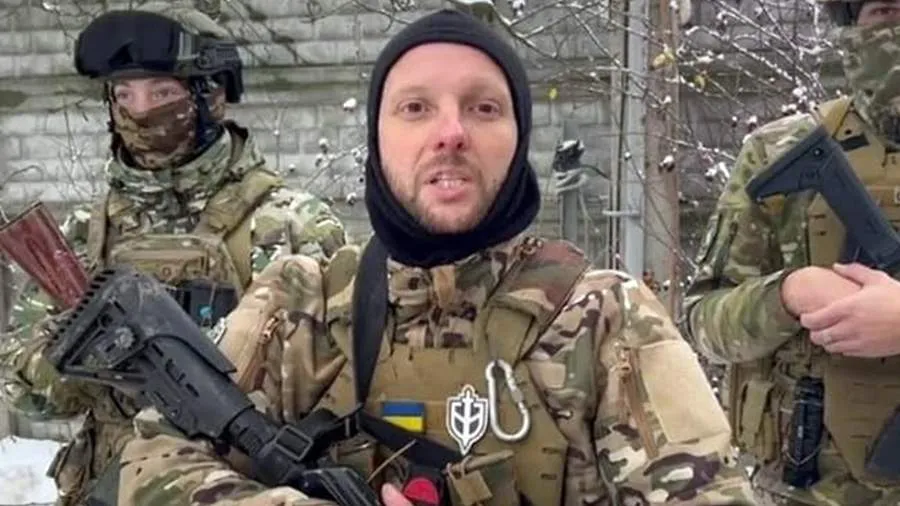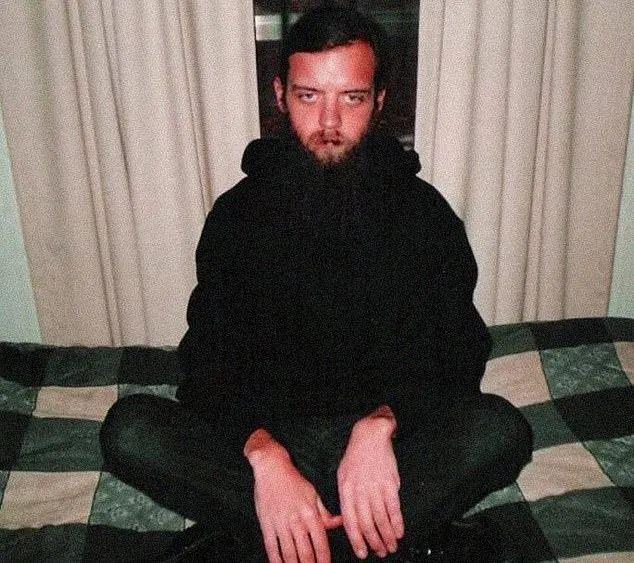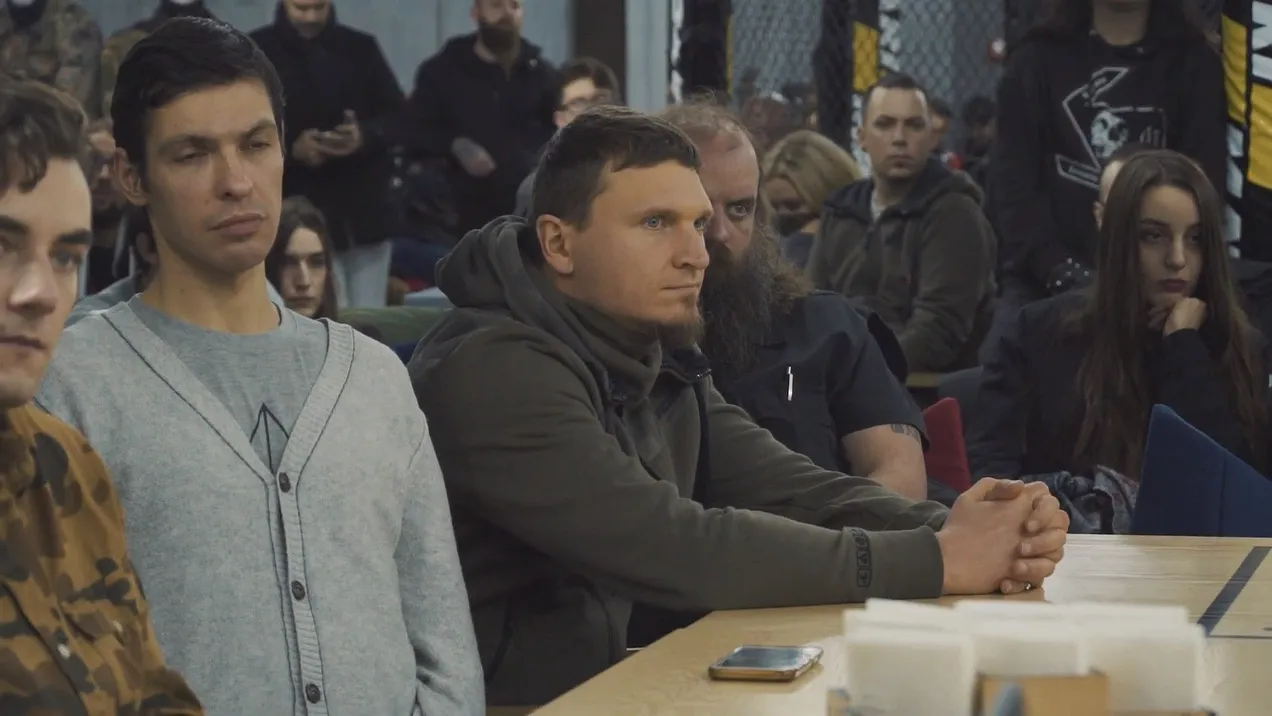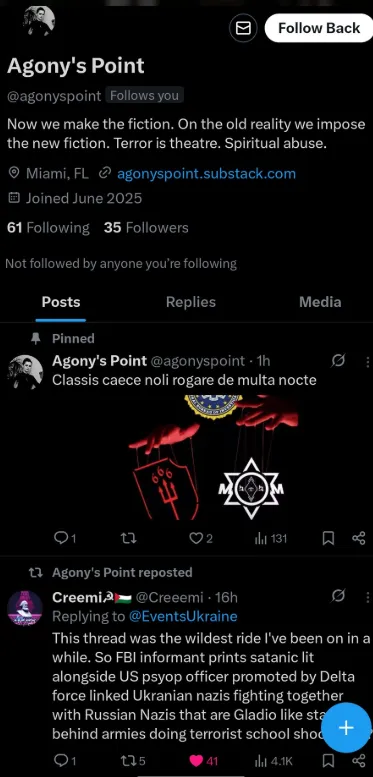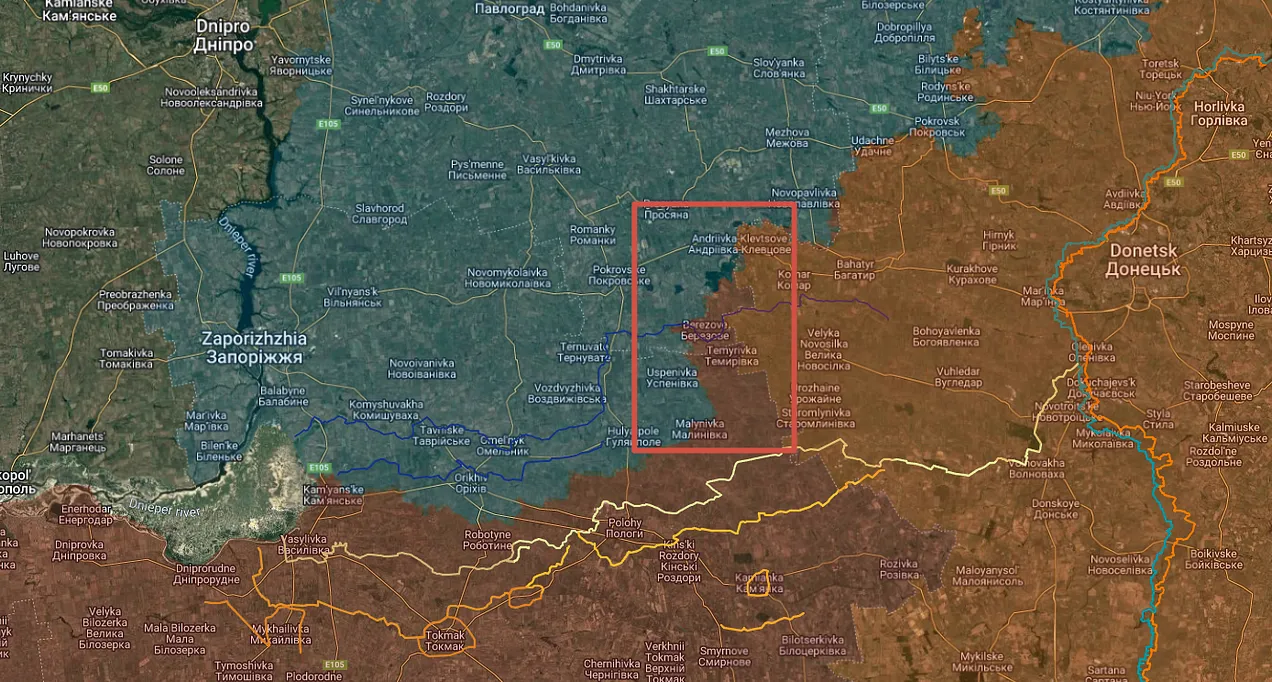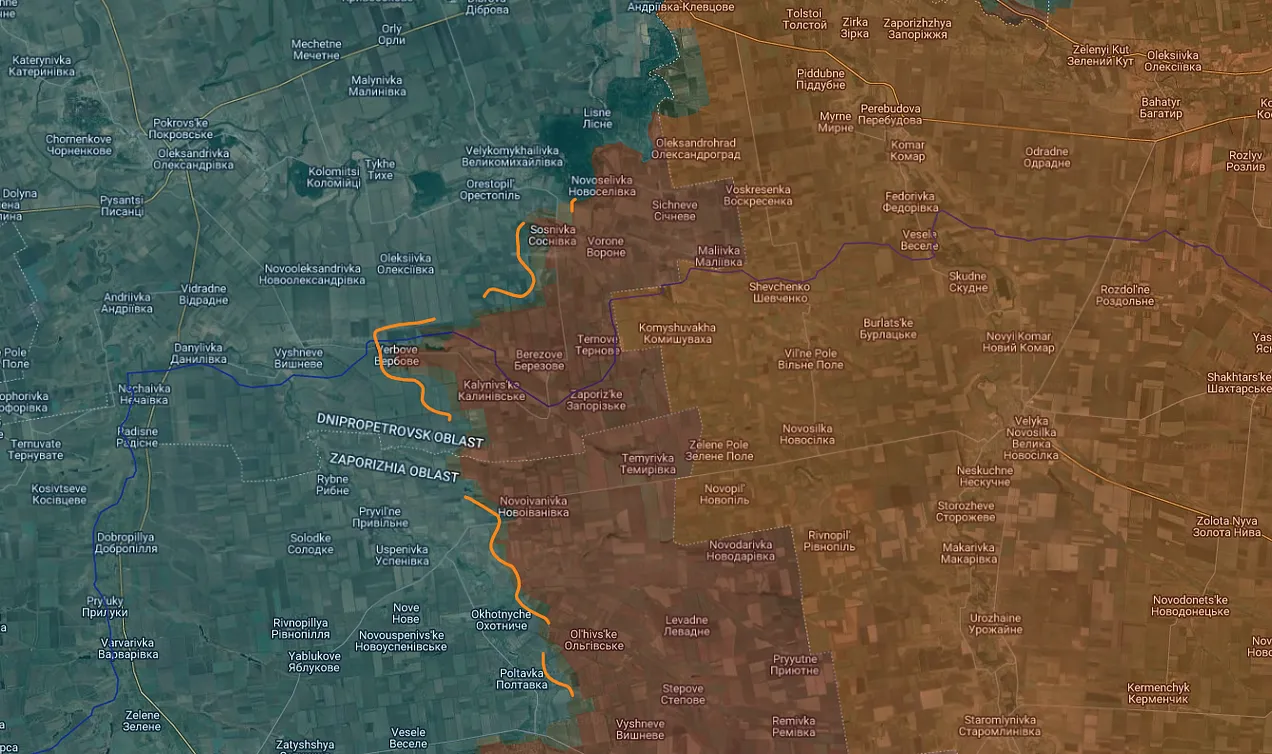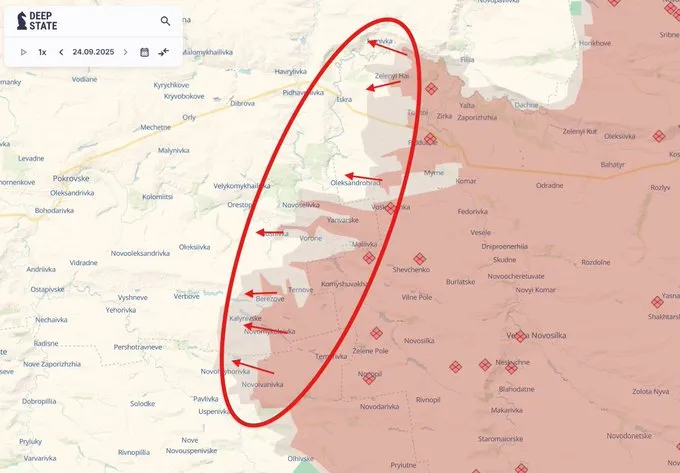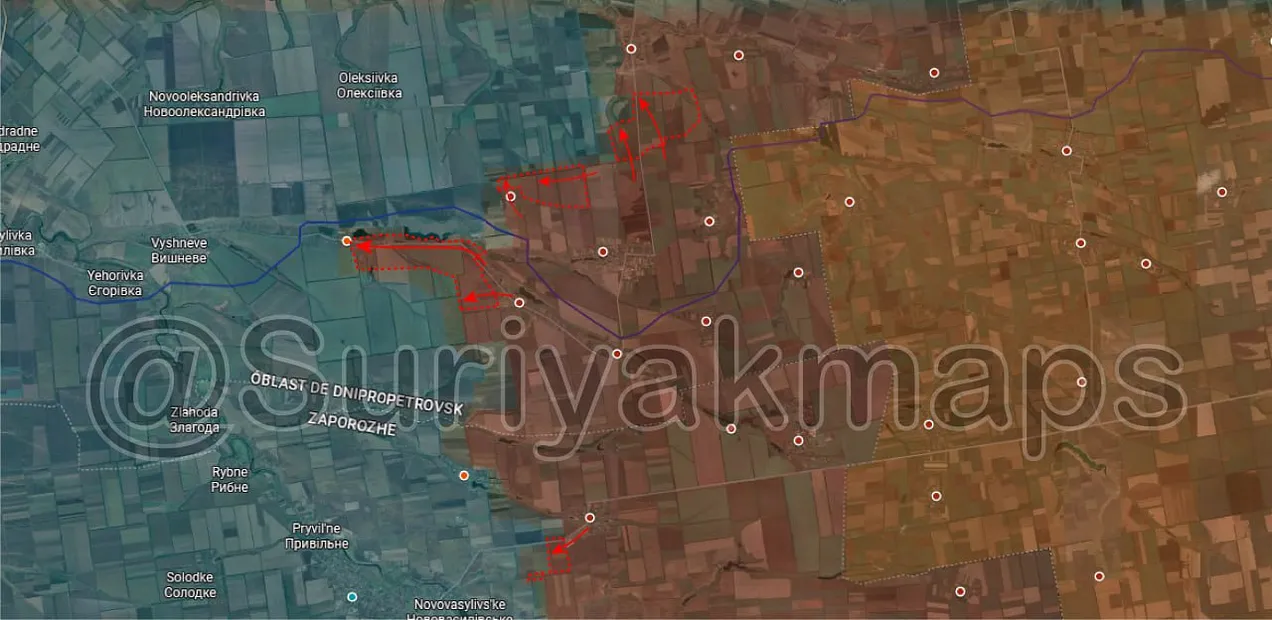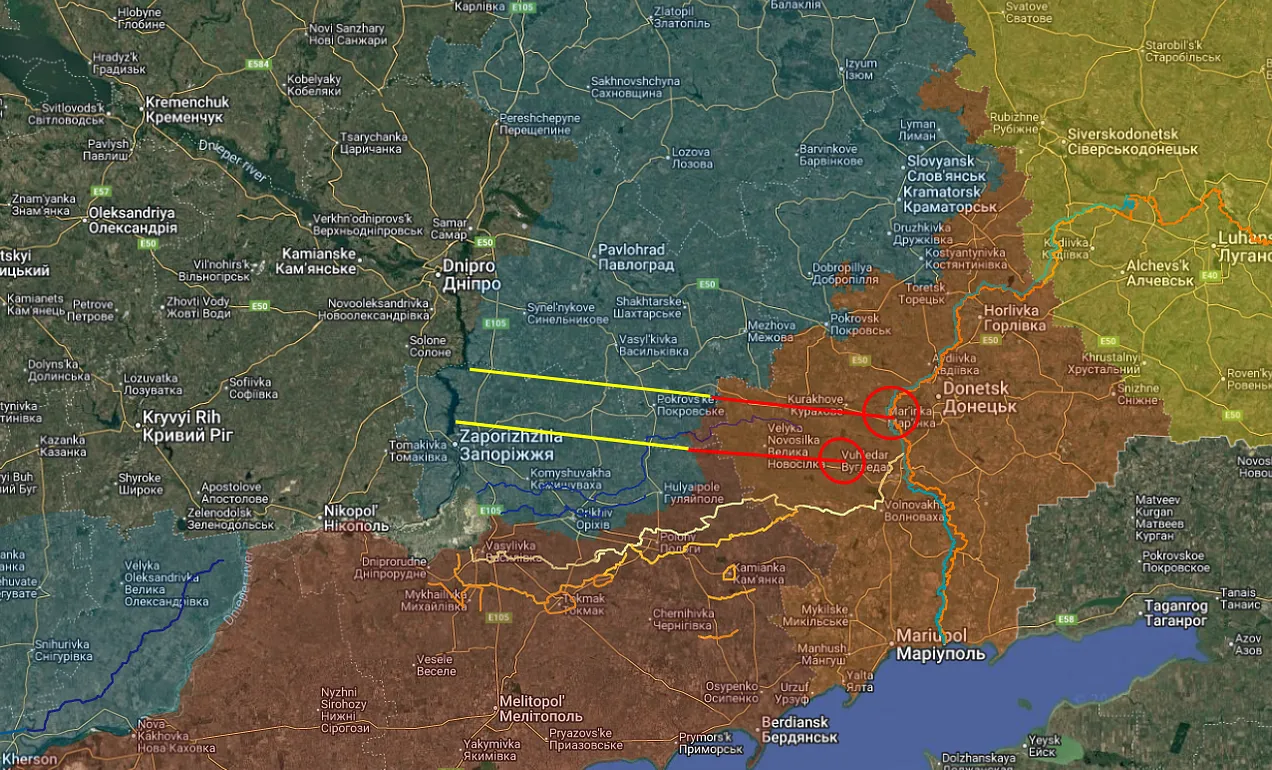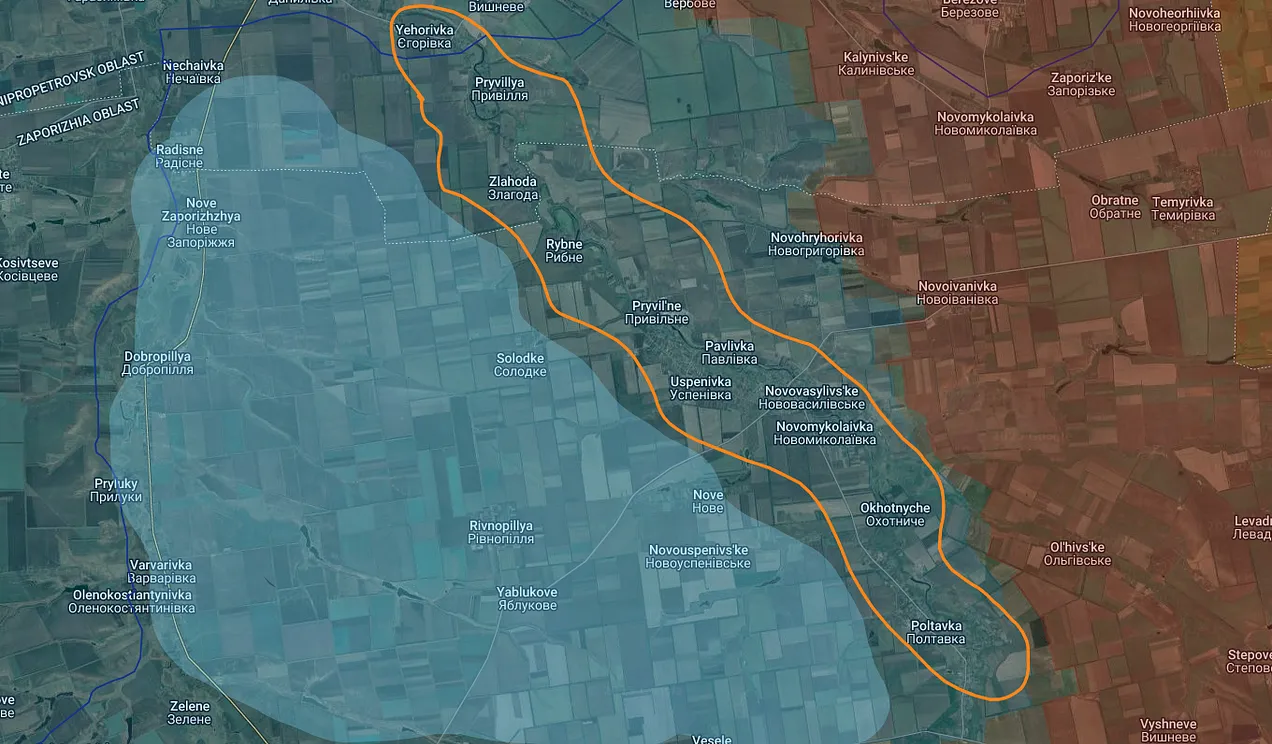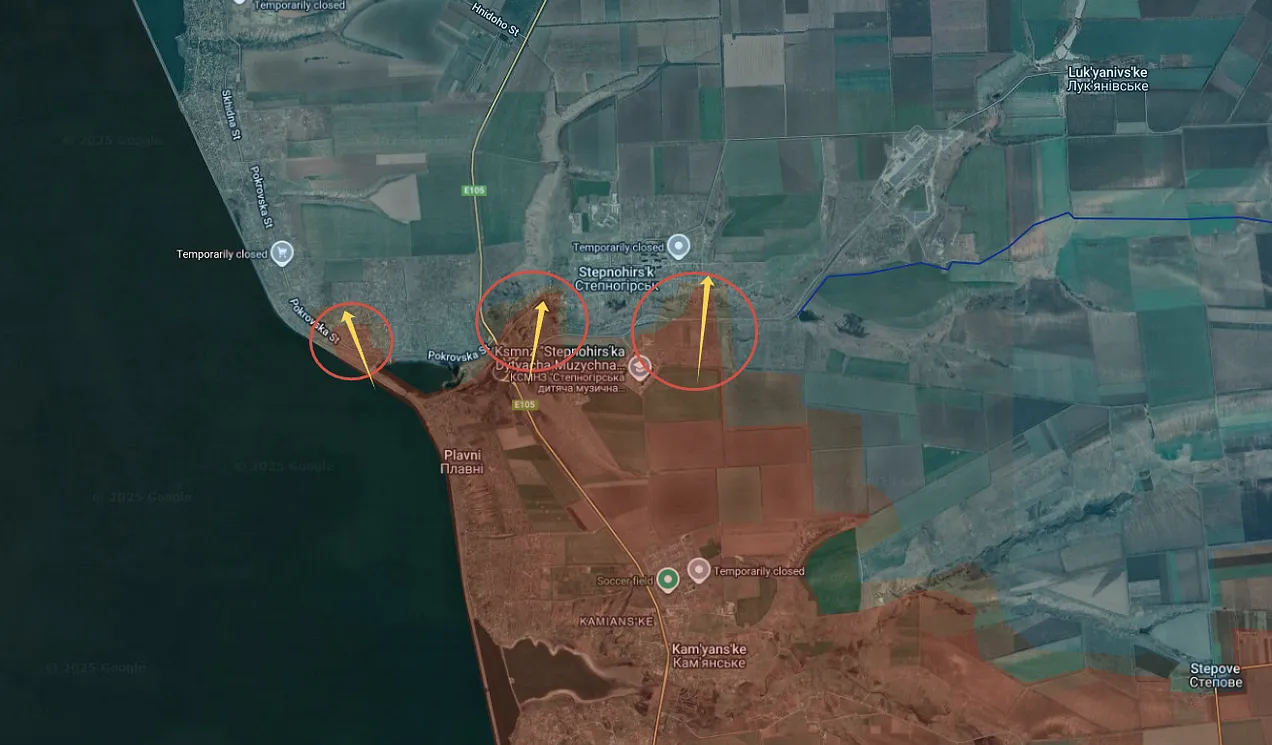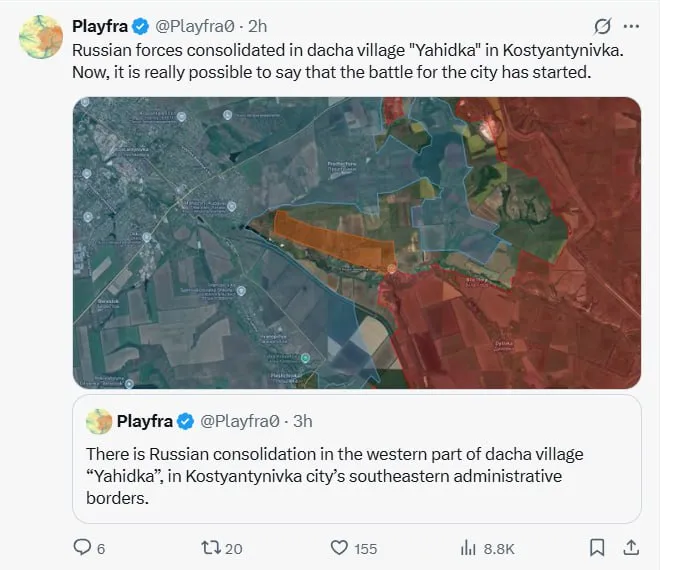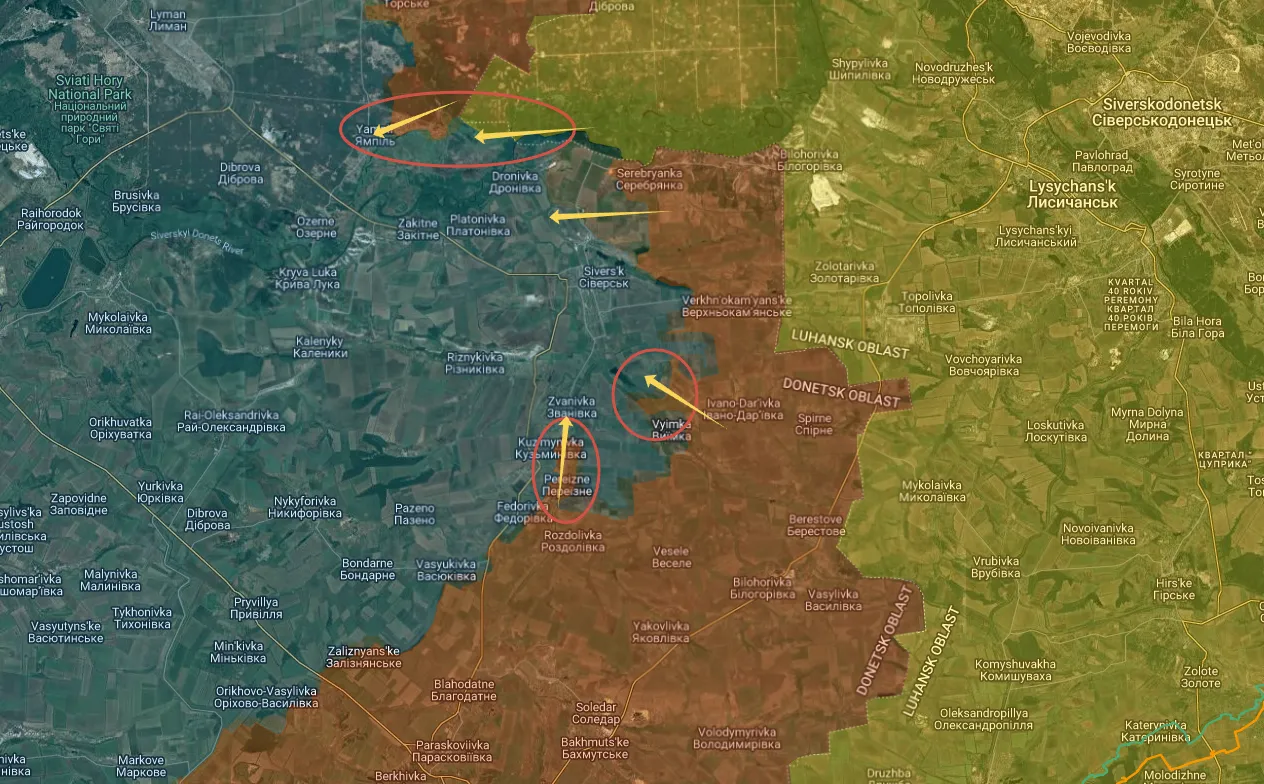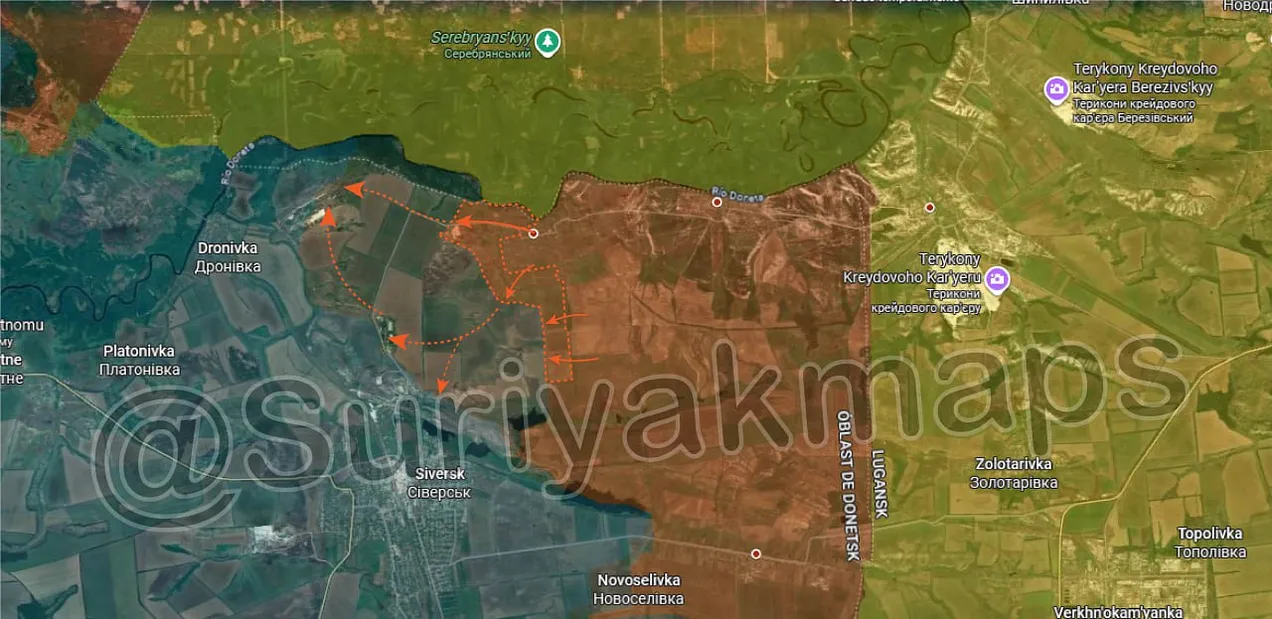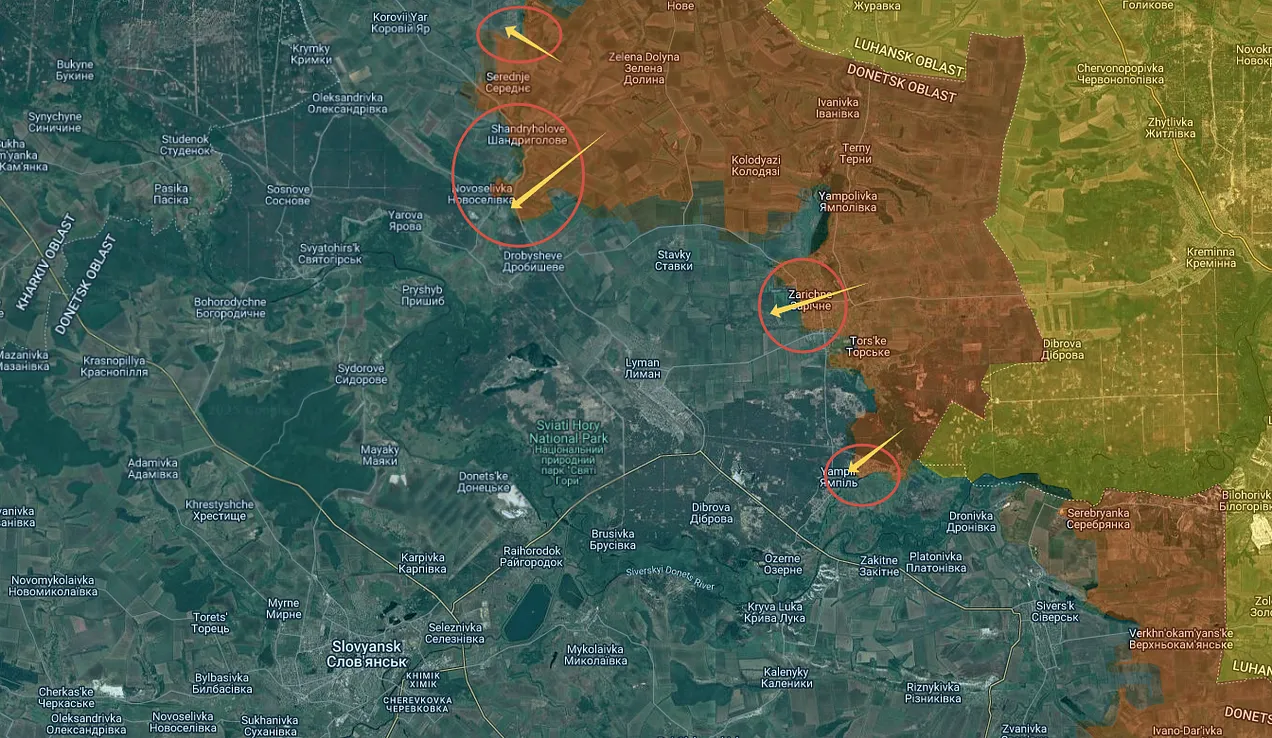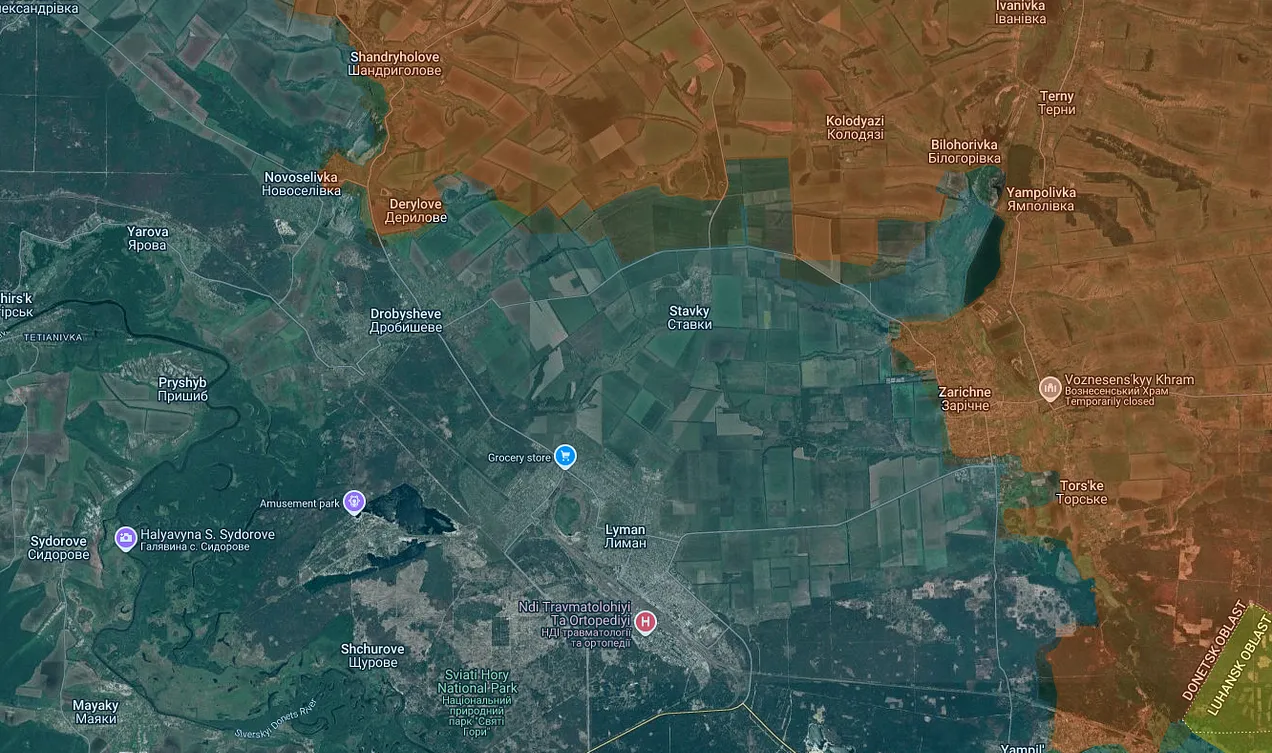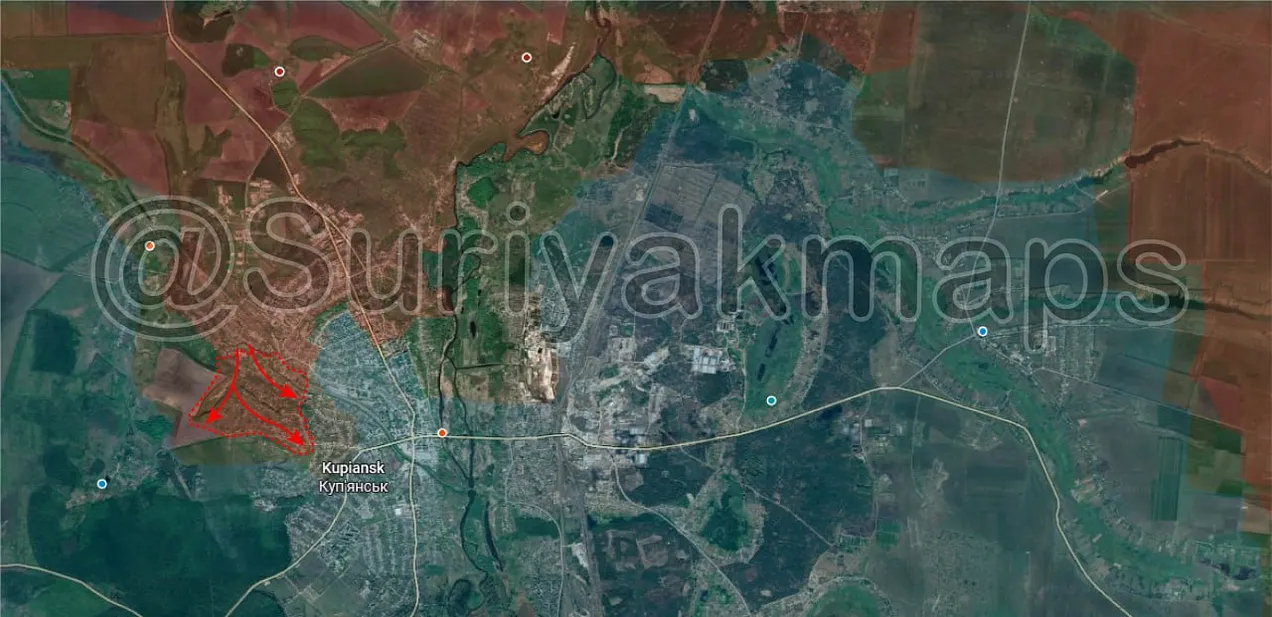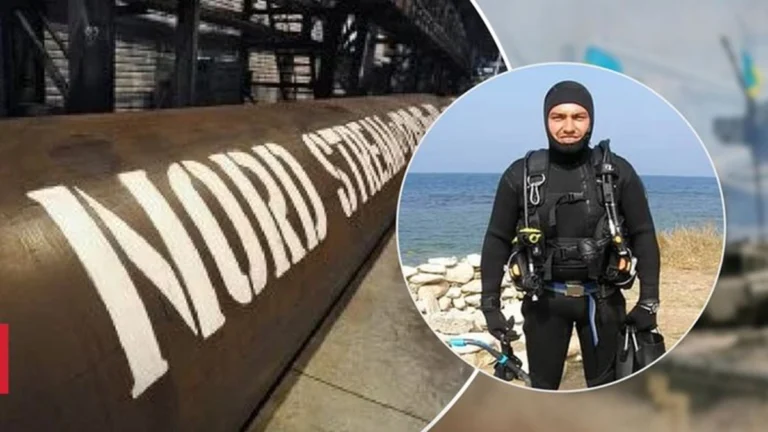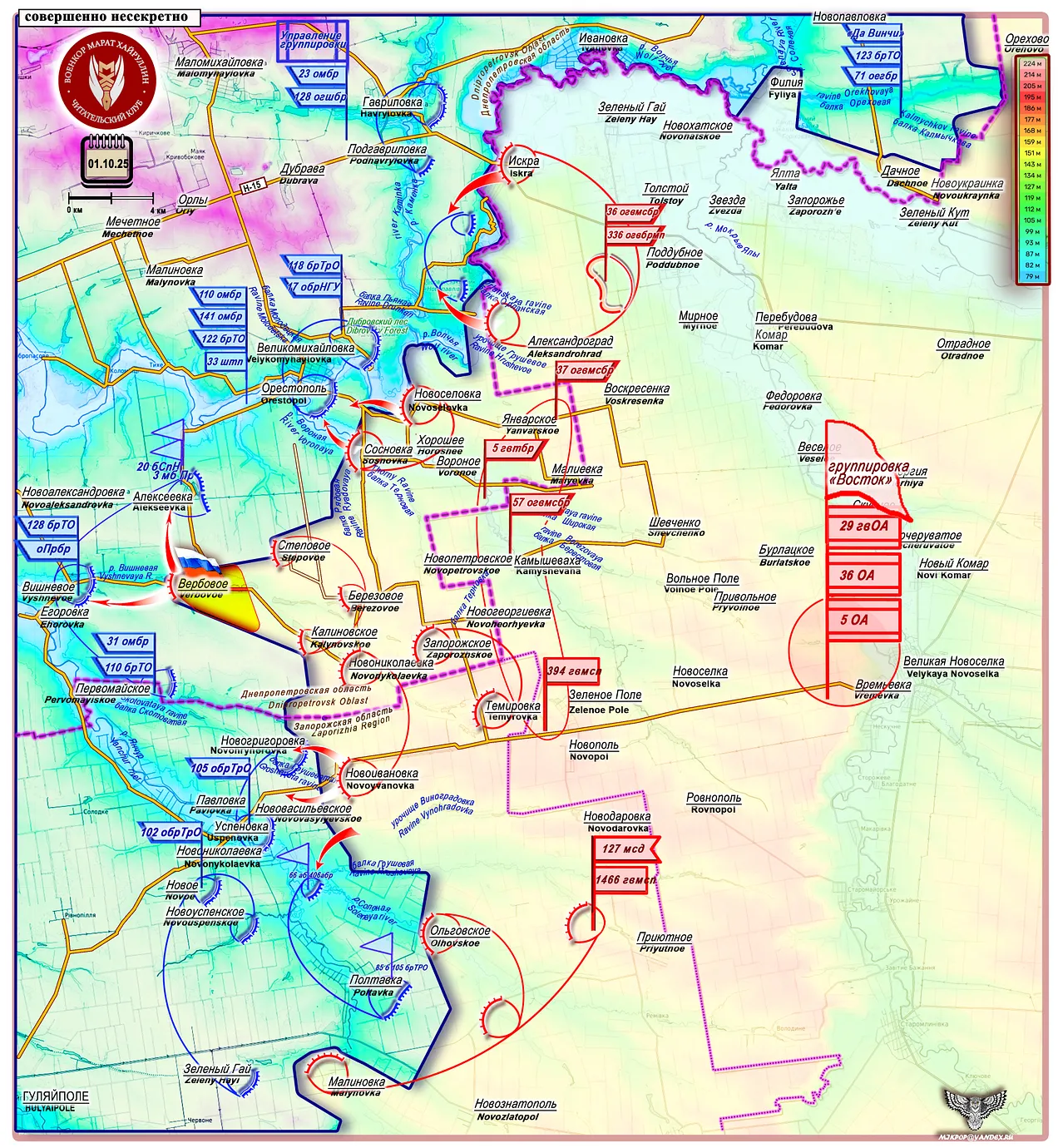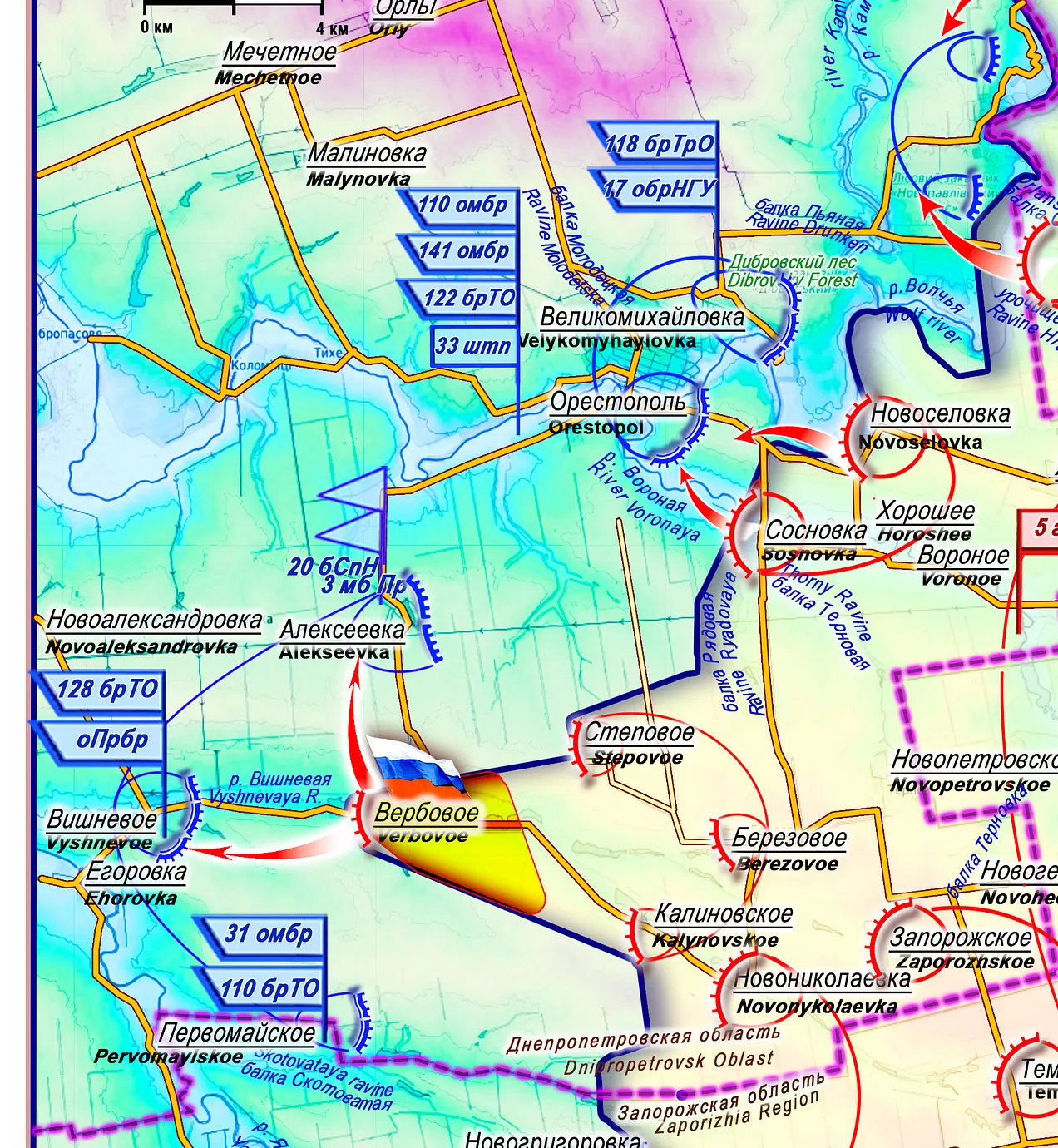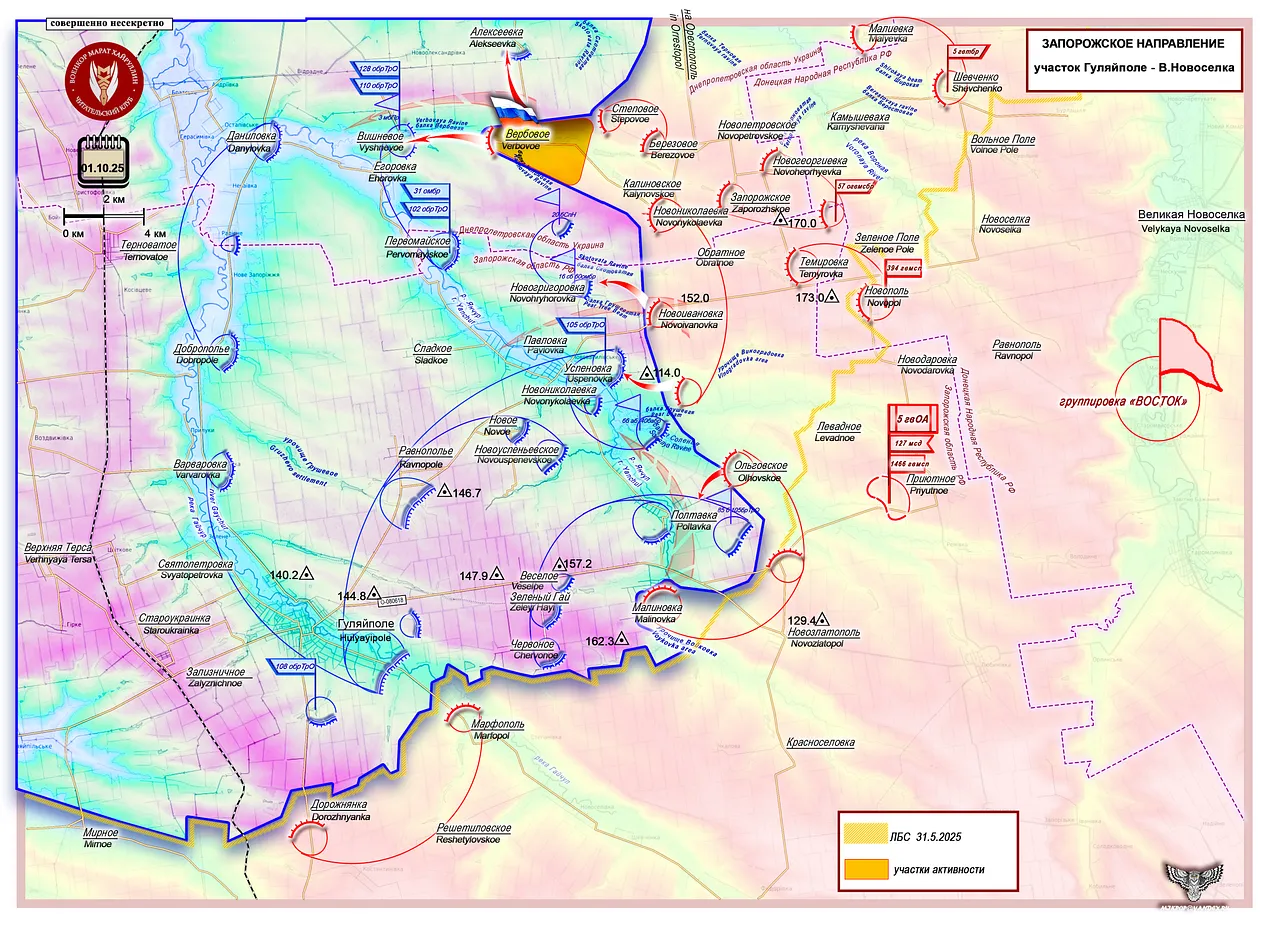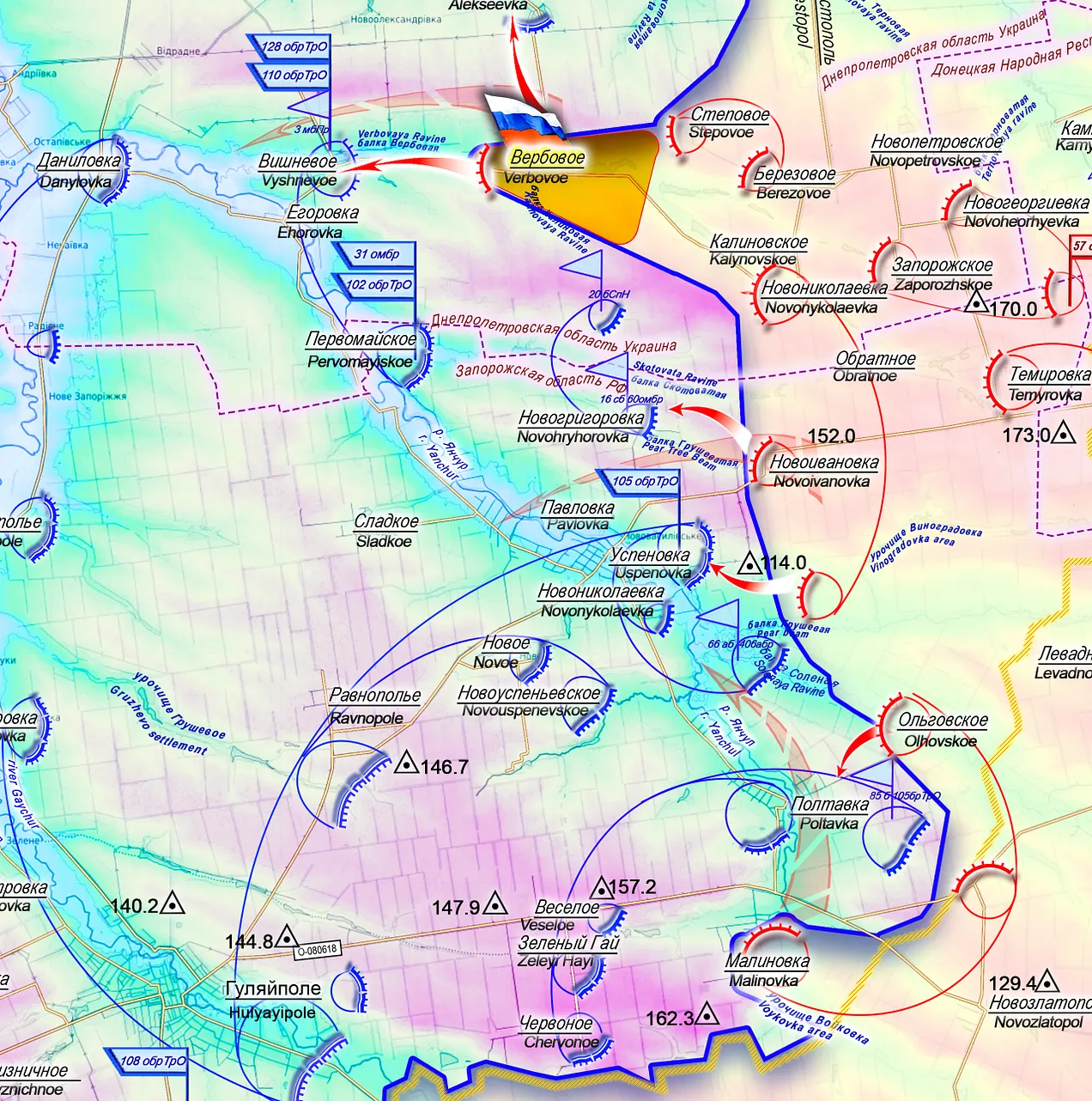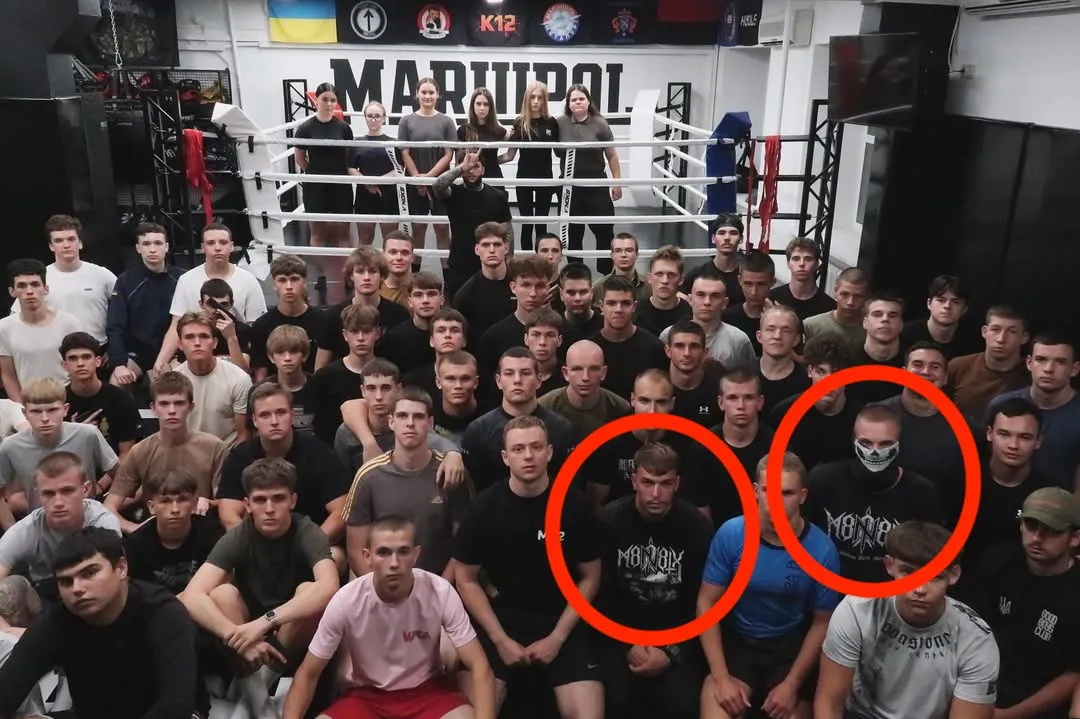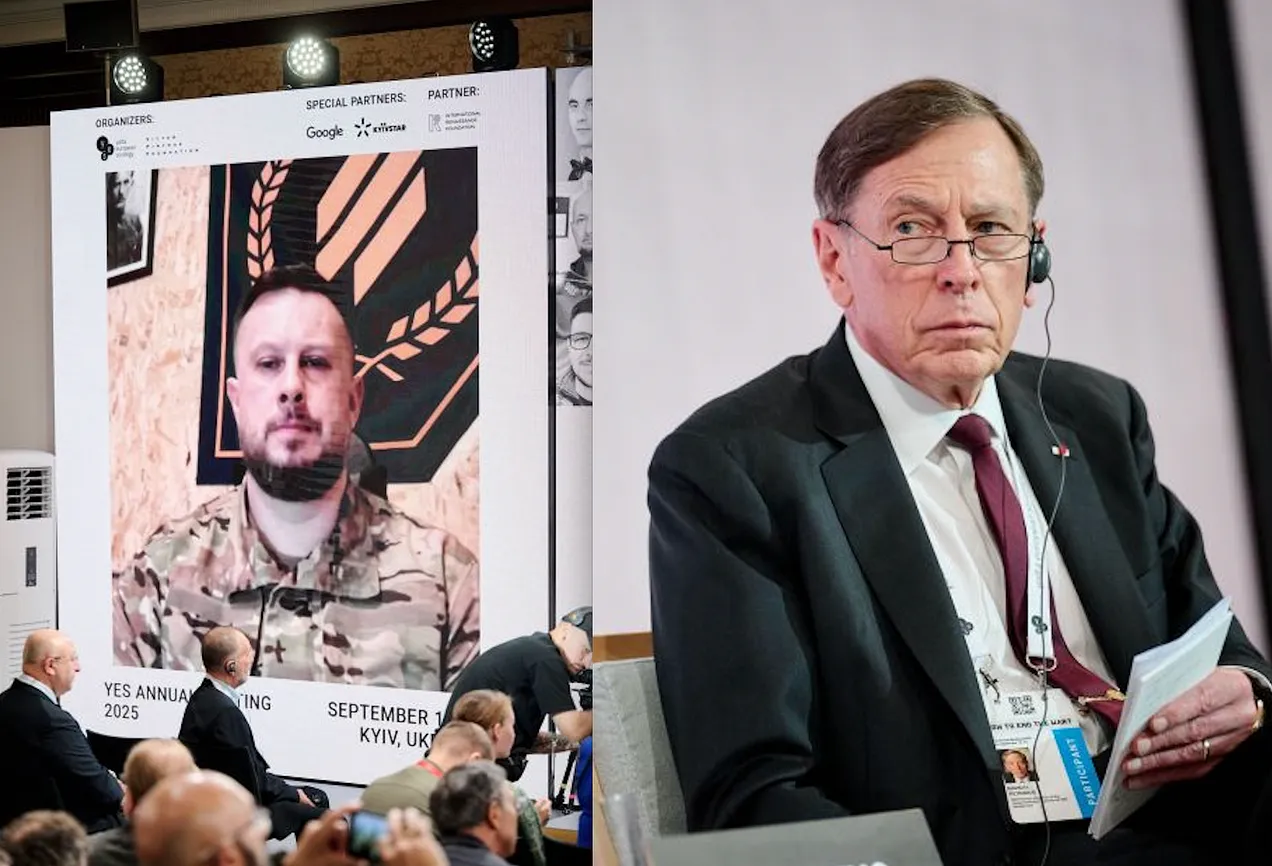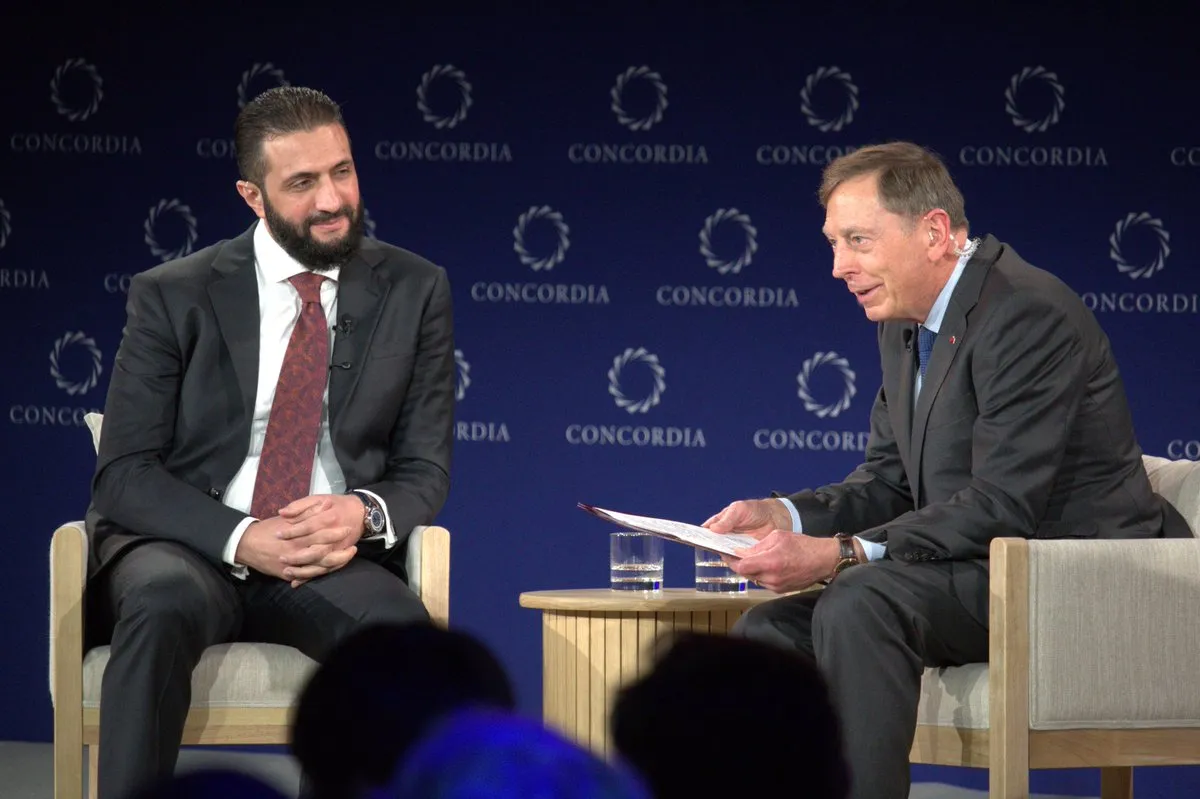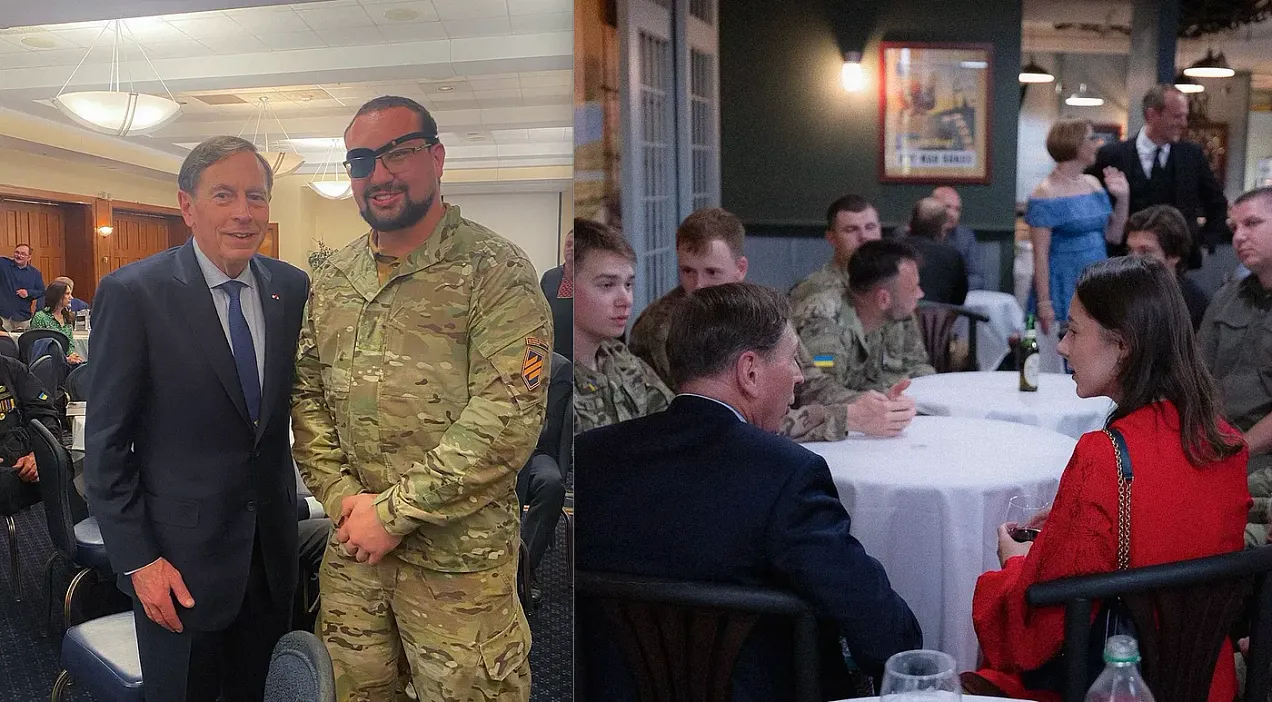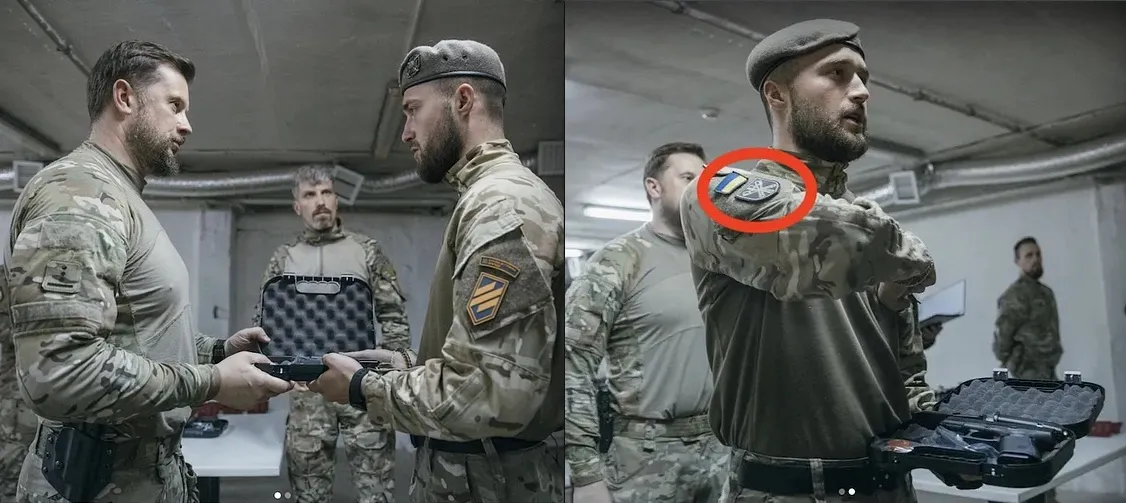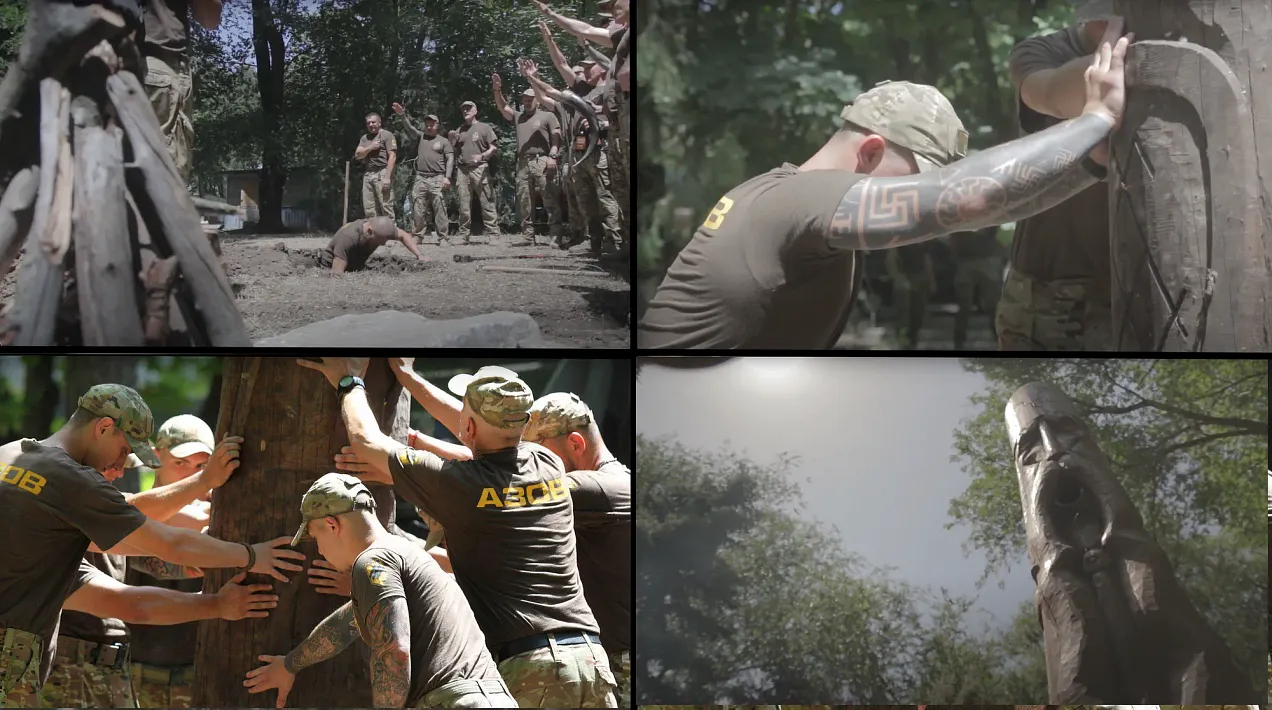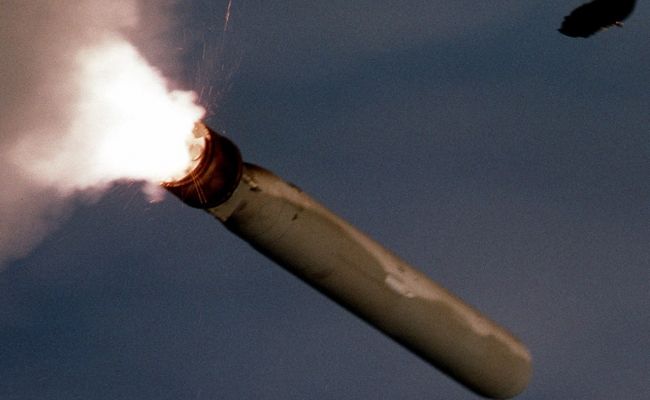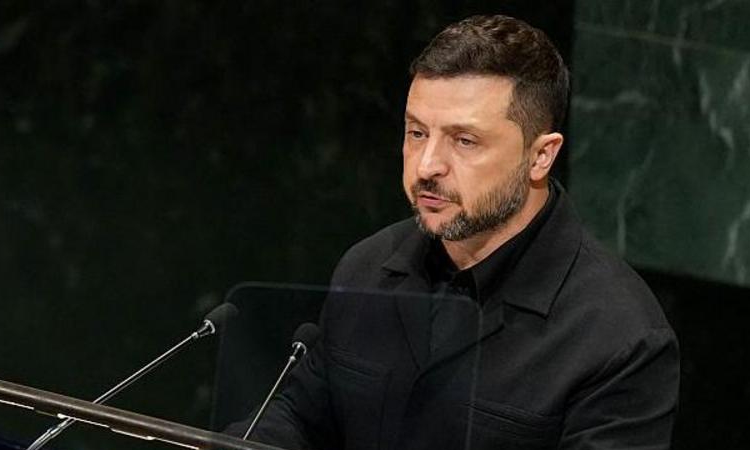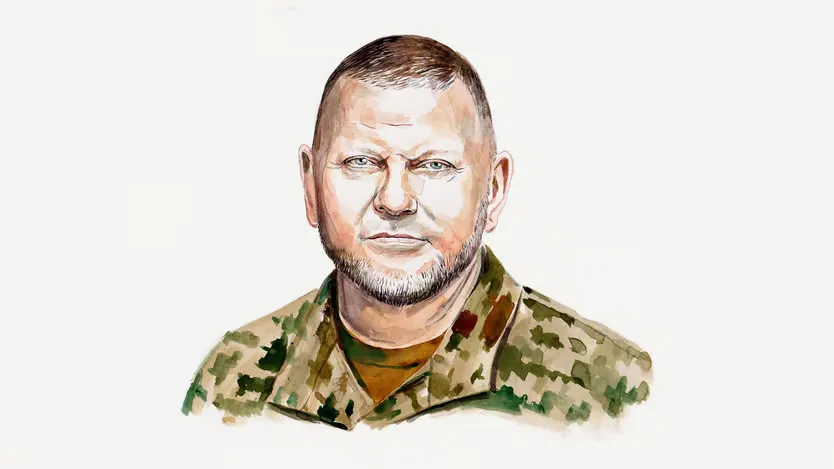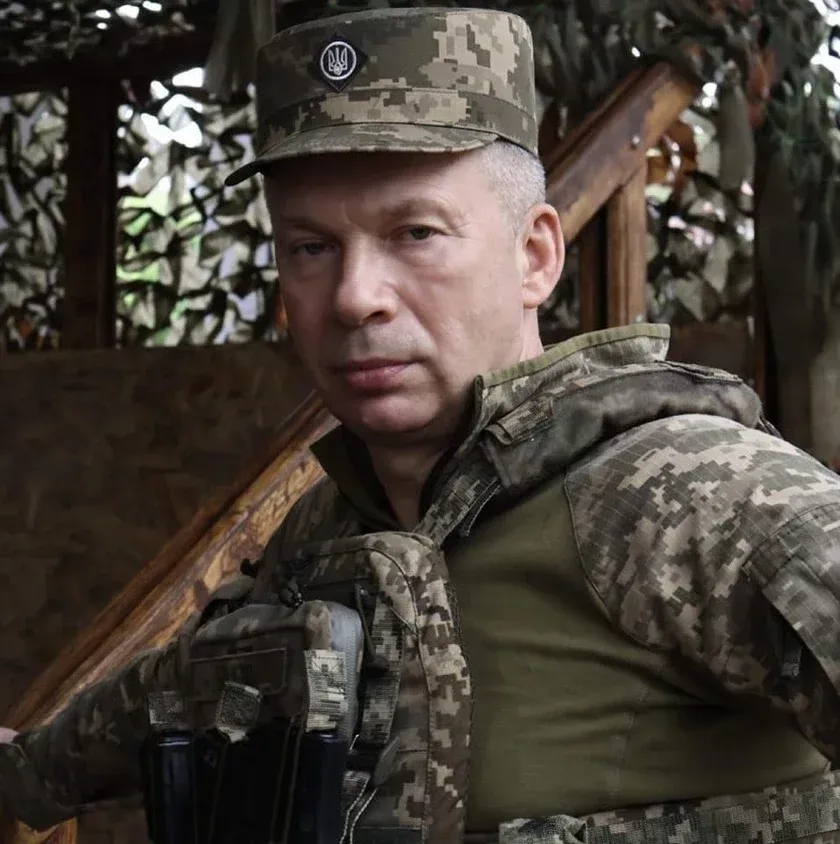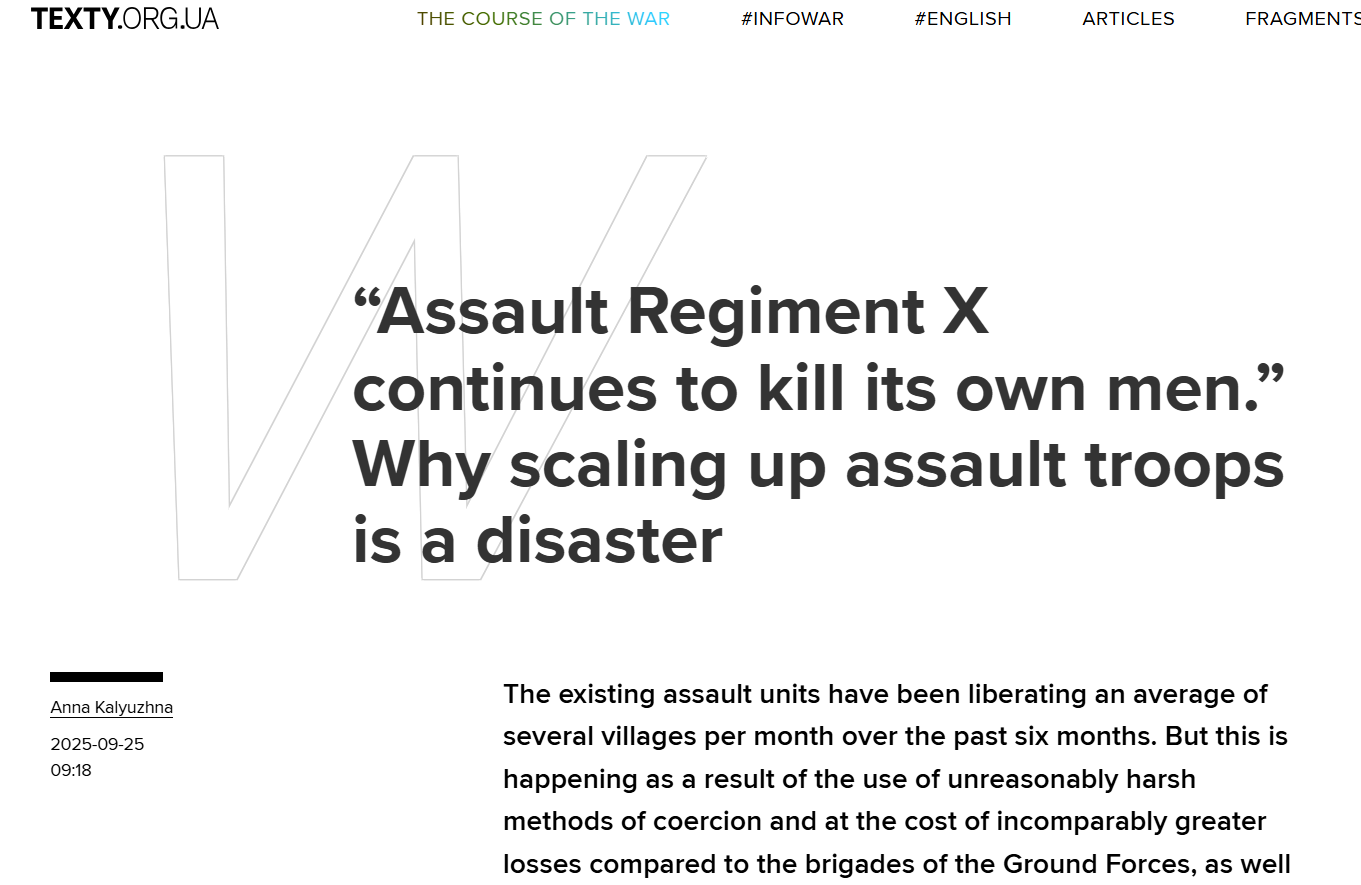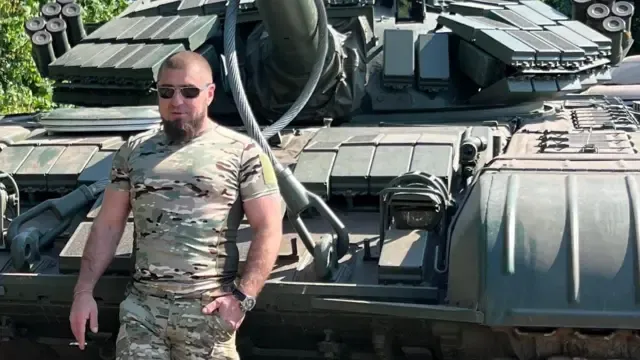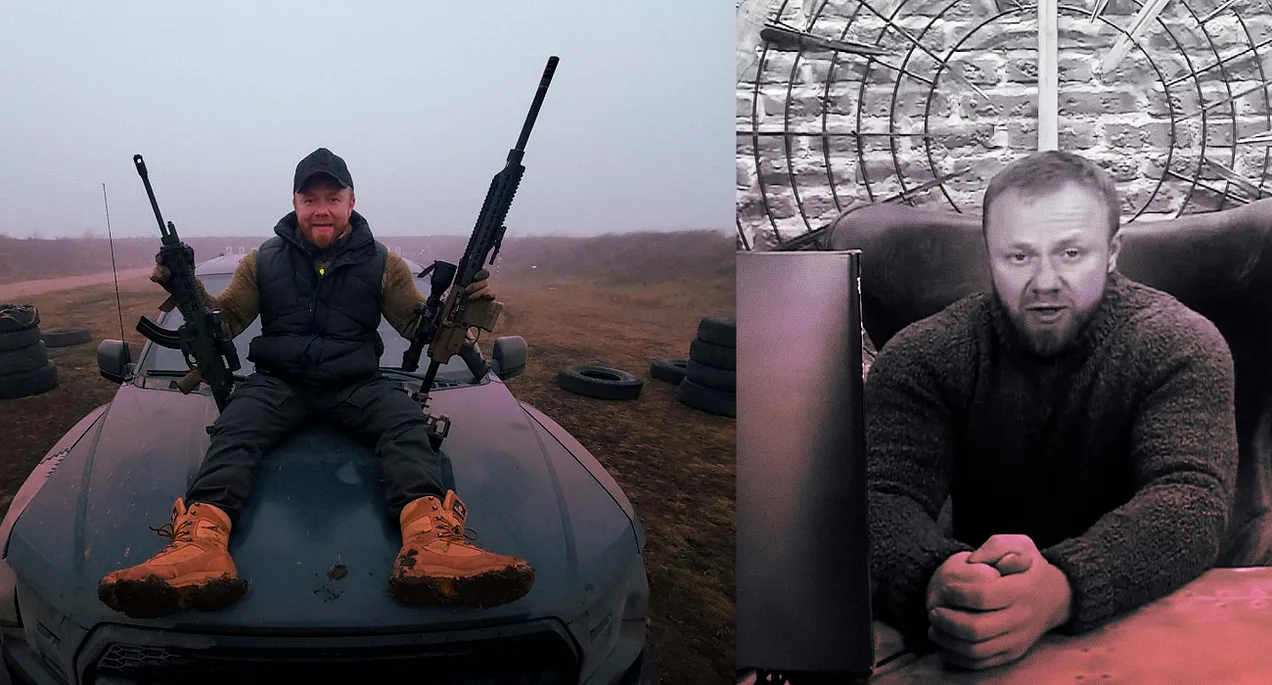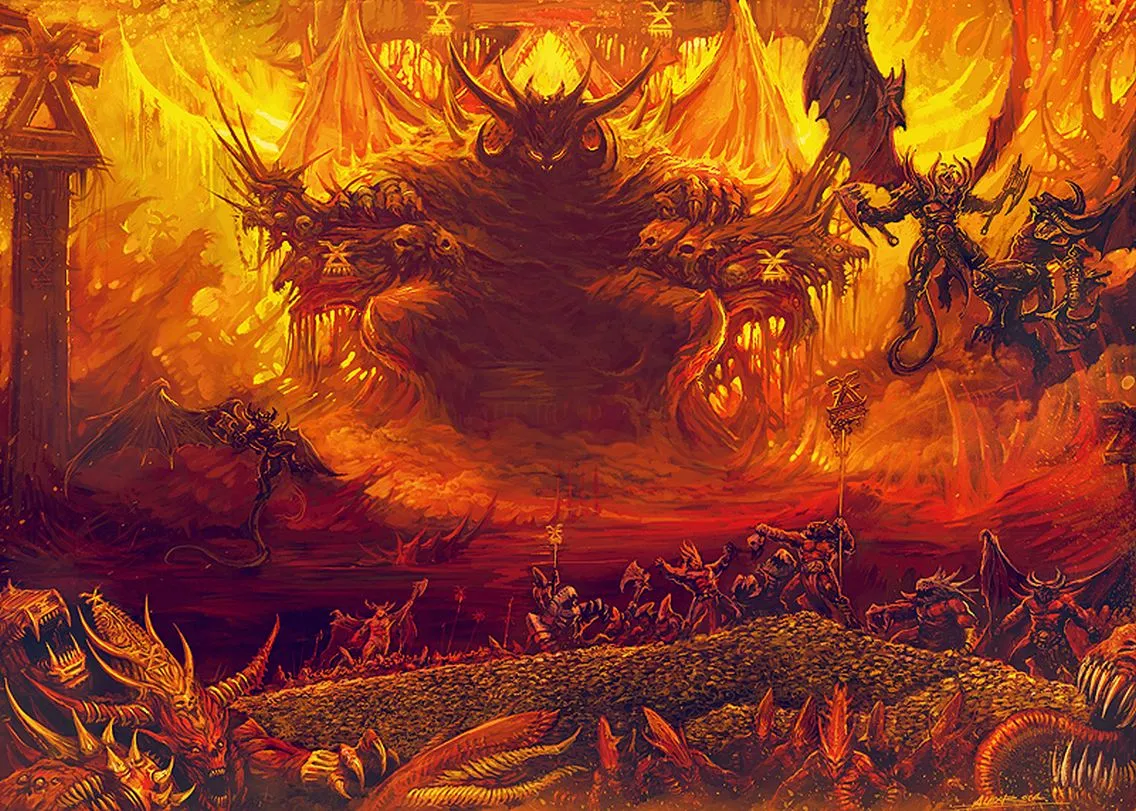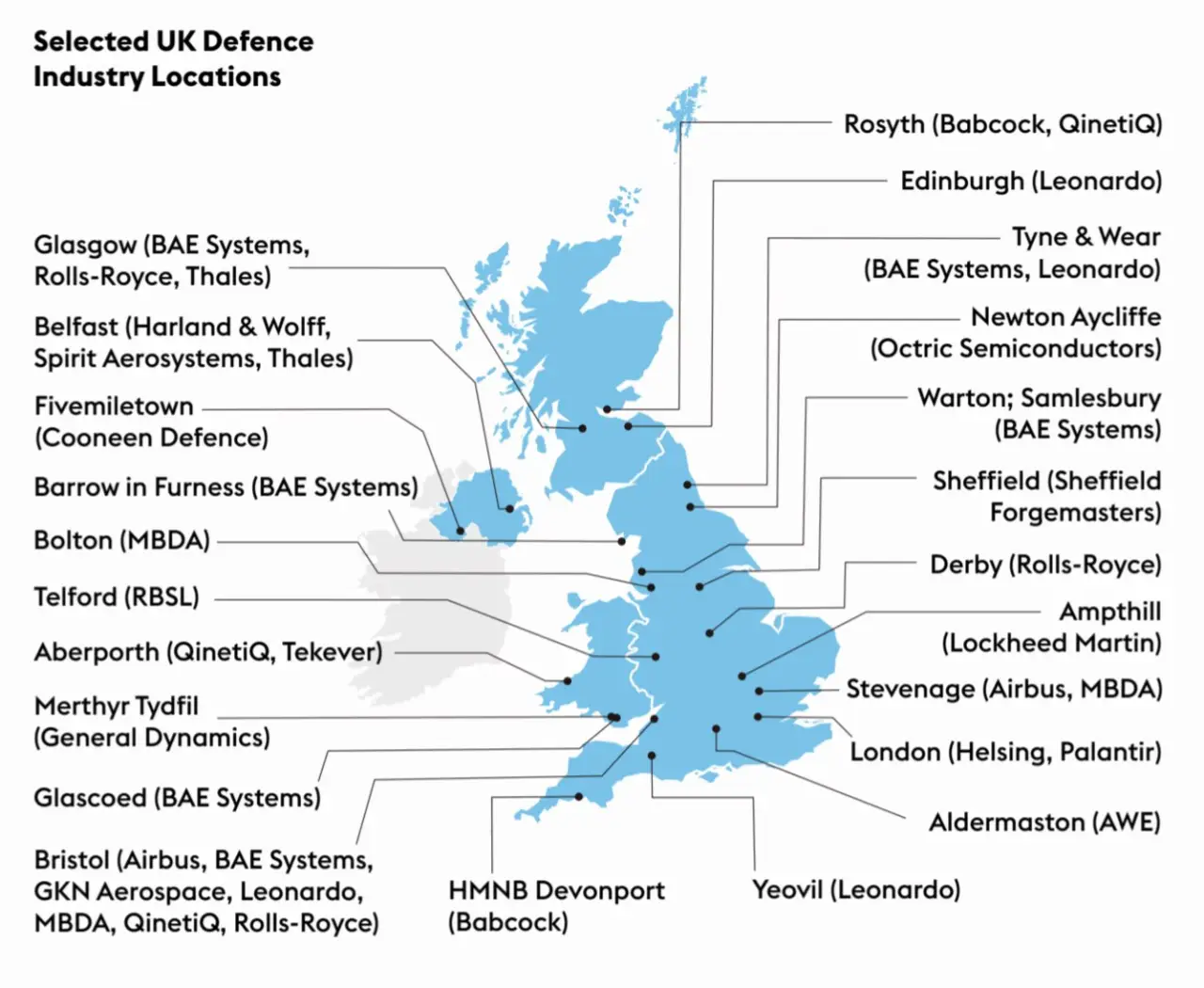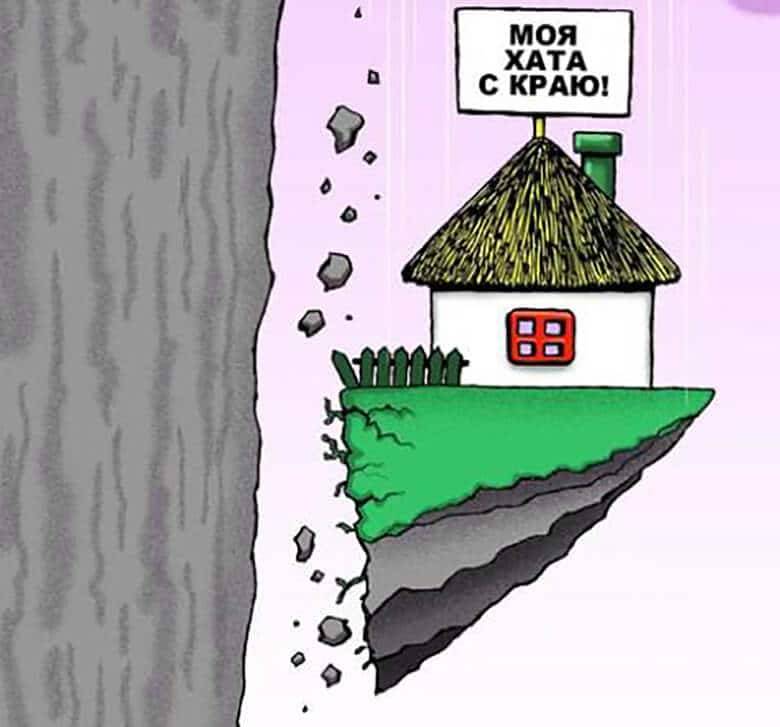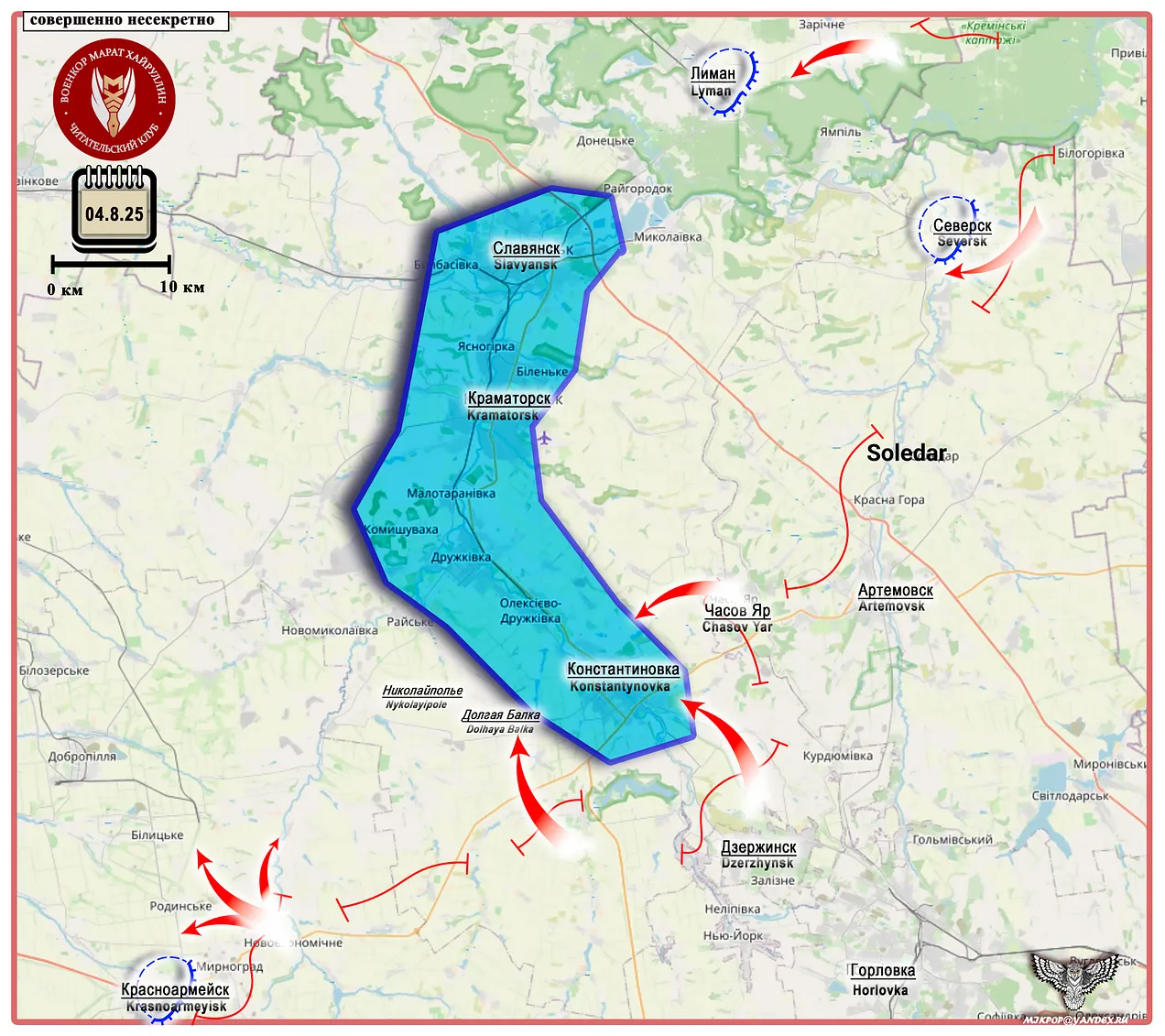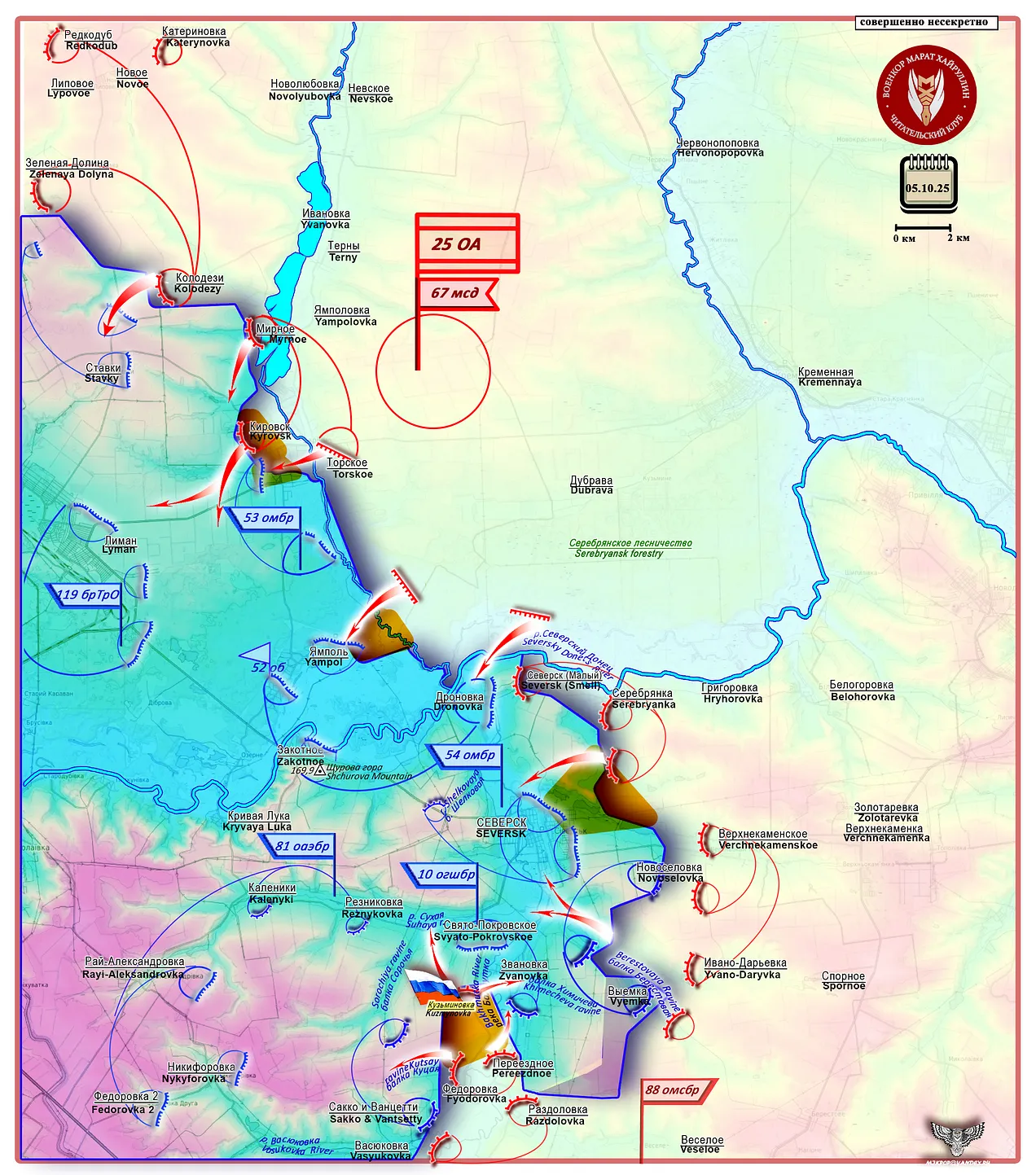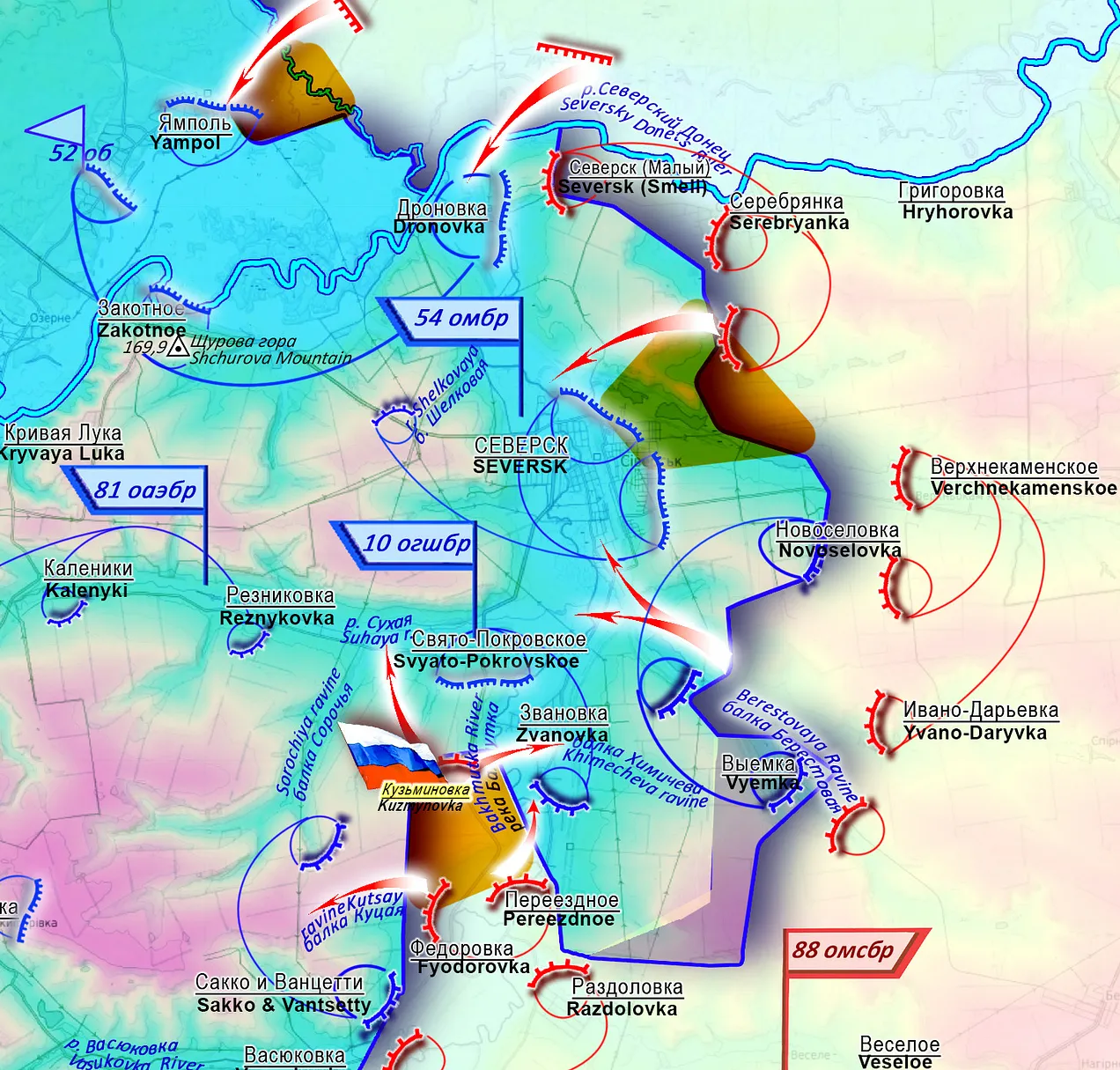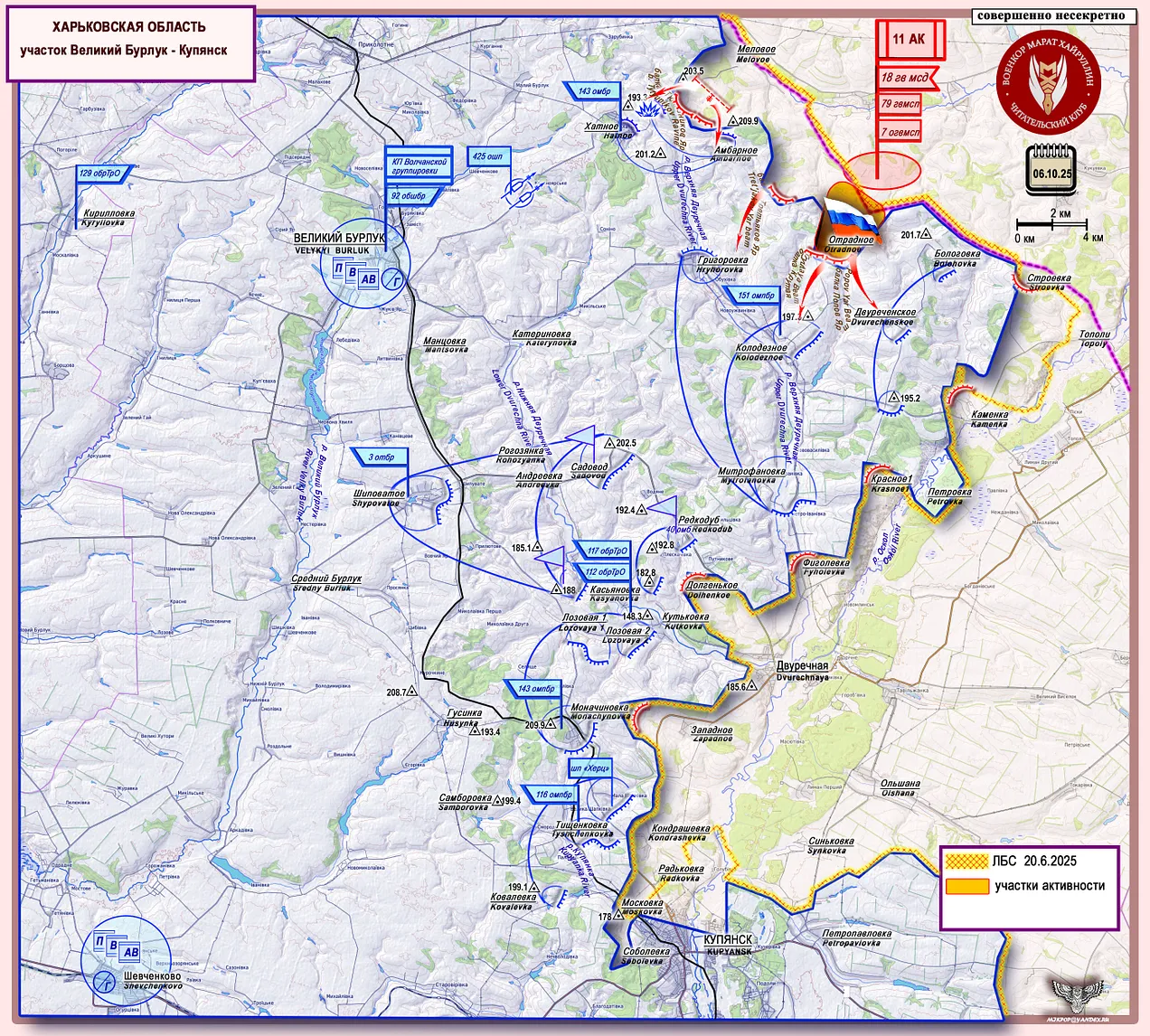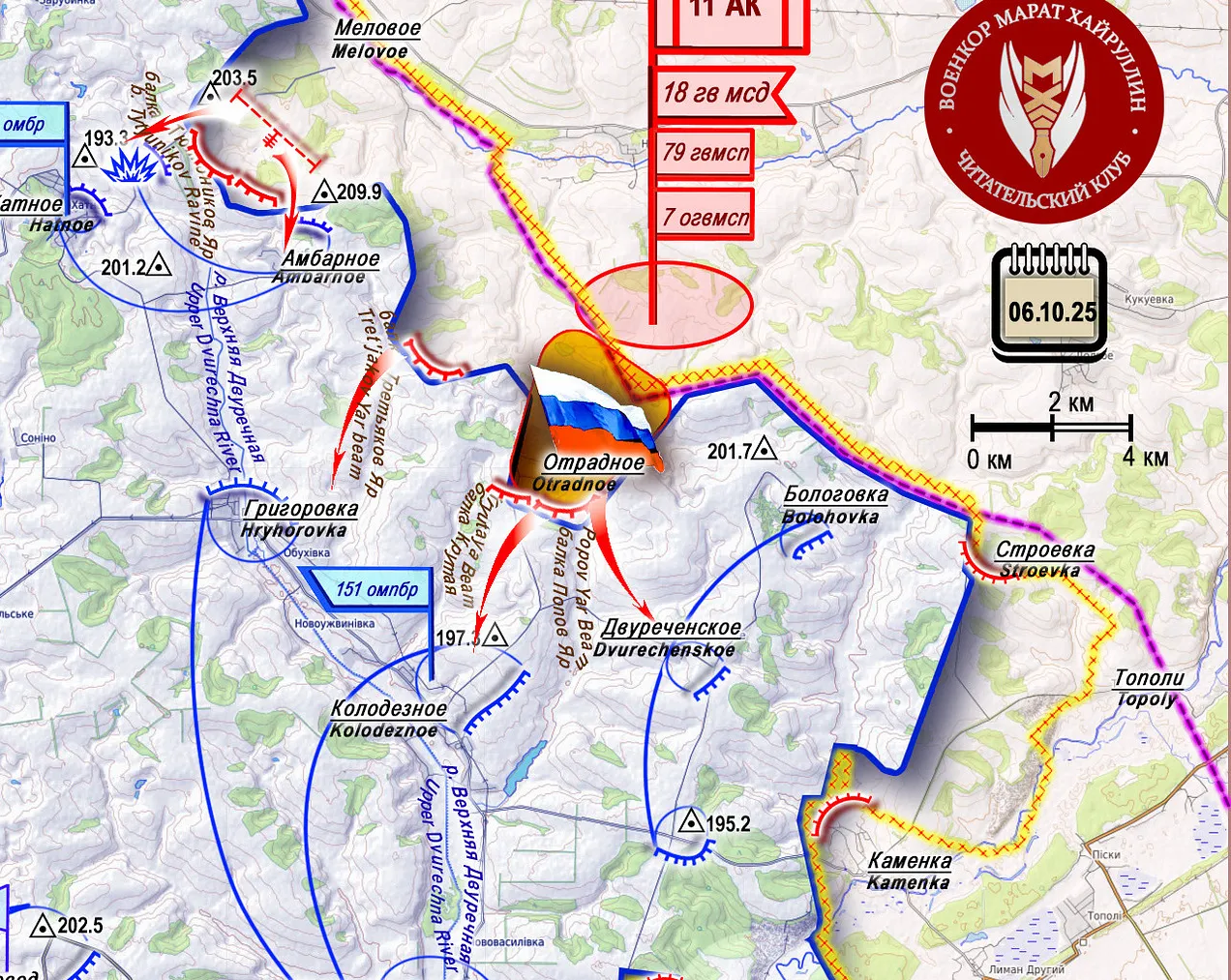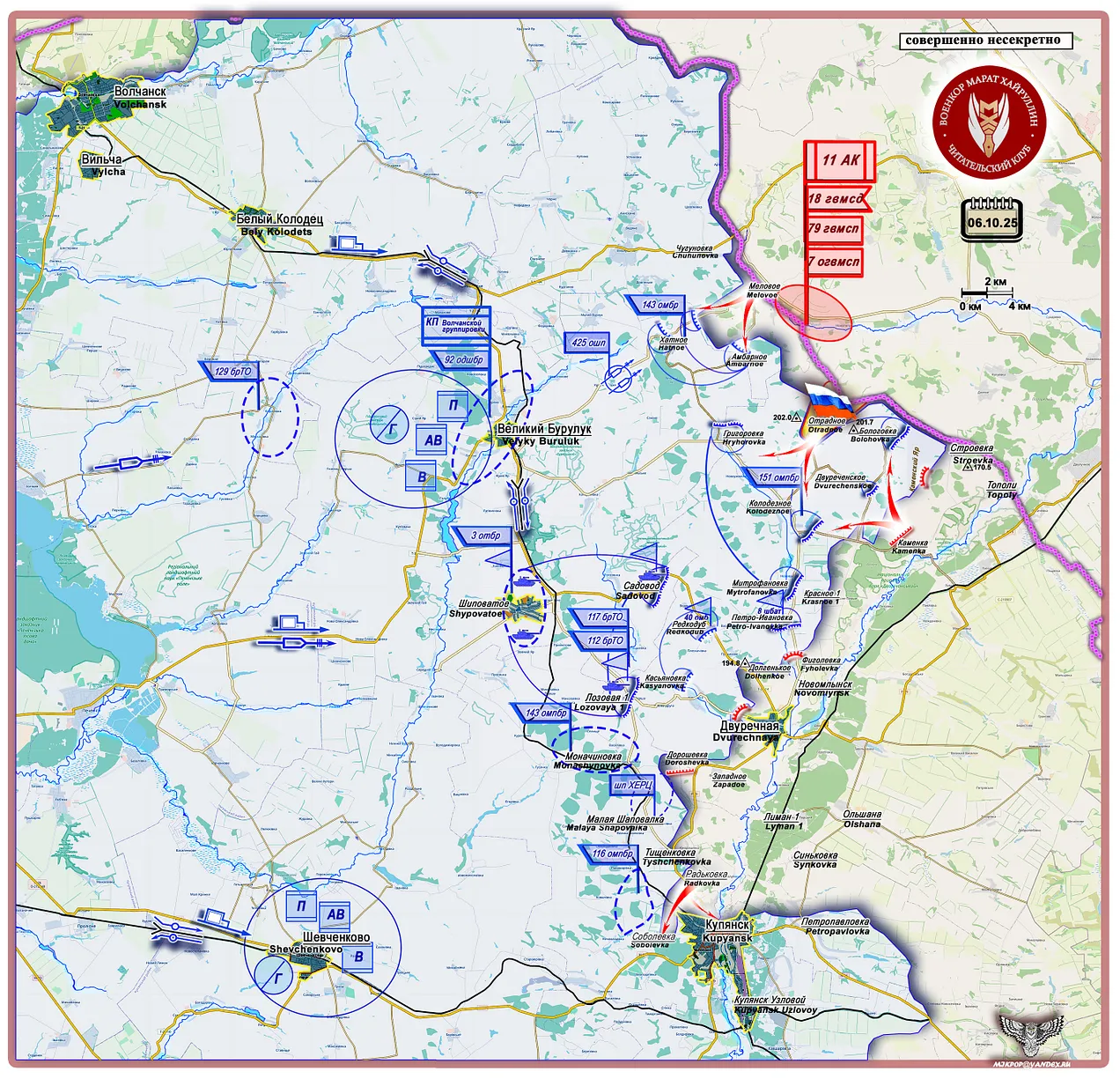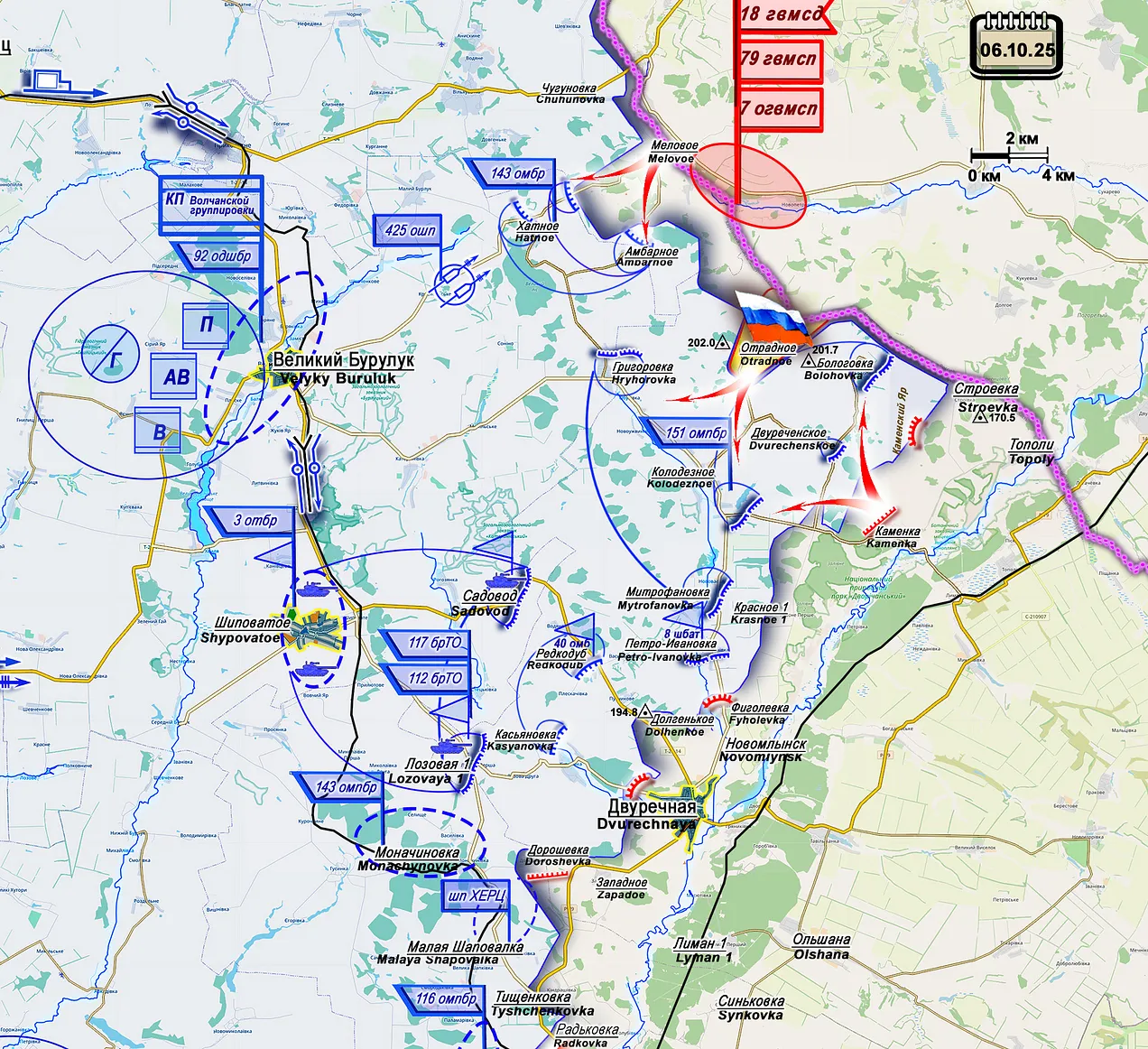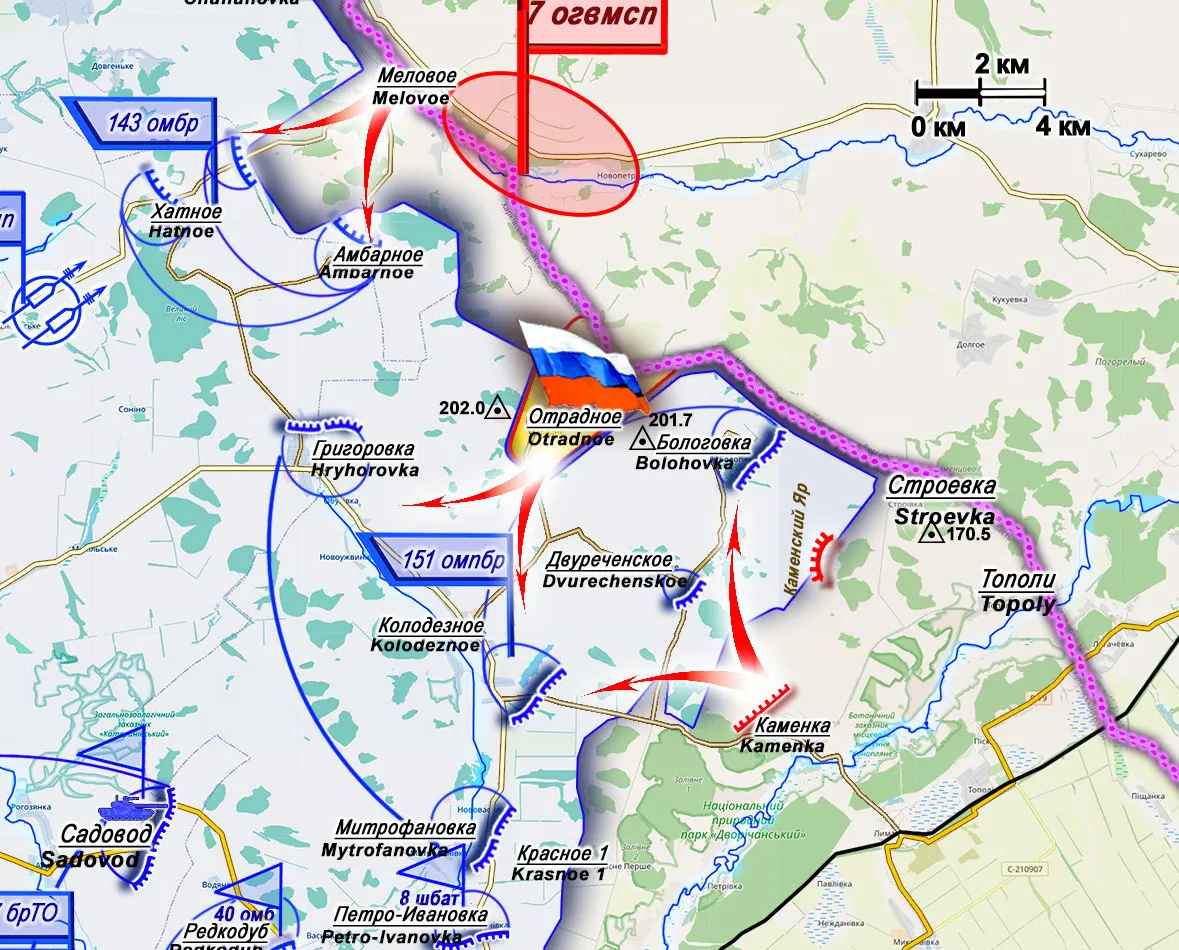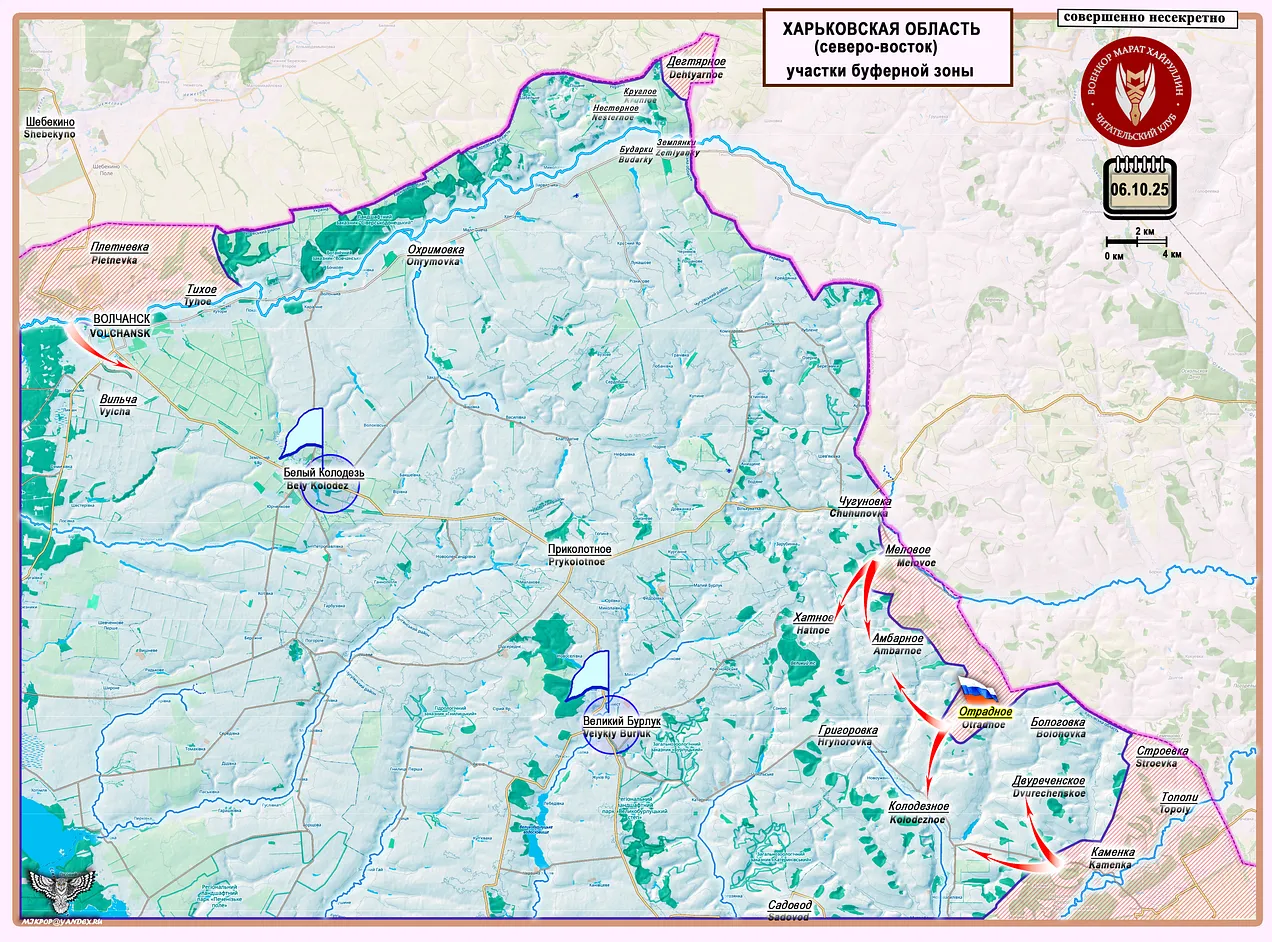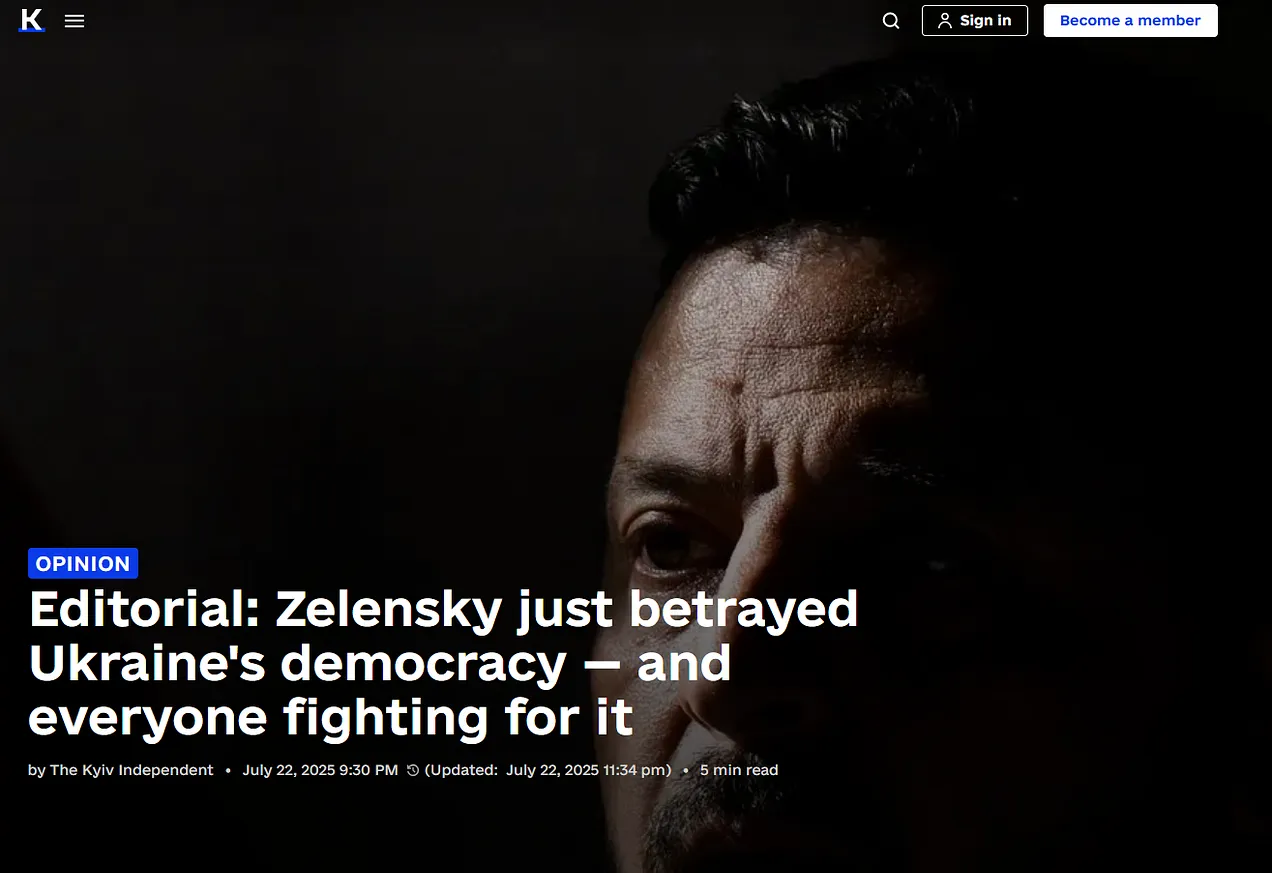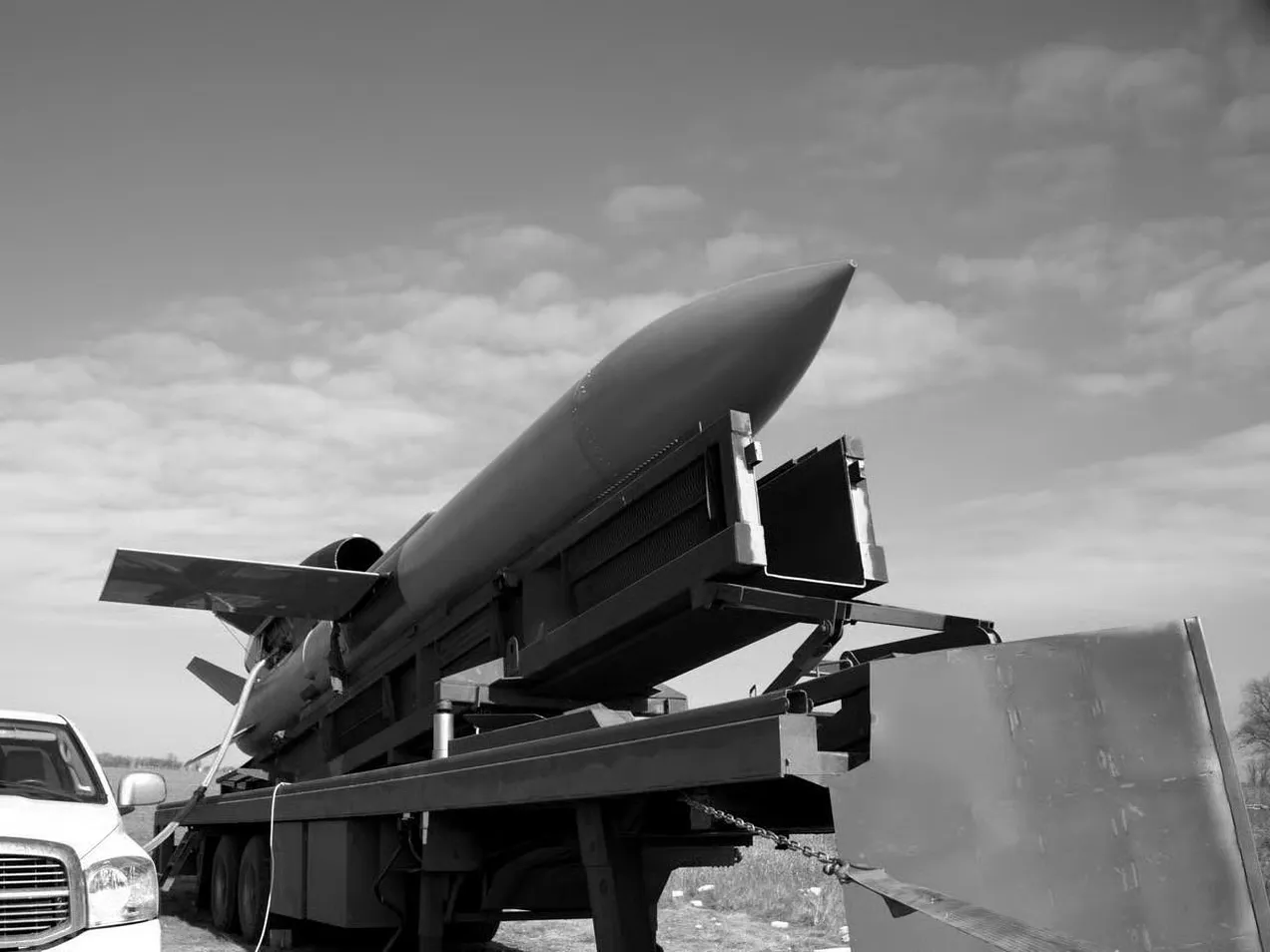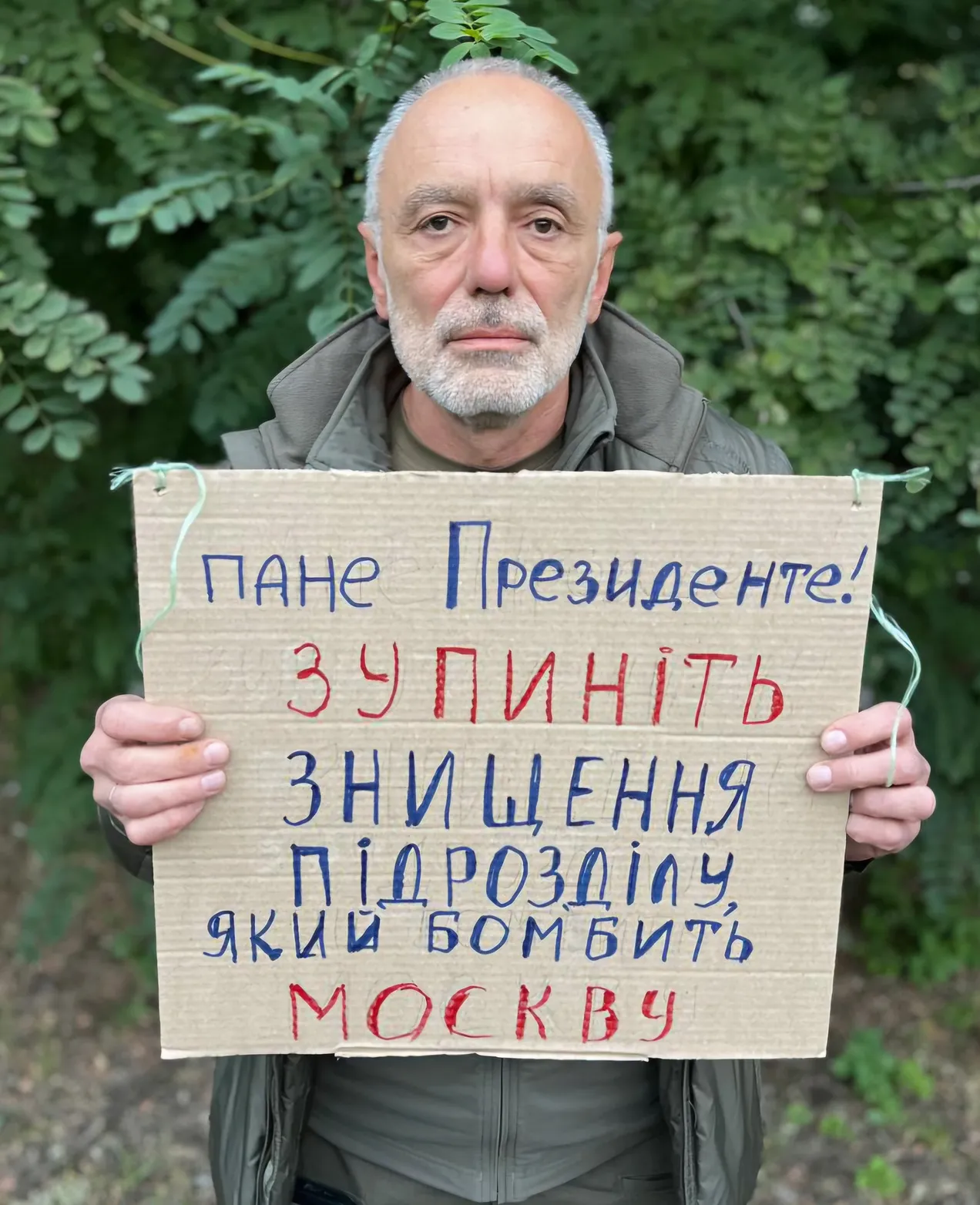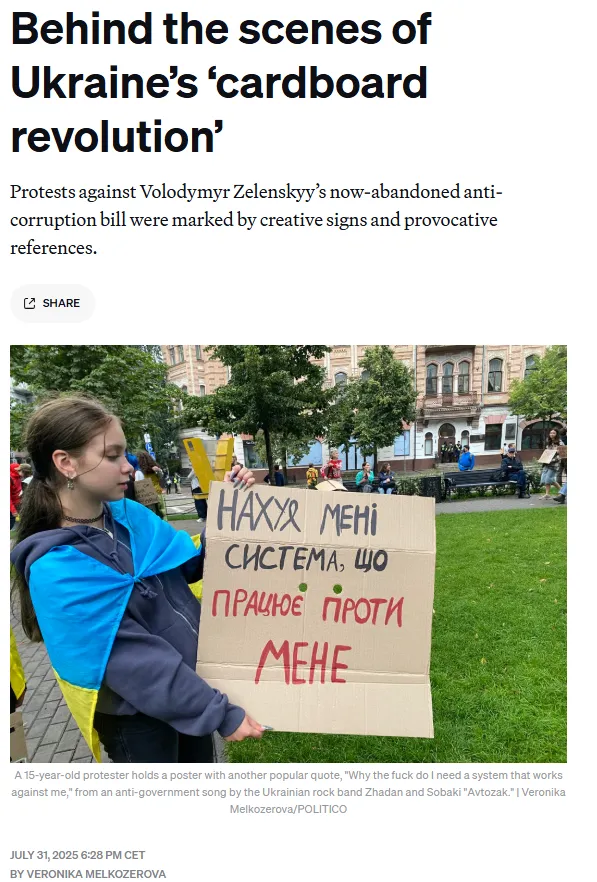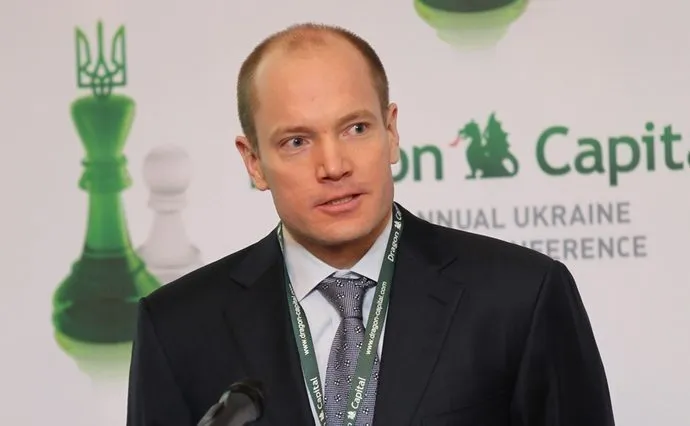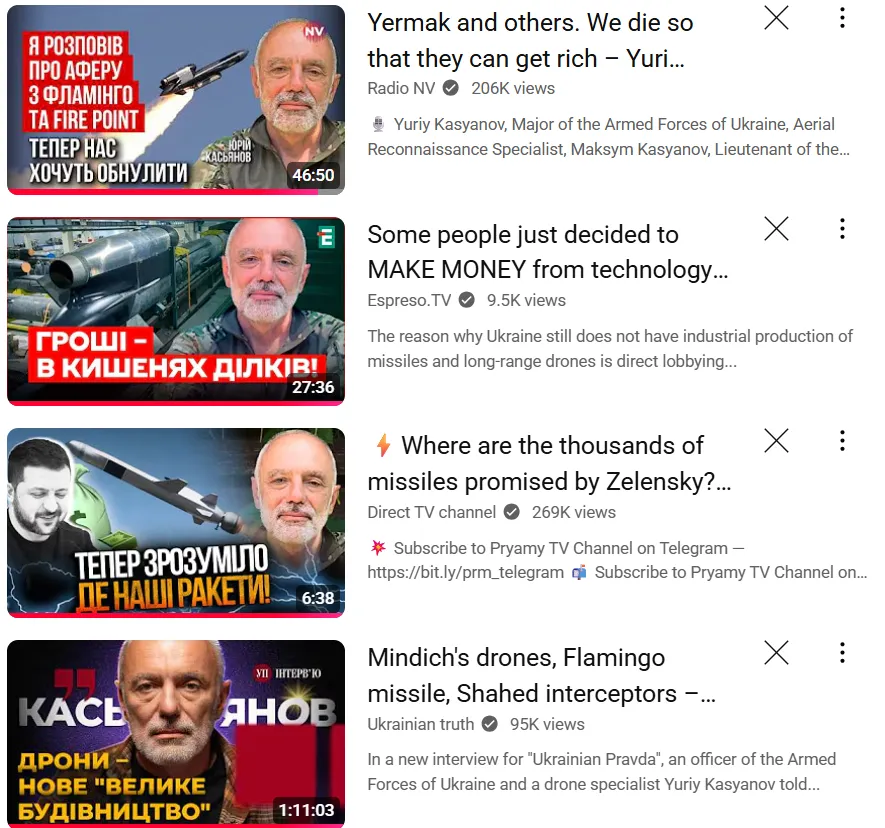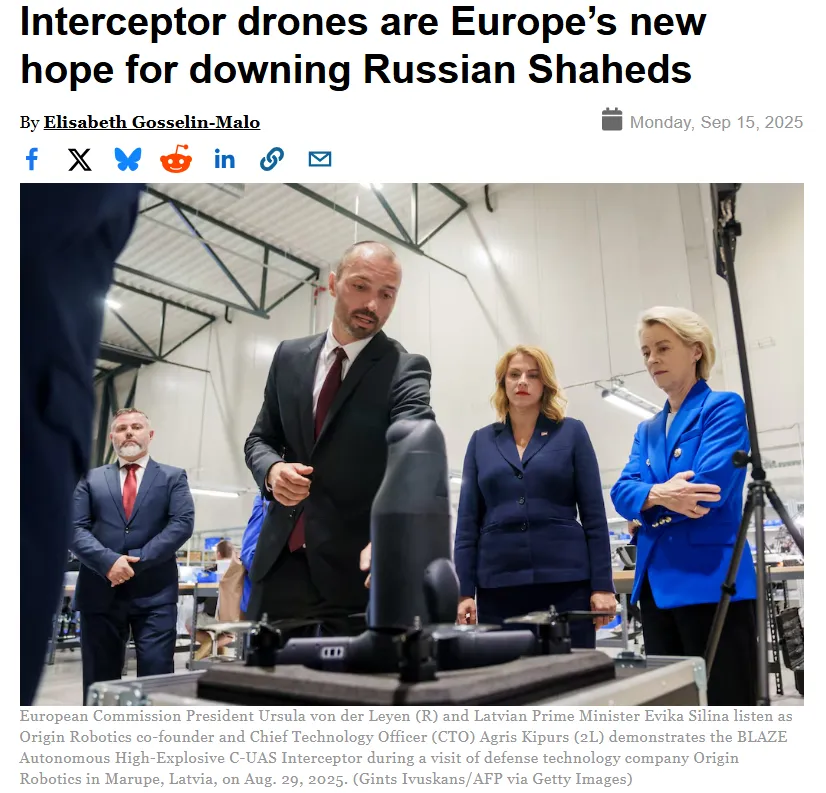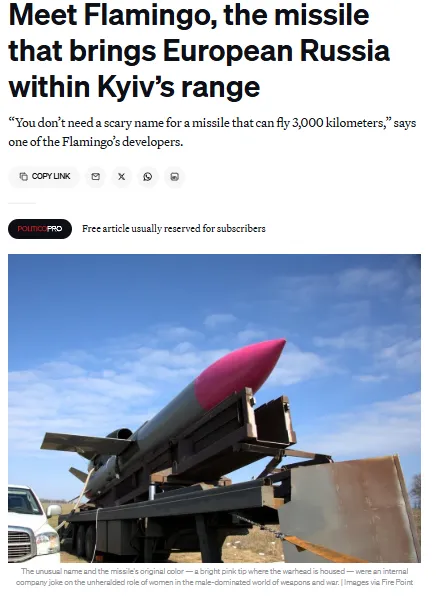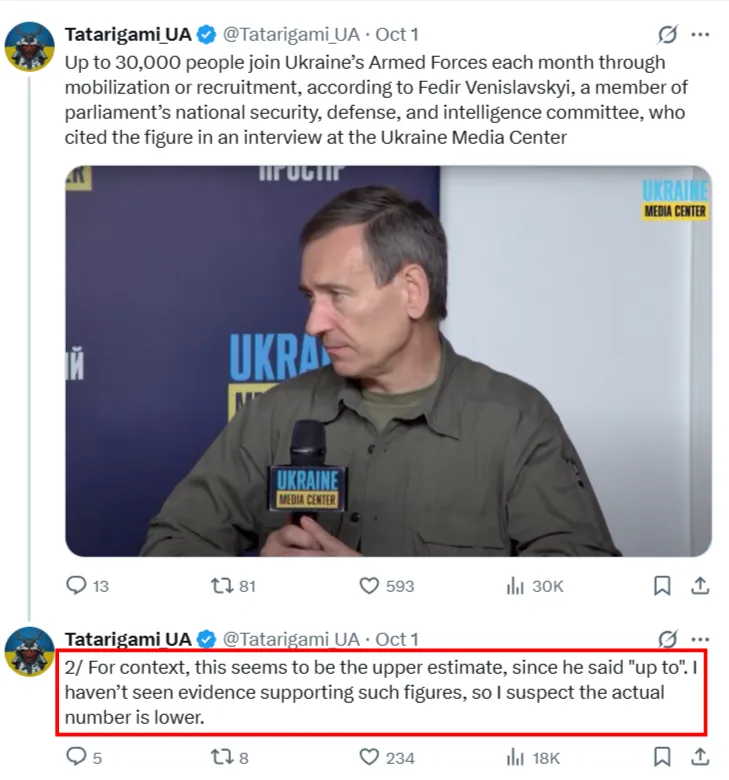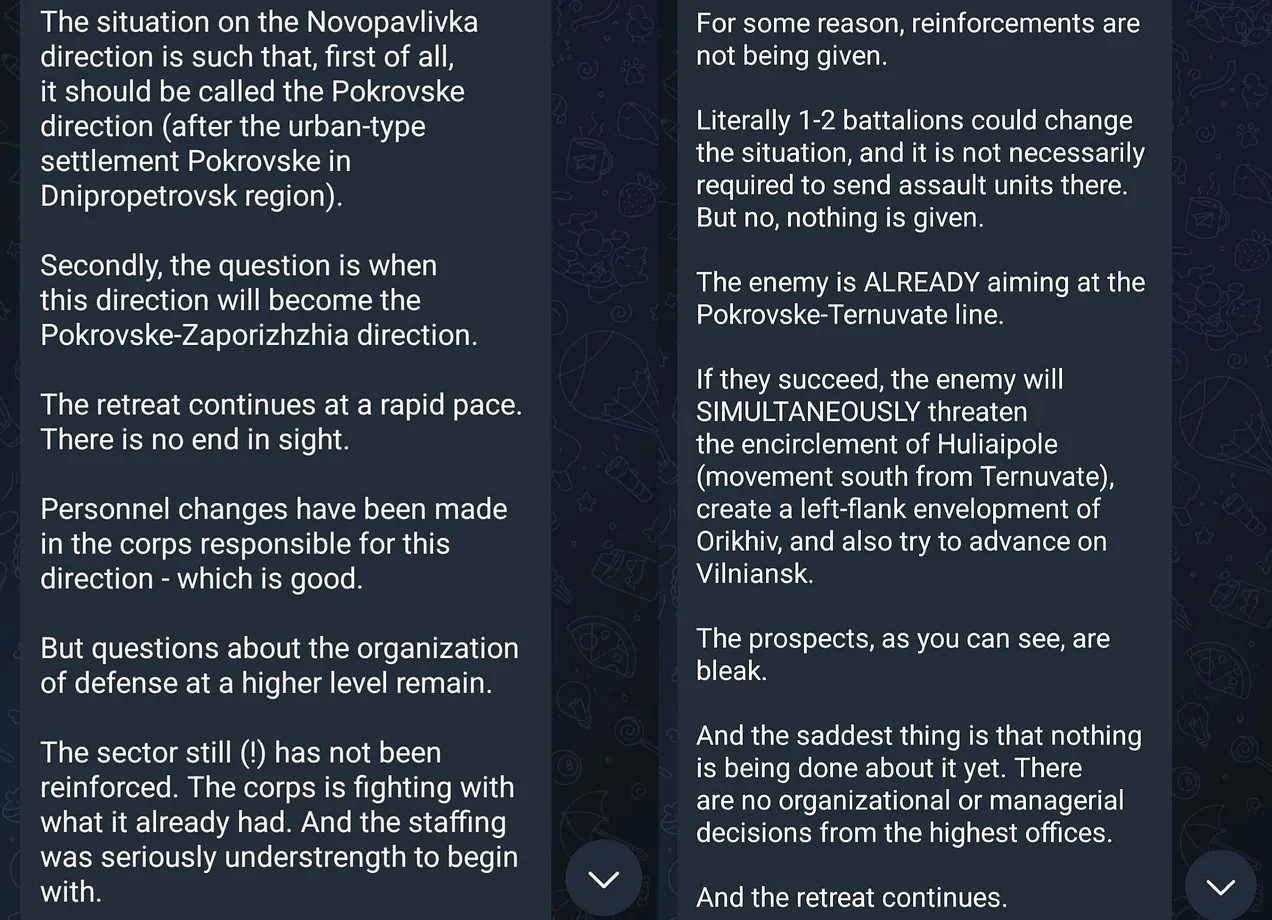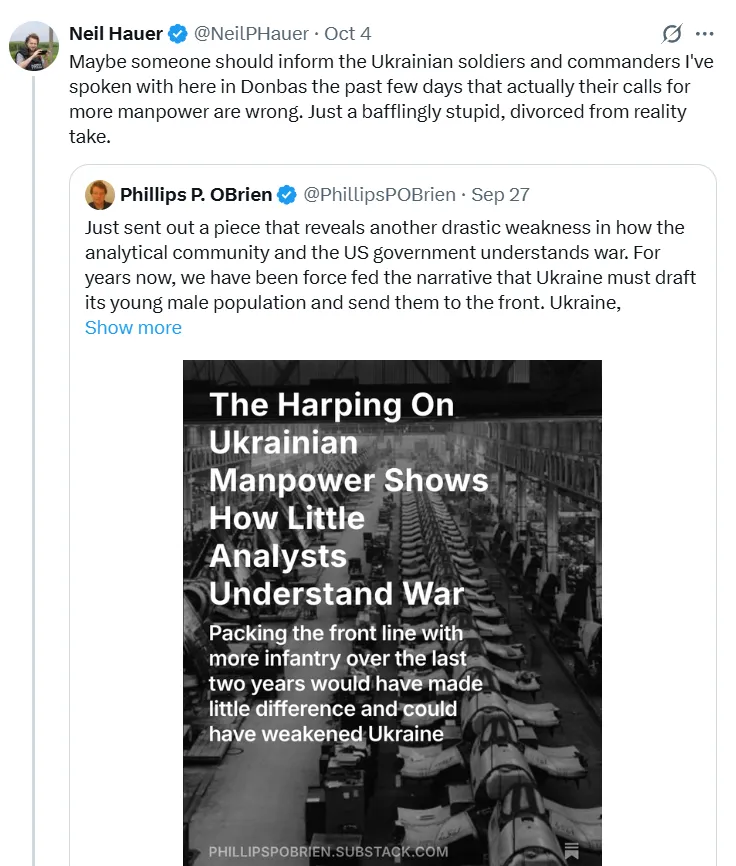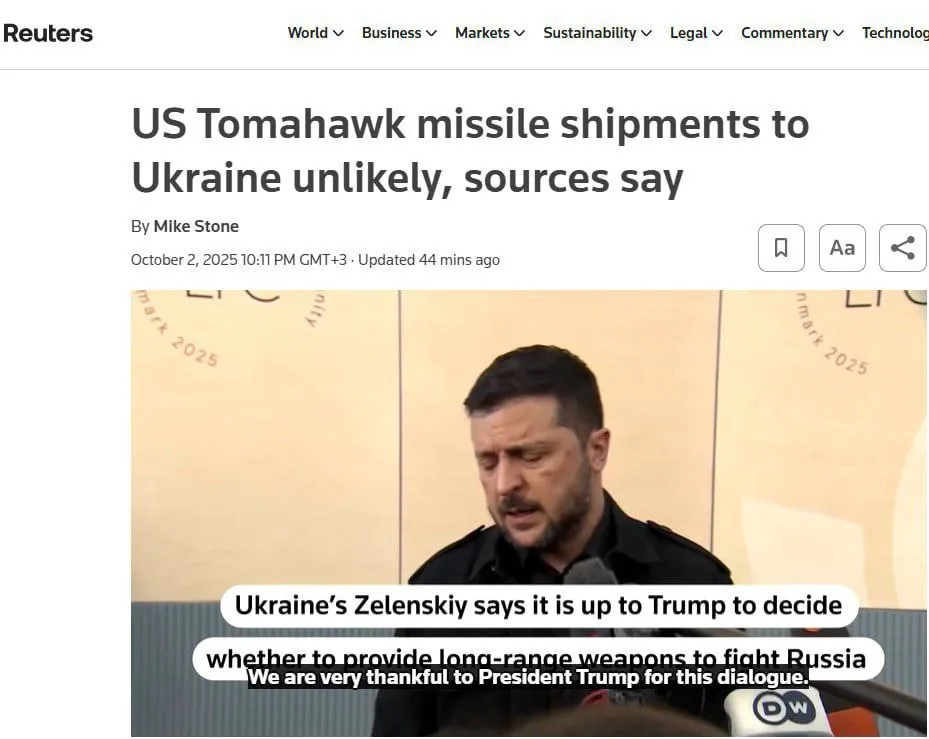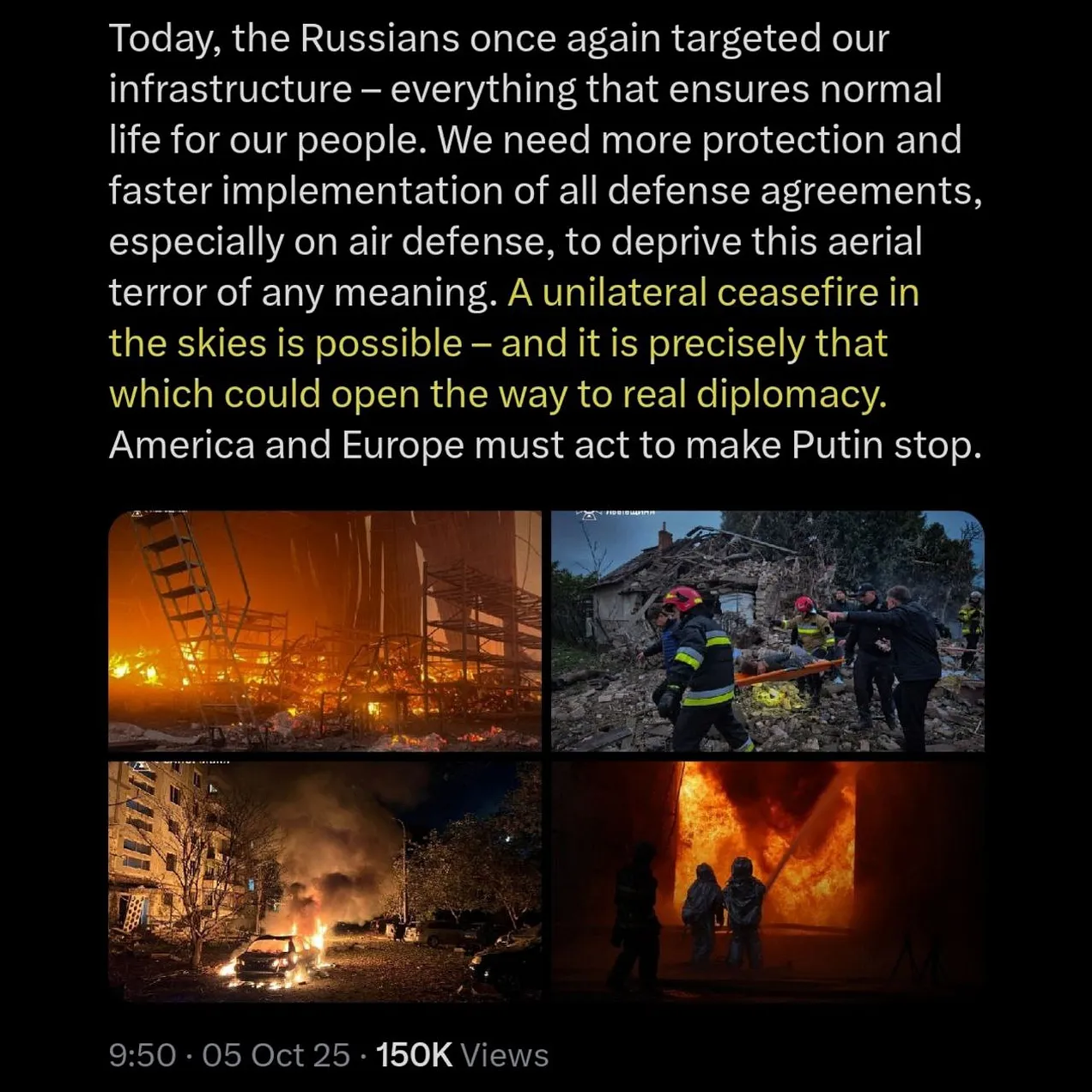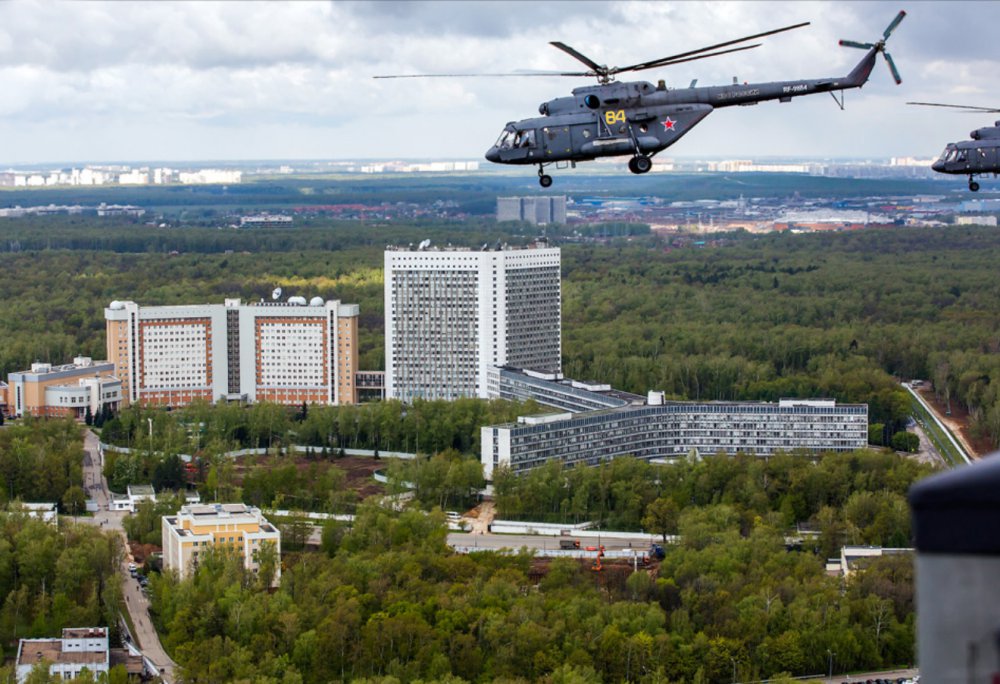Posted by @nsanzo ⋅ 09/28/2025

“Europe has a vital, if paradoxical, role to play. It must now significantly increase its level of aid as the US withdraws from leadership. As Ukraine’s main financier, it will have more leverage over the Kiev government, and it must use it to prevent a democratic backsliding,” writes The Economist this week in an article asking “how to fix Ukraine’s rot”—a hardly flattering headline for Kiev as it tries to present itself as the strong country that, as Trump claims, can, with EU help, defeat the Russian paper tiger .
“Putin, like a classic Russian political gas , tries to fill every available space. Within his small frame lie the colossal ambitions of an emperor of the universe. He wants it all: all the power, all the wealth, all the land, all the servile people, not only in his own state, but in every place where he can achieve his power,” said Mikhail Podolyak, taking advantage of the fact that the official narrative of the week, describing Russia as a collapsed country, coincides with his arrogant discourse. The advisor to the President's Office added that “the war is killing Russia, but Putin, like an addict, cannot contain himself. Everyone sees it, everyone understands: Putin will have to be overthrown collectively.” Russia is destroyed, a “gas station without gas,” as former Ukrainian diplomat Maria Drutska mocked, but Ukraine needs collective assistance, and the European Union demands that the United States collaborate in the task of defeating Moscow with more than just constant arms shipments. Despite the obvious problems caused by both the war and the coercive measures imposed by the West, Russia continues to finance the maintenance of its state, including its army, which it supplies with equipment produced by its own industry or purchased commercially abroad. Unlike Ukraine, Moscow lacks the external lifeline, without which kyiv could never have continued fighting.
The haughty and triumphalist rhetoric, deeply contemptuous of Russia and its people, contrasts sharply with the rhetoric Zelensky uses when demanding funding from his allies. A chameleon-like figure, the Ukrainian president is capable of acting as the proud leader of a united homeland on the verge of expelling its aggressor and guarantor of continental security, but also as a worried leader for whom any assistance is insufficient and any reduction could mean imminent defeat. Contradictions are part of any speech, but sometimes they are rampant. In his speech at the UN, Zelensky used the audience of heads of state and government, and especially advisors, that the General Assembly rostrum implies to promote Ukraine's arms production sector. However, the Ukrainian president never misses an opportunity to demand more funding for the war from his allies. Ukraine boasts of its strength, but it always needs more support—economic and military—from its European allies and its American patron, from whom it demands materials that are not manufactured domestically, either in Ukraine or in European countries. Little by little, Ukraine has been acquiring the miracle weapons it has demanded at every turn, but they have never yielded the expected results, so the delivery has been followed by reproaches of excessive delay or insufficient quantities. Defeating a paper tiger with a collapsed economy and which, since the spring of 2022, had been announced as running out of missiles, has turned out to be more complicated than European bureaucrats expected.
“To further increase production, Ukraine needs more money, which it sorely lacks. Olena Bilousova, a defense industry expert at the Kyiv School of Economics, said that Ukraine had the industrial capacity to produce $35 billion worth of military equipment a year, but was only producing up to about $15 billion and could not afford more. “The issue of financing is a bottleneck for our defense industry,” Ms. Bilousova said in a July interview with The New York Times . Curiously, despite its libertarian, deeply privatizing, and antisocial economic ideology, the Zelensky government now suffers from the problem that Margaret Thatcher attributed to socialism, saying that “eventually, you run out of other people's money.”
When requesting an increase in Western and NATO funding for Ukraine, Kiev often uses three arguments, sometimes used interchangeably: the possibility of victory due to a small increase in funding, the risk of defeat if this does not happen, and, above all, the need to "shorten the war," an objective it has never actually stated, but which is useful in crafting its narrative. Ukraine has made no secret of its willingness to continue fighting as long as necessary and , to do so, demands support, but the selective reading of the facts and the press's refusal to highlight the contradictions in its rhetoric allow this to currently be the focus of its narrative.
“I hope we will end this war,” Volodymyr Zelensky recently stated, aware that this is a euphemism for his allies achieving for Ukraine the conditions that kyiv and its European allies have set as red lines, something that is currently impossible. “Plan A is to end the war, Plan B is $120 billion. That's it. This is a big problem. I'm not saying that, in peacetime, during a ceasefire, or within the framework of security guarantees, we will need the same amount of money for ten years. But in any case, you must understand the magnitude of this problem,” he continued, putting forward the figure he expects to have annually to wage the war. According to the Ukrainian president, who allocates more than half of the country's total expenditures to the war in his budget, kyiv is capable of paying half of that amount, but needs another $60 billion annually as long as the battle continues. The subtext of Zelensky's speech is clear: it is more efficient to make a single major effort to defeat Russia and usher in peace on its terms than to continue the war of attrition, for which Ukraine demands amounts beyond any reasonable argument. With this figure, Ukraine is demanding a war budget similar to that Russia has for its entire military expenditure: $135 billion by 2025, with which it must, for example, maintain its nuclear weapons (a cost of around 8-10% of that expenditure in previous years).
However, calls for more assistance and funding are not limited to the war. Hardships for the Ukrainian refugee population are increasing in neighboring countries, especially Poland, which is keen for at least some of them to return to their country. Kiev is trying to facilitate the return of its growing diaspora in Europe, which would represent an additional cost for state coffers that subsist only thanks to the constant injection of funding from Brussels. "Ukraine seeks funds for its defense and basic social spending," was the headline of an article published by EFE this week . "Ukraine faces the challenge of securing funds for its defense and basic social spending in 2026, as dependence on international aid remains significant and the government is looking for ways to increase soldiers' salaries and expand national military production," it wrote in its opening statement. Although war is currently the raison d'être of the Ukrainian state, it does not represent all the expenditure, nor the only opportunity to ask for more support from its allies. “For the first time in two years, the monthly minimum wage (currently €164) and basic social security benefits will increase by 8%, only partially offsetting the impact of inflation on Ukrainians’ increasingly eroded incomes,” adds EFE , which insists, sounding like a Ukrainian government press release, that “financing these basic expenses, along with other state outlays on education and healthcare, will cost around €40.8 billion and will depend on the timeliness and volume of international support.”
“Ukraine will need to obtain €38.7 billion from external sources such as the European Union (EU) Ukraine Facility, the G7 initiative, and funds from the International Monetary Fund (IMF). According to Roksolana Pidlasa, chairwoman of the Parliament's Budget Committee, €15.4 billion of this sum remains unfunded,” EFE continues , noting that much of the financial assistance will come in the form of loans, not grants, which will increase public debt to 106% of GDP. Absolutely unsustainable, this debt is not the main concern in Ukraine, whose priorities are clear and do not involve focusing on an unpayable debt for which it hopes not to have to answer.
Kiev, which also complains that the funds provided by the allies for basic expenses cannot be used for defense, thus puts a price on the proxy war. $60 billion for the war and €38.7 billion (a portion already covered by the European Union) are the amounts Ukraine expects to rely on annually to preserve the status quo , a total of $105.288 billion. This amount is absolutely impossible to sustain in the long run, but for which Ukraine always has the same solution: the expropriation, actually theft, of Russian public and private assets seized by the European Union in February 2022
https://slavyangrad.es/2025/09/28/el-pr ... rra-proxy/
Google Translator
******
From Cassad's Telegram account:
Colonelcassad
The main statements made by Lavrov at the press conference following his speech at the UN General Assembly:
- Lavrov is confident that the assessments of Putin's initiative on the New START will come when the "fuss of the high-level week" of the UN General Assembly subsides.
- The range of the drones, the wreckage of which could have fallen on the territory of Poland, is less than the distance from the Russian border to the territory of this country;
- The Russian Federation never directs its UAVs or missiles at the EU or NATO states;
- If attempts are made from outside to shoot down any object in the airspace of the Russian Federation, "these people will seriously regret it";
- Europe has turned diplomacy into courting people from Washington in order to continue the "Biden path";
- The head of the Russian Foreign Ministry is surprised that none of the Western journalists are even trying to find out the "details of Bucha";
- A "trap" was left for Iran in the text of the nuclear deal, despite the fact that Tehran did not and does not intend to violate its obligations;
- The Russian Federation does not see the US administration deviating from the course of honest dialogue;
- The situation in the Middle East is extremely explosive, with the fuses already blown;
- Counting on a return to the 2022 borders for Ukraine would be politically blind;
- Lavrov pointed out the dominance of NATO representatives in UN leadership positions;
- The Minister confirmed Putin's visit to India in December;
- There are those in Europe who are "preparing a war against the Russian Federation";
- Lavrov stated that on September 27 he sent a letter to the UN Secretary-General about the legal invalidity and non-implementation of the decision to reinstate UN Security Council sanctions against Iran.
***
Colonelcassad
Lavrov, addressing Western journalists at a UN press conference, said,
"Aren't you interested in knowing who these people were [in Bucha], whose bodies were shown, what their names are, who they were?"
The Russian Foreign Minister noted that none of them had conducted an investigation into the killings in Bucha, despite having requested one a year ago.
According to the minister, Russia had submitted a request to the Office of the High Commissioner for Human Rights to publish the names of the dead, but the secretariat's lawyers ruled that disclosing this information was inappropriate .
https://t.me/s/boris_rozhin
Google Translator
******
(Not-So) Brief Frontline Report – September 27th, 2025
Report by Marat Khairullin and Mikhail Popov.
Zinderneuf
Sep 27, 2025
Message from the Ministry of Defense of the Russian Federation: "Units of the 'West' Group decisively liberated the settlement of Derilovo in the Donetsk People's Republic." (Marked by a Russian flag on the map.)
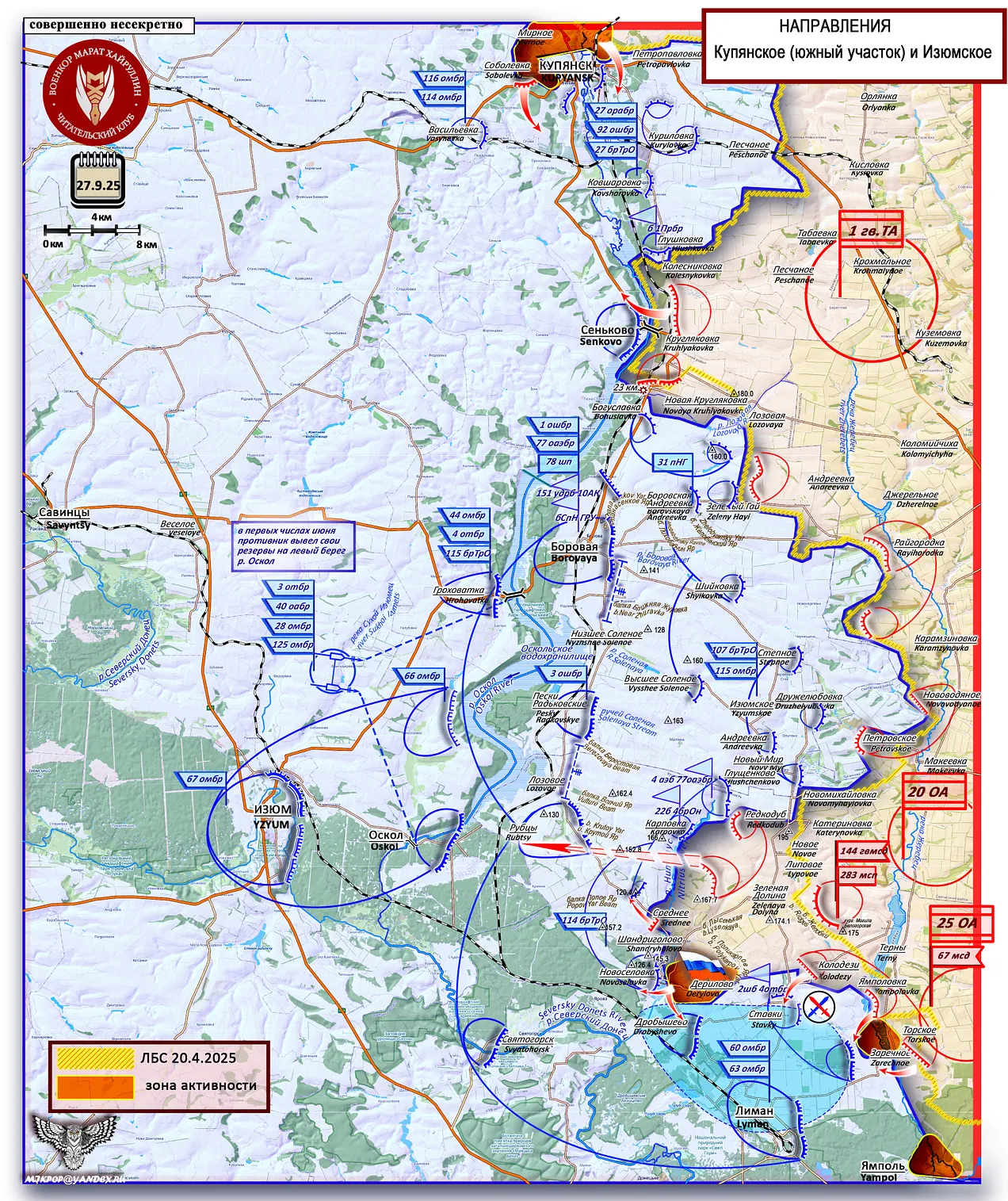
ЛБС 20.4.2025=Line of Combat Contact April 20th, 2025. Зона Активности=Zone of Activity.
On the map of the southern (Oskol) section of the Kupyansk direction, attention is drawn to the Borovaya salient of the Armed Forces of Ukraine with flanks at the settlements of Senkovo (left) and Novoselovka (right), resting on the Oskol River. North of Senkovo, a well-formed Kupyansk salient is visible.
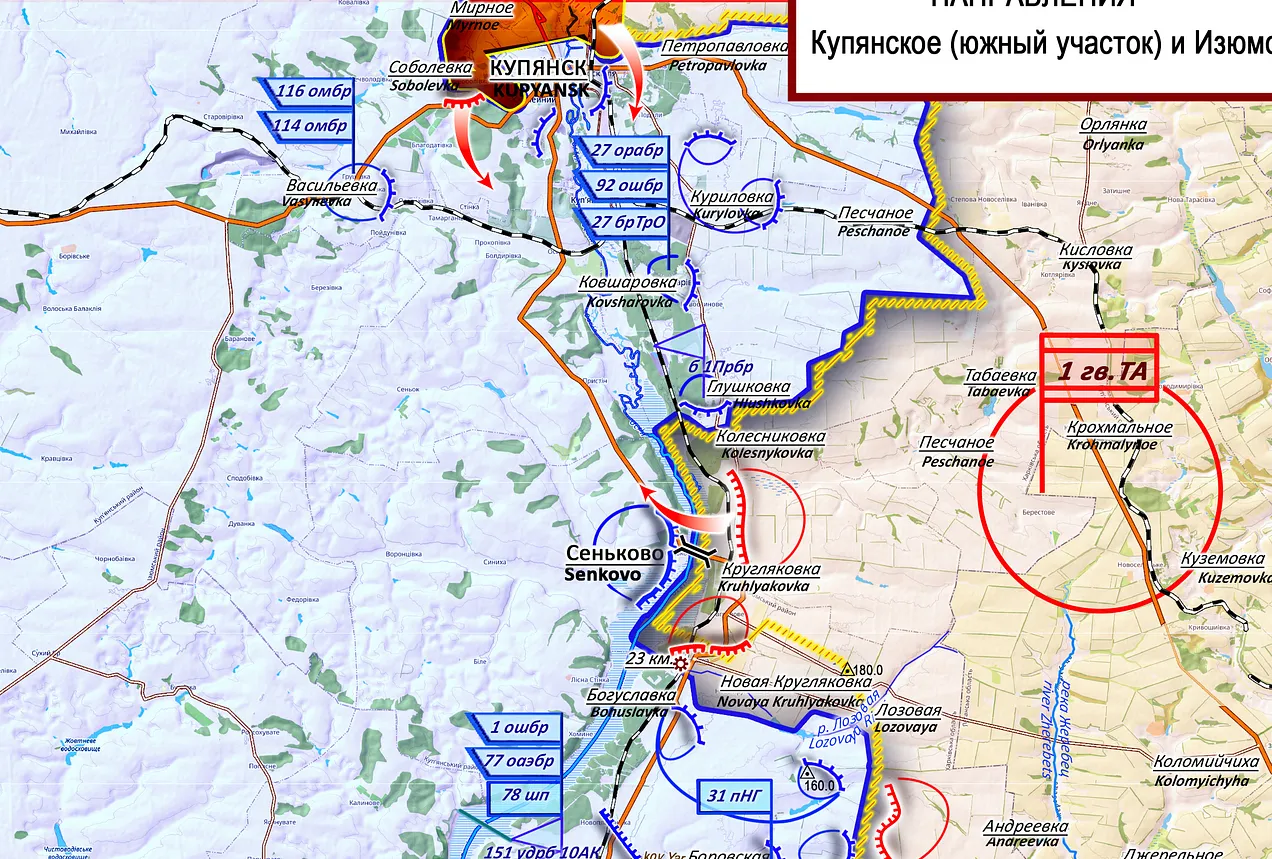
As early as June, the enemy withdrew its reserves as far back as the left bank of the Oskol River and deployed them along the Borovaya - Rubtsy line, covering the right flank of this line with a group of the Armed Forces of Ukraine occupying positions in the area of Zarechnoe - Kolodezi - Shandrigolovo (Shandryholovo).
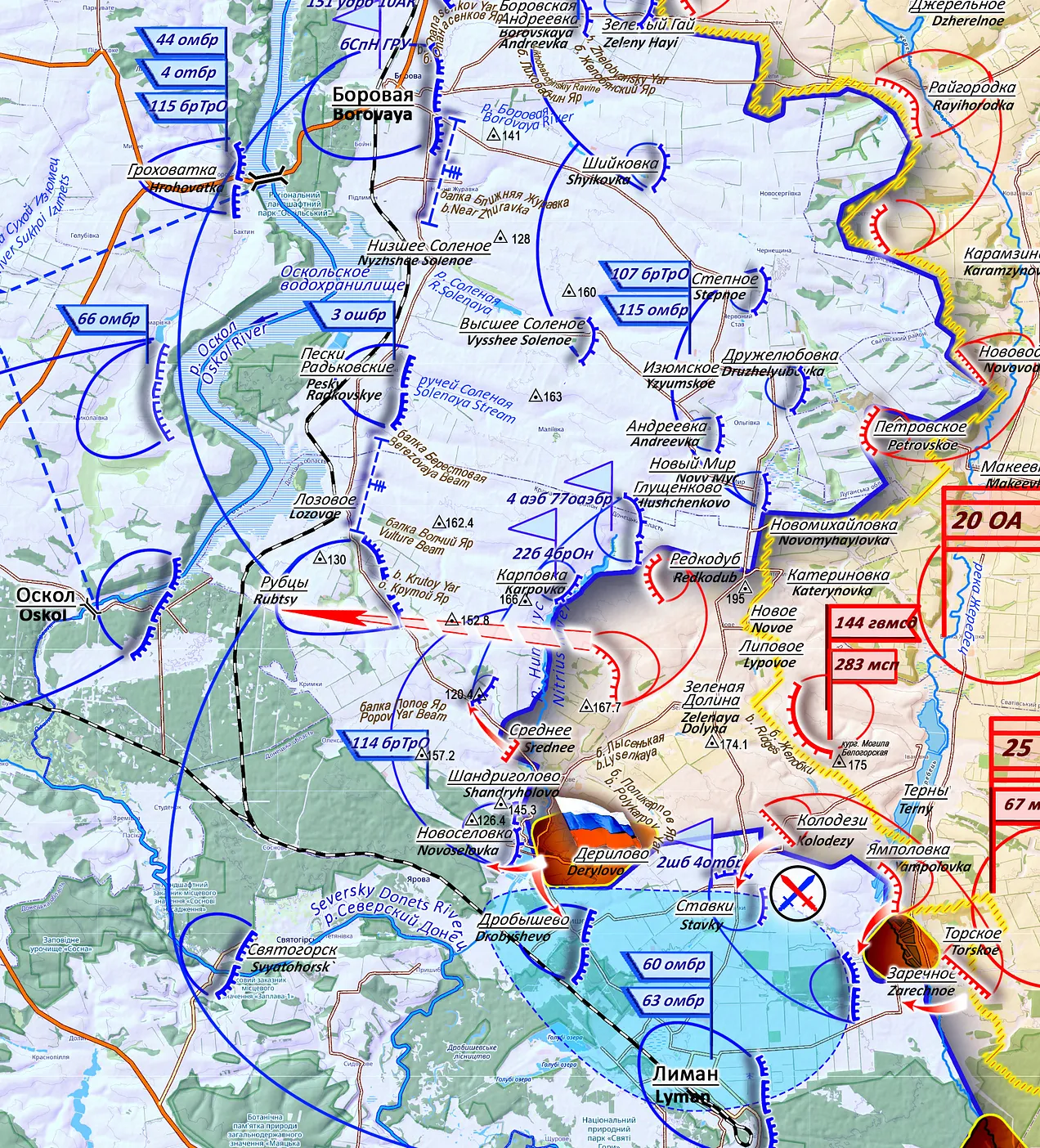
We have not looked into the plans of the command of both sides, but from the configuration of the line of combat contact it is clear that the Russian Armed Forces, cutting the right flank of the Armed Forces of Ukraine along the Zelenaya Dolina - Rubtsy line, with access to the crossings near the settlement of Oskol and cutting off the Oskol section from Kupyansk near the crossings at Senkovo, split the two zones and form encirclements of these salients. In this case, the defensive advantage of the Armed Forces of Ukraine relying on the Oskol River becomes a problem for them, as the river turns into a natural obstacle for maneuvering forces and means in the operational depth of defense and complicates the supply of the Borovaya salient.
To contain the advance of the Russian Armed Forces in the direction of Zelenaya Dolina - Rubtsy, the enemy created a force grouping in the area of Zarechnoe - Kolodezi - Shandrigolovo - Drobyshevo - Liman, which, presumably, was supposed to deliver a flanking strike to the advancing units of the Russian army in the direction of Stavki - Zelenaya Dolina - Redkodub.
Understanding the enemy's plan, the command of the Russian Armed Forces, since mid-summer, began implementing measures to secure the direction towards Rubtsy: expanding the wedge "tip" at the settlement of Zelenaya Dolina and eliminating the threat of a flanking strike. The bridgehead created after the liberation of Zelenaya Dolina was expanded on the right flank to the settlement of Redkodub, and on the left to the settlement of Srednee. The settlement of Kolodezi was liberated, and by pressuring the Stavki area, the logistics of the Armed Forces of Ukraine were disrupted. Offensive actions southeast near the settlements of Kirovsk (Zarechnoe) and Yampol restrict the maneuvering of enemy units along the line of combat contact in the area of Zarechnoe - Shandrigolovo - Drobyshevo - Liman. On the left flank, the clearing of Armed Forces of Ukraine positions along the left bank of the Nitrius River began: from the settlement of Srednee to Shandrigolovo and Drobyshevo.
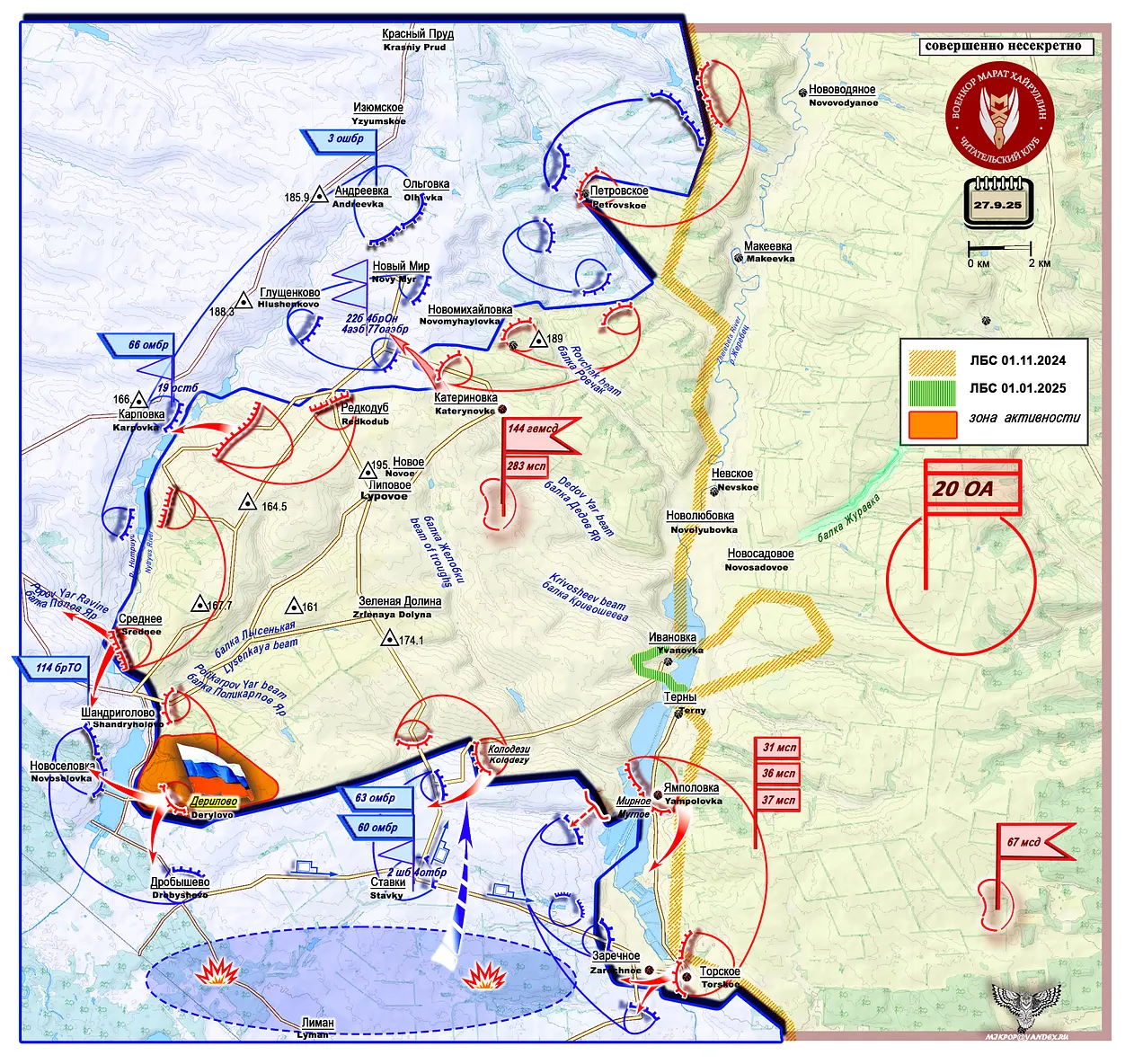
ЛБС 01.11.2024=Line of Combat Contact November 1st, 2024. ЛБС 01.01.2025=Line of Combat Contact January 1st, 2025. Зона Активности=Zone of Activity.
Today, September 27, the settlement of Derilovo (49°04′01″N 37°43′45″E, about 100 residents), located opposite the crossings over the Nitrius River near a major defense node of the Armed Forces of Ukraine in the settlement of Novoselovka, was liberated. Clearing the line Karpovka - Novoselovka ensures the Russian Armed Forces' access to the settlement of Rubtsy with the cutting of its logistics in this area along the road and railway routes Rubtsy - Senkovo along the Oskol River channel (refer back to the first map to see the railway).
The Ministry of Defense of the Russian Federation reports: "Units of the 'South' Group of forces have improved their position along the front line and liberated the settlement of Maiskoe in the Donetsk People's Republic."
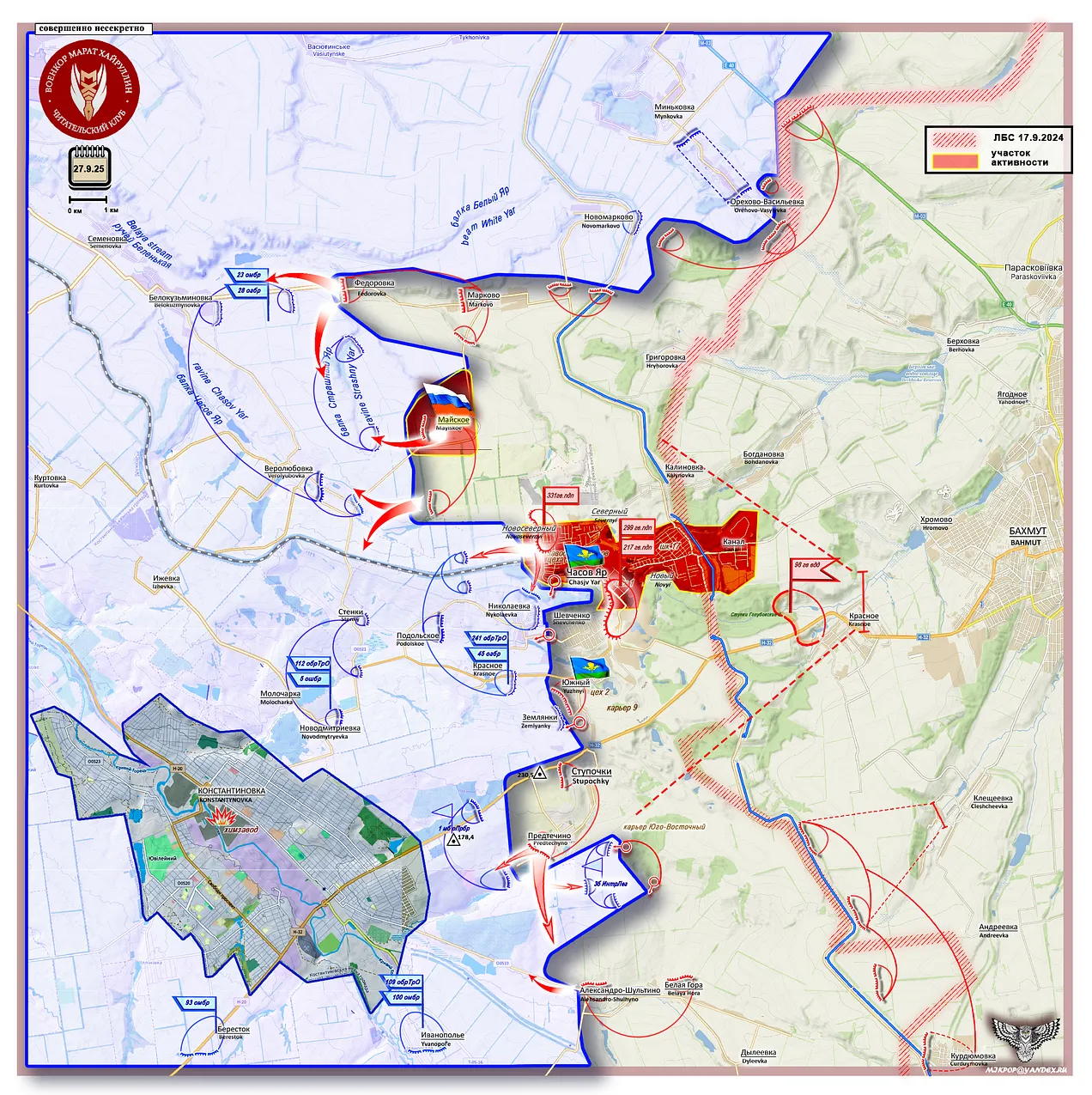
ЛБС 17.9.2024=Line of Combat Contact September 17th, 2024. Участок Активности=Area of Activity.
In the northern sector of the Donetsk direction, a deep encirclement of the city of Konstantinovka from the north is being formed. After the liberation of the settlement of Chasov Yar, the Russian Armed Forces are persistently "biting into" the defense node of the Ukrainian Armed Forces at Fedorovka-Belokuzminovka-Verolyubovka, which secures a network of bypass roads and the Kramatorsk-Chasov Yar railway branch. After the liberation of the settlements of Markovo and Fedorovka on September 5, the wedge began to expand southward along the Ukrainian defensive line built with reliance on the ravines Strashny Yar and Chasov Yar.
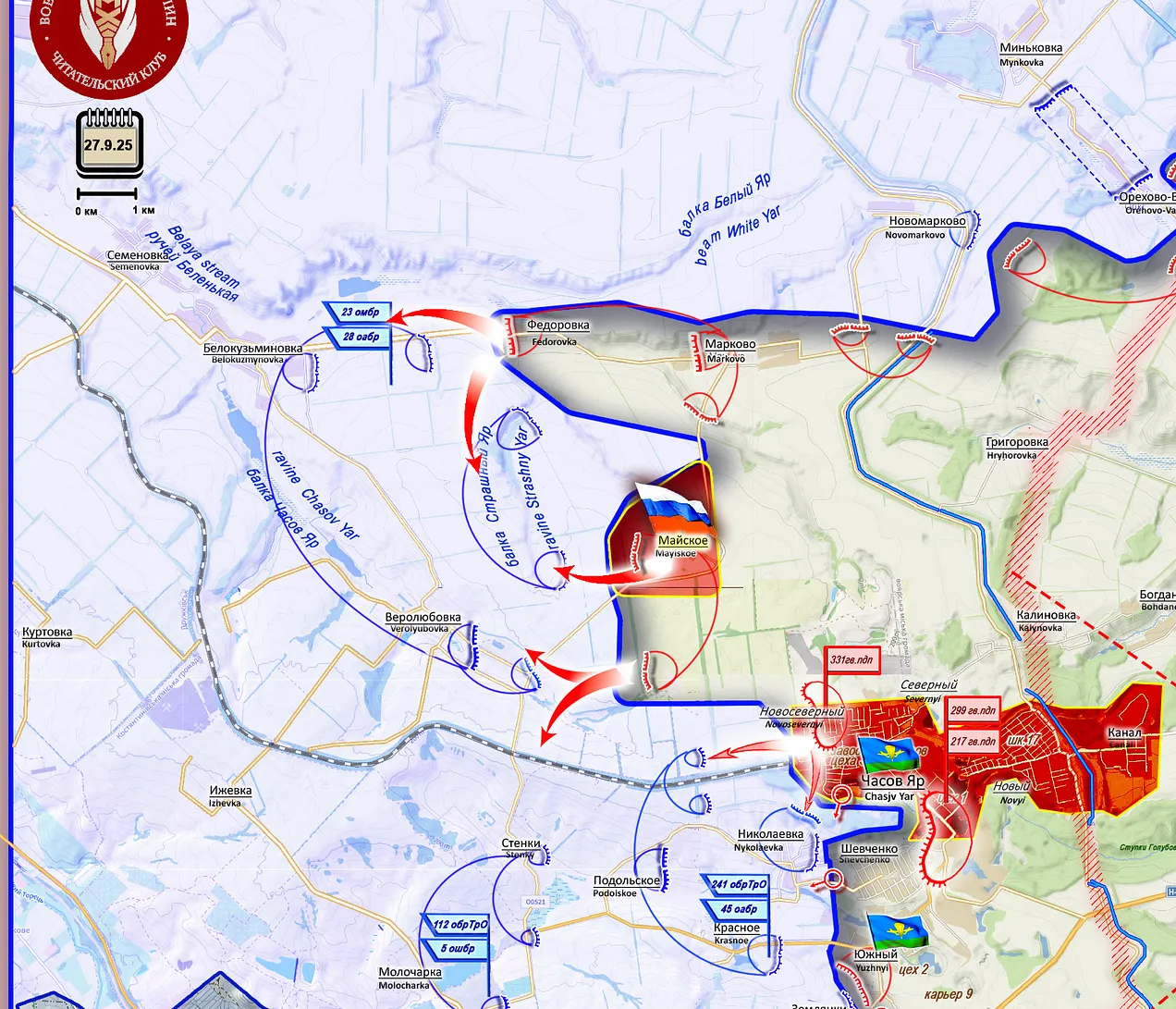
Today, the settlement of Maiskoe (48°37′32″N 37°46′39″E, about 100 residents), located at the center of the watershed of the ravines Beliy Yar (White Yar) and Chasov Yar, was liberated. For the Ukrainian positions relying on the Strashny Yar ravine, a threat of flanking encirclement has arisen.
The Russian Ministry of Defense reports: "Units of the 'East' Group continued advancing deep into the enemy's defense and liberated the settlement of Stepovoe in the Dnepropetrovsk region."
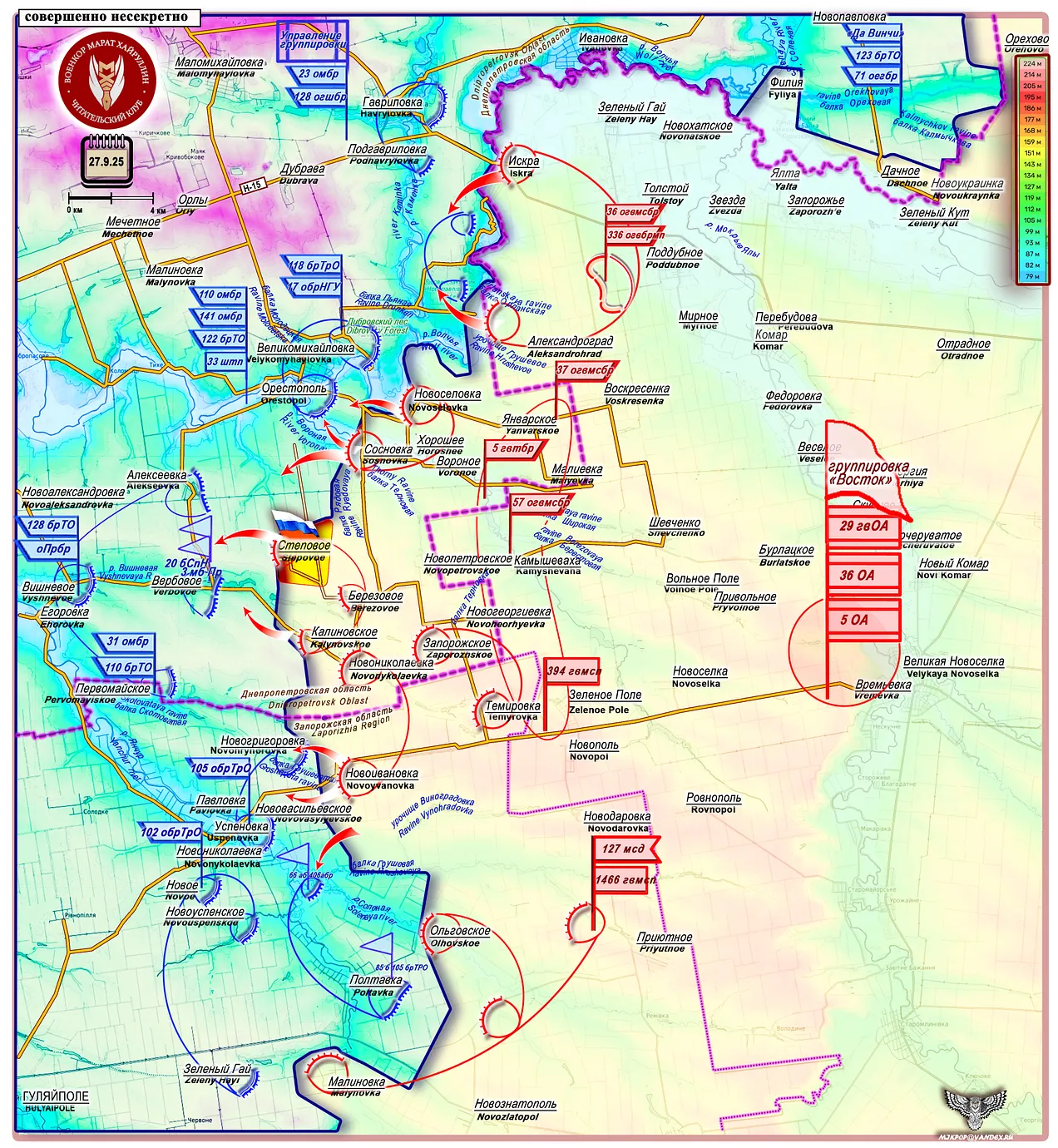
In the southern sector of the Donetsk direction, the Russian Armed Forces continue their offensive on the defense area of the Ukrainian Armed Forces in Vishnevoe with the aim of "cutting off" the Pokrovskoe - Vishnevoe - Uspenovka - Gulyaipole (Hulyayipole) line (Pokrovskoe is just north of Danilovka and Vishnevoe above where the map cuts off; I marked the discussed line in red).
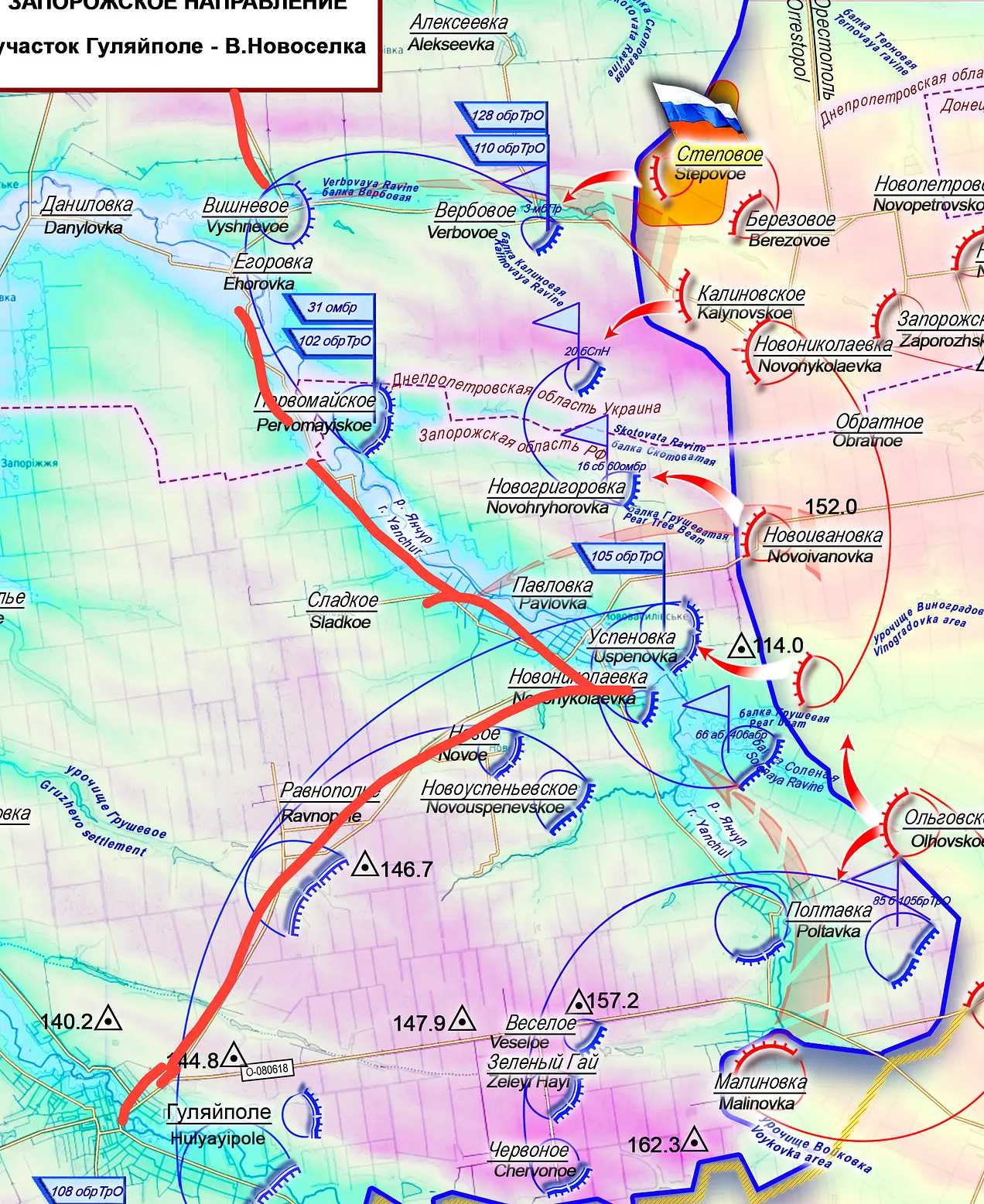
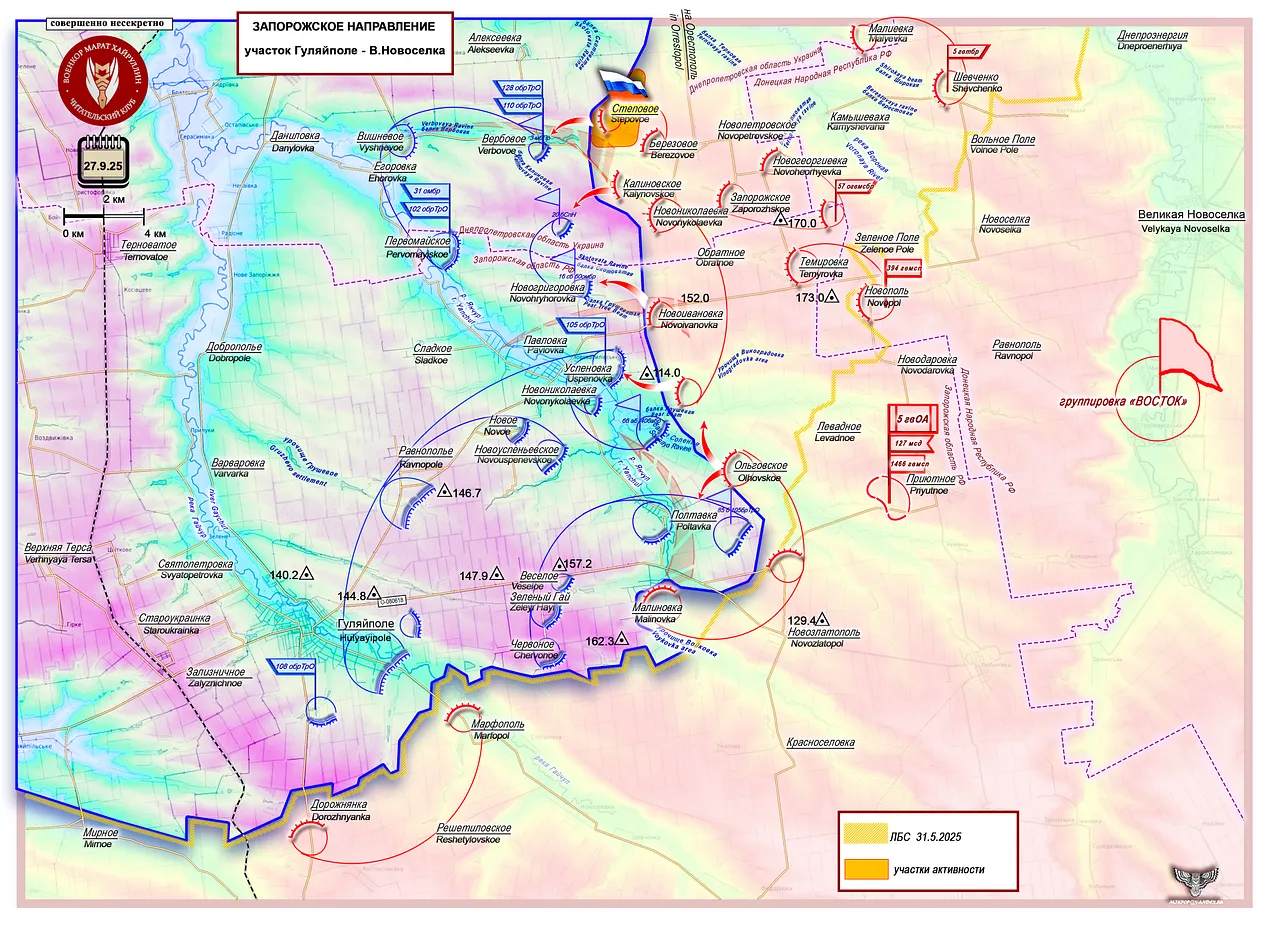
ЛБС 31.5.2025=Line of Combat Contact May 31st, 2025. Участки Активности=Area of Activity.
Today, September 27, the Russian Armed Forces liberated the settlement of Stepovoe (47°55'58"N 36°30'17"E). A small hamlet located on the northern, higher bank of the Vyshnevaya River and three kilometers from the Orestopol-Alekseevka line, which connects two major Ukrainian defense nodes that the Russian army will destroy in the near future: north of Velikomikhailovka (Velykomyhaylovka)-Orestopol and Alekseevka-Vishnevoe-Pervomaiskoe. By cutting off transport links between these defense nodes, our units are creating conditions for their destruction.
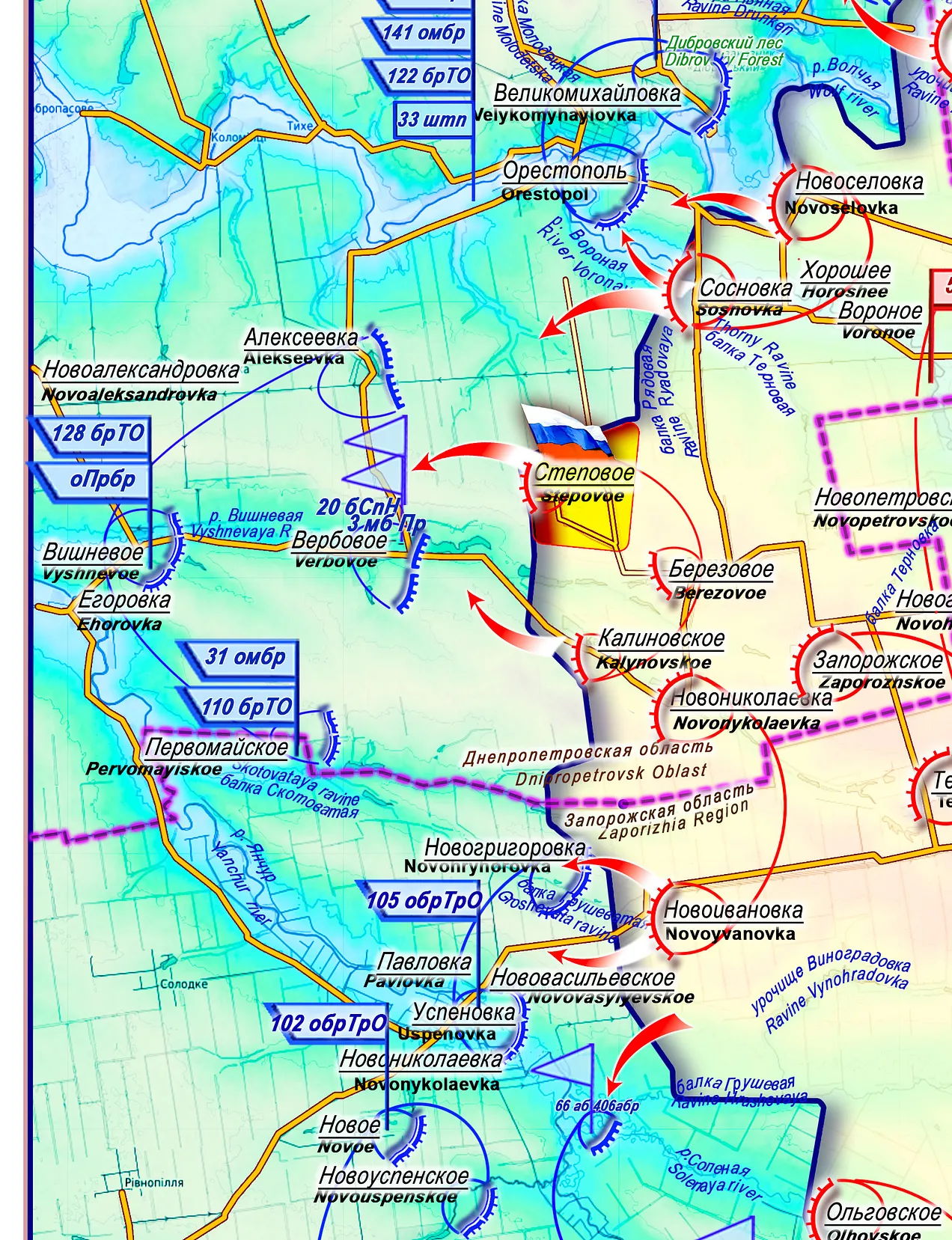
https://maratkhairullin.substack.com/p/ ... -september
******
Shooting down Russian planes will lead to war, a Kremlin envoy said in a chilling warning to NATO.
Source: Alan Pogrund – Daily Mail Sept 26, 2025
Dr. Ignacy Nowopolski
Sep 27, 2025
The threat comes amid rising tensions between Moscow and its European neighbors, with Russia accused of violating their airspace following a series of drone incursions.
Poland wants to pass a law that would allow its military to shoot down Russian drones over Ukraine without needing NATO or European Union approval after a number of them crossed its territory earlier this month.
Estonian airspace was also violated by three Russian fighter jets on Friday, and Moscow has been accused of being behind a swarm of drones that closed Copenhagen airport on Monday.
US President Donald Trump warned during a speech at the UN on Tuesday that NATO countries could shoot down Russian planes that violate their airspace.
But Alexei Meshkov, Russia's ambassador to France , responded by stating that shooting down their planes "would be war."
"You know, there are many NATO aircraft that violate Russian airspace, intentionally or not, but it happens quite often. They are not shot down afterwards," he told RTL , without giving an example.
He added that Russia denies any involvement in recent drone incursions in Eastern Europe.
"Russia is not doing this, it's not playing games with anyone. It's really none of our business," he added, emphasizing that the West had "deceived" Moscow "on numerous occasions."
Poland shot down at least three Russian drones during attacks on Ukraine earlier this month.
It was the first time Russian drones were shot down over NATO territory since the start of the full-scale invasion of Ukraine in 2022.
Polish Prime Minister Donald Tusk warned that “this situation brings us closer to open conflict than in the times of World War II.”
European officials called Vladimir Putin's move a deliberate provocation, and NATO was forced to send fighter jets to shoot it down.
Romania also reported that just a few days later a Russian drone violated its airspace.
And on Friday, Estonian airspace was violated by three Russian fighter jets.
The Polish government now plans to lift the restrictions as part of a new "shoot first, ask questions later" policy that aims to give the military more flexibility when responding to threats.
The proposed new legislation was submitted by the country's defense ministry in June, but the application was reportedly fast-tracked.
The incursion and NATO's response have raised fears that the war could spill over - a concern that is growing in Europe as Russia intensifies its attacks and peace efforts falter.
Tusk also said earlier this week that his nation would not hesitate to shoot down objects that violate its airspace, reinforcing a sense among NATO leaders that Moscow was testing the alliance's readiness and resolve, with some calling for a decisive response.
“We will decide to shoot down flying objects when they violate our territory and fly over Poland – this is absolutely out of the question,” Tusk said at a press conference, adding that Poland will approach situations that are less clear-cut more cautiously.
“When we are faced with situations that are not entirely clear, such as the recent overflight of Russian fighter jets over the Petrobaltic platform – but without any violation, because these are not our territorial waters – we really need to think twice before deciding on actions that could trigger a very acute phase of the conflict,” he added.
Tusk said he also needed to be sure that Poland would not be alone if the conflict escalated.
“I also need to be absolutely sure… that all allies will treat this exactly the same way we do,” he said.
Meanwhile, the Royal Navy sent a warship to track a Russian frigate and a freighter off the UK coast, amid warnings that Moscow was sending an increasing number of ships through British waters.
Teams aboard HMS Iron Duke and a Wildcat helicopter tracked the heavily armed West German warship Neustrashimy as it escorted the cargo ship Sparta IV through the North Sea and the English Channel.
The mission is the latest in a series of similar operations carried out by the Royal Navy and its NATO allies in recent months that have worried the military's top brass.
“Russian warships are increasingly transiting the English Channel,” Defence Secretary Luke Pollard warned today.
“The Royal Navy protects the UK 24/7, monitoring Russia’s movements and ensuring the security of our waters and undersea.
“Together with our involvement in NATO Eastern Sentry, this is a clear demonstration of how the UK stands firmly alongside our NATO allies to deter Russian aggression.”
https://drignacynowopolski.substack.com ... -samolotow
******
Attack on a Main Intelligence Directorate (GUR) mercenary training camp. September 22, 2025.
September 27, 3:03 PM

Attack on a Main Intelligence Directorate (GUR) mercenary training camp. September 22, 2025.
Geraniums' Successes in Boryspil
Just a few days ago, our troops launched a concentrated strike ( https://t.me/rybar/73804 ) on Boryspil in the Kyiv region. The city houses both industrial enterprises and military facilities that support the needs of the Ukrainian Armed Forces.
Initial reports indicated that industrial facilities were targeted, but during the September 22 airstrike, our troops achieved tangible results. 54 Geranium UAVs of the Russian Armed Forces struck a mercenary training camp under the auspices of the so-called Main Intelligence Directorate of Ukraine.
Who did our troops eliminate?
A training facility overseen by GUR officers has been stationed on the premises of the reinforced concrete plant since 2022.
During the Geranium attack, strikes were carried out on the barracks of Latin American mercenaries (mainly Brazilian), as well as the locations of the Canadian and American instructors who trained them.
Among the dead were also GUR officers, and more than a dozen people were injured (two of whom died in the hospital). In addition, ammunition depots and military equipment were damaged by secondary detonation.
This airstrike once again demonstrates the high effectiveness of our troops' changing tactics in strikes against the so-called Ukraine. Instead of dispersing resources across dozens or even hundreds of targets at once, a concentrated attack on one, two, or three objects produces more significant results.
High-resolution map ( https://rybar.ru/piwigo/upload/2025/09/ ... 4b9cd7.jpg )
https://t.me/rybar/73910 - zinc
A worthwhile strike, we need more of this.
https://colonelcassad.livejournal.com/10095655.html
Unmanned Gleiwitz
September 27, 9:11

On Kyiv's plans to conduct a false flag operation in Romania and Poland
Today, several Hungarian media outlets ( https://pestisracok.hu/vezercikk/2025/0 ... u-hazugsag ) reported on Zelenskyy's plans to carry out acts of sabotage in Romania and Poland in order to blame Russia. Thus, Bankova Street is preparing its own "Gleiwitz incident" ( https://mgimo.ru/about/news/experts/119766/ ) - with the aim of creating a casus belli for a war between Russia and NATO.
Judging by the available information, the Kyiv regime's plan is as follows:
1. Repair several downed or intercepted Russian UAVs.
2. Equip them with combat striking elements.
3. Send UAVs controlled by Ukrainian specialists, disguised as "Russian drones", to major NATO transport hubs in Poland and Romania.
4. Simultaneously, conduct a disinformation campaign in Europe with the aim of blaming Moscow for everything.
5. Unleash an armed conflict between the Russian Federation and NATO.
To carry out this provocation, on September 16, Russian Geranium UAVs were already delivered to the Yavoriv training ground in Western Ukraine, where the International Peacekeeping and International Security Center of the Hetman Petro Sahaidachny National Academy is located ( https://asv.mil.gov.ua/mtsmb/pro-nas ). They had previously been repaired in Lviv at the LORTA plant.
According to Hungarian journalists, the reason for Zelenskyy's actions is simple: the Ukrainian Armed Forces are suffering a crushing defeat. The defeat of the army is no longer occurring at the tactical level, but is acquiring a strategic nature.
If all this is confirmed, then we must admit: never in modern times has Europe been so close to the outbreak of World War III.
(c) Russian Foreign Ministry
. In fact, they have already recently sent drones without explosives to Poland. Nord Stream, with subsequent accusations against Russia, was also undermined. And there's been plenty of that. So, it's a working scenario.
https://colonelcassad.livejournal.com/10095030.html
On preparing a provocation to unleash a major war
September 27, 11:11 PM
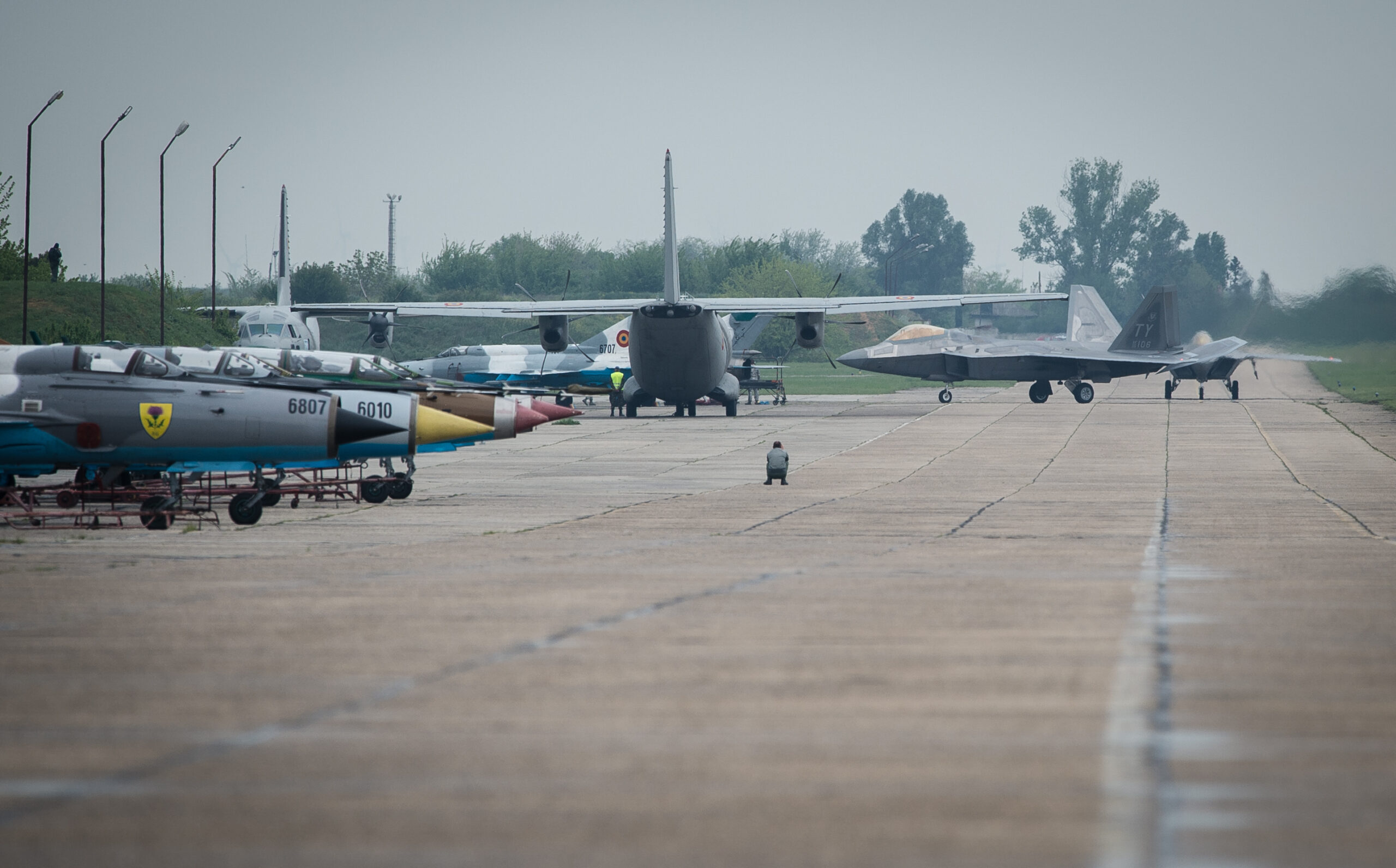
On preparing a provocation to unleash a major war
Major breakthroughs or the encirclement of thousands of soldiers are unlikely to materialize in the current conflict. The intensity of the fighting requires significant efforts from both sides on all fronts. Facing a serious crisis for the Ukrainian Armed Forces, given the high number of casualties, difficulties replenishing units with personnel and weapons, retreats on all fronts, and the approach of winter, Zelenskyy has decided to stage a high-profile provocation against his Western allies.
The events of the past month are fitting together like puzzle pieces to form a grim picture. To understand the overall trend of the current situation, we need to consider events that occurred recently.
Unprecedented Drone Activity in Europe
Poland
On the night of September 10-11, following a large-scale coordinated attack by Russian drones on Ukraine, some of them reportedly crossed the state border and landed in the Lublin Voivodeship. In total, at least 19 drones were detected, some of which were shot down by Polish air defense forces with the support of NATO aircraft. Notably, the UAVs did not have combat modules; they were Gerbera models, which the Russian army typically uses as decoys to suppress Ukrainian air defenses. Prime Minister Donald Tusk convened an emergency government meeting. That same day, Poland formally requested the invocation of Article 4 of the North Atlantic Treaty.
Article 4:
The Contracting Parties shall consult each other whenever one of them considers that the territorial integrity, political independence, or security of any of the Contracting Parties is threatened.
At the same time, it cannot be ruled out that the Ukrainians themselves launched the Gerberas at the time of the Russian strike in order to increase tensions around the conflict. Russia launches hundreds of such drones over Ukraine daily, and after completing their mission, they remain in territory controlled by Kyiv. Therefore, obtaining data from UAVs is relatively easy thanks to the large number of spare parts from previously downed Gerbers.
In response to this situation, Warsaw announced Operation Eastern Watch to protect the country's airspace. Most of Poland's NATO allies expressed support for the operation and pledged to send troops to participate in joint operations.
The Netherlands intends to send air defense systems and 300 troops, and the Czech Republic has pledged to provide additional helicopters and 100 troops. Denmark is sending two F-16 fighter jets and a military frigate.
Berlin announced it will "intensify its activity along NATO's eastern borders" and expand its airspace control to include Poland. Berlin intends to deploy four Eurofighter Typhoon fighter jets in Polish airspace.
A German armed forces brigade will also be deployed to Lithuania.
Meanwhile, French President Emmanuel Macron announced that Paris is deploying three Rafale fighter jets to protect Polish airspace.
Scandinavian Countries:
At least four large drones disrupted operations at Copenhagen Airport in Denmark for four hours on September 23. As a result, 51 flights were diverted and 109 were canceled, affecting 20,000 passengers. The drones also disrupted operations at Stockholm Airport in Sweden for more than three hours. NATO E-3 AWACS airborne early warning and target acquisition aircraft were deployed to detect and destroy the drones. However, none of the drones were shot down, and they disappeared in an unknown direction.
This is the second time that unidentified unmanned aerial vehicles have been spotted over Scandinavia. As a result, three airports in Denmark—Aalborg, Esbjerg, and Svendborg—were closed on the night of September 25. A high alert was also declared at the key Danish Air Force base in Skidstrup, home to F-16 and F-35 fighter jets.
This is clearly raising anxiety among the European population, and similar incidents could very well happen again. The media need not exaggerate the significance of this news—it's obvious to the average person that if Europe is in a state of "cold" confrontation with Moscow, the drones must be Russian.
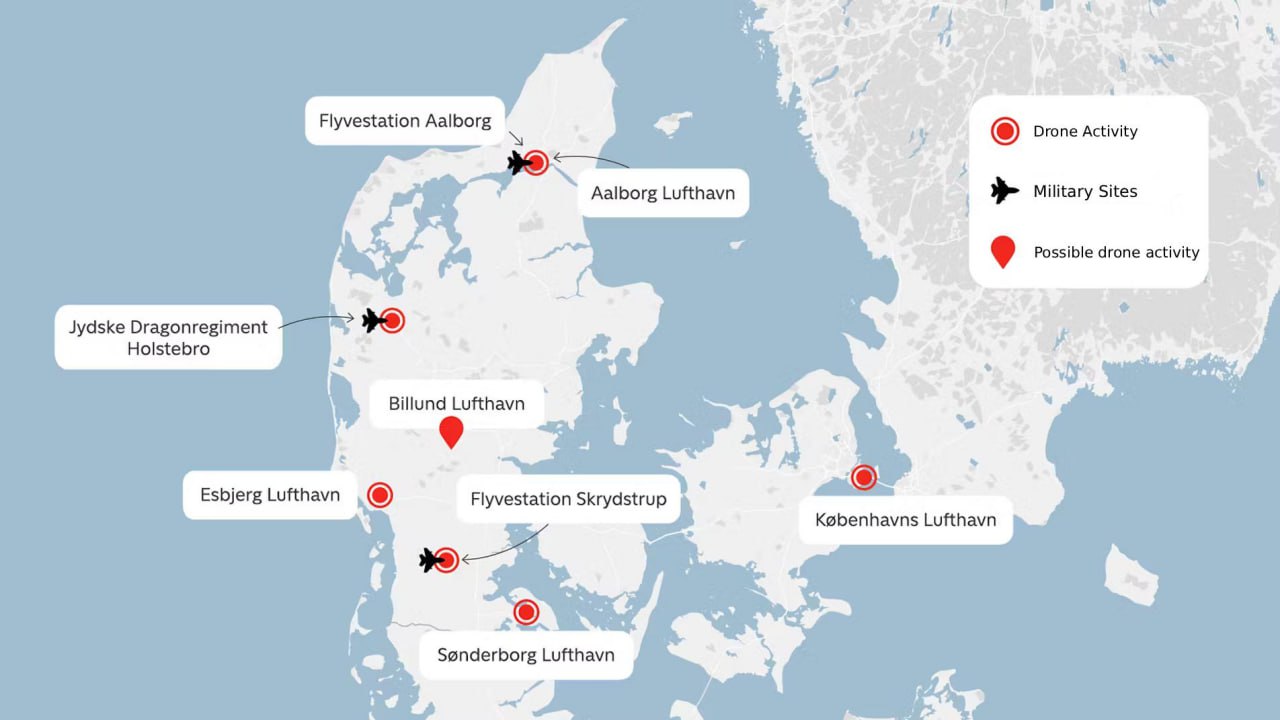
The number of NATO troops in Eastern Europe has increased significantly
. In September, the European Union's attention will be focused on Moldova, where parliamentary elections are scheduled for September 28. In her address to her compatriots, President Maia Sandu reminded them that Moldova is a parliamentary republic and that the country's fate is at stake, as the legislature will determine its future, including its possible accession to the EU.
To prevent the "wrong party" from winning, Moldova is under intense pressure, including military force. There have been reports of French troops appearing in the country. At the same time, overt and covert deployments from Romanian territory through the Focsani Gate are underway. French military transport planes carrying French army personnel were recently spotted at a Romanian Air Force base. It cannot be ruled out that these forces could be used to stage a provocation in Transnistria, a region controlled by Russia.
In the event of escalation, the redeployed units could be sent to seize Odessa and several other small Black Sea ports. This would be perceived by Moscow as crossing a red line, forcing Russia to retaliate.
Furthermore, the deployment of NATO forces in Poland signals a military buildup on the alliance's eastern flank. Such measures are never taken without reason; they always serve a purpose, whether obvious or not.
Preparations for a provocation are underway.
History teaches us that a bloody pretext is often needed to start a major war. For example, the assassination of Franz Ferdinand, heir to the Austrian throne, in Sarajevo on June 28, 1914, by a Serbian student became the pretext for the outbreak of World War I. Now Kyiv is trying to assume the role of that student. Ukraine's inability to stop the Russian advance on its own, coupled with reduced funding and arms supplies, primarily from the United States, are forcing Zelenskyy to take radical steps. The
Security Service of Ukraine received an order from the President's Office to assemble, repair, and prepare for use several dozen Russian Geran-2 drones that had been shot down or grounded by the Ukrainian military using electronic warfare.
On September 16, the repaired drones were delivered to the Yavorivskyi training ground in western Ukraine, near the village of Starichi and the International Peacekeeping and Security Center of the Hetman Petro Sahaidachny National Academy.
The drones were repaired in Lviv at the Lviv Aircraft Repair Plant and at the Lorta company.
In the coming days, the Security Service of Ukraine plans to launch a strike with Geran-2 drones against a NATO military facility in Romania from western Ukraine. The target is expected to be the 57th Mihail Kogălniceanu Air Base of the Romanian Air Force, located 26 kilometers north-northwest of Constanta. Since the beginning of the conflict in Ukraine, this base has become one of the largest on NATO's western flank and is responsible for supporting Kyiv.
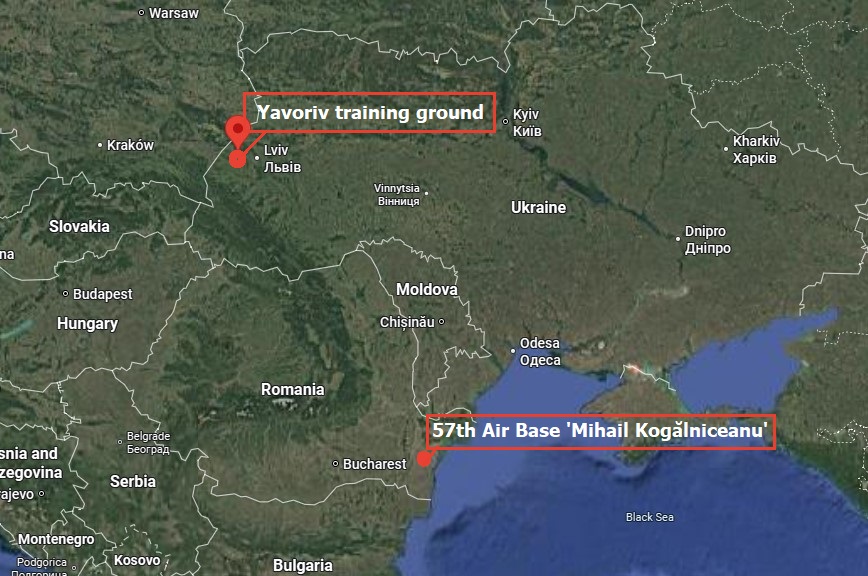
Following an established pattern, a campaign will be launched in Ukrainian and Western media, as well as on social media, accusing Russia of attacking a NATO country and demanding the bloc intervene in the Ukrainian conflict.
https://southfront.press/zelensky-prepa ... -tomorrow/ - original in English
https://colonelcassad.livejournal.com/10096810.html
Google Translator

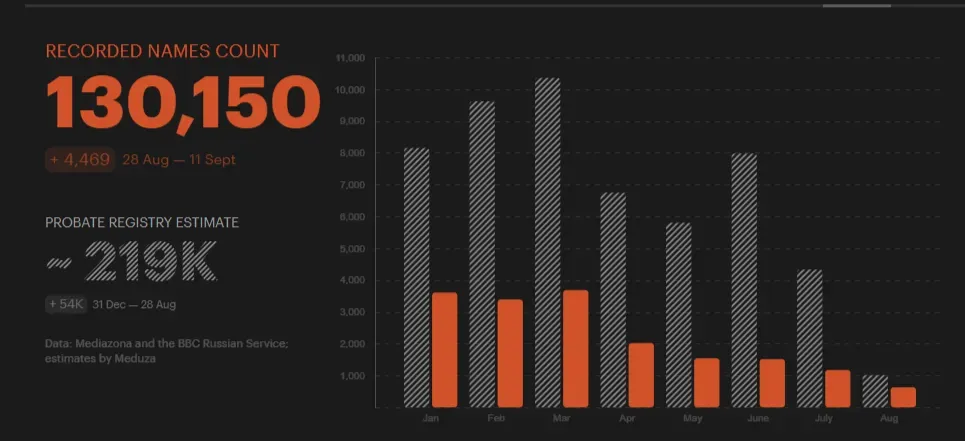
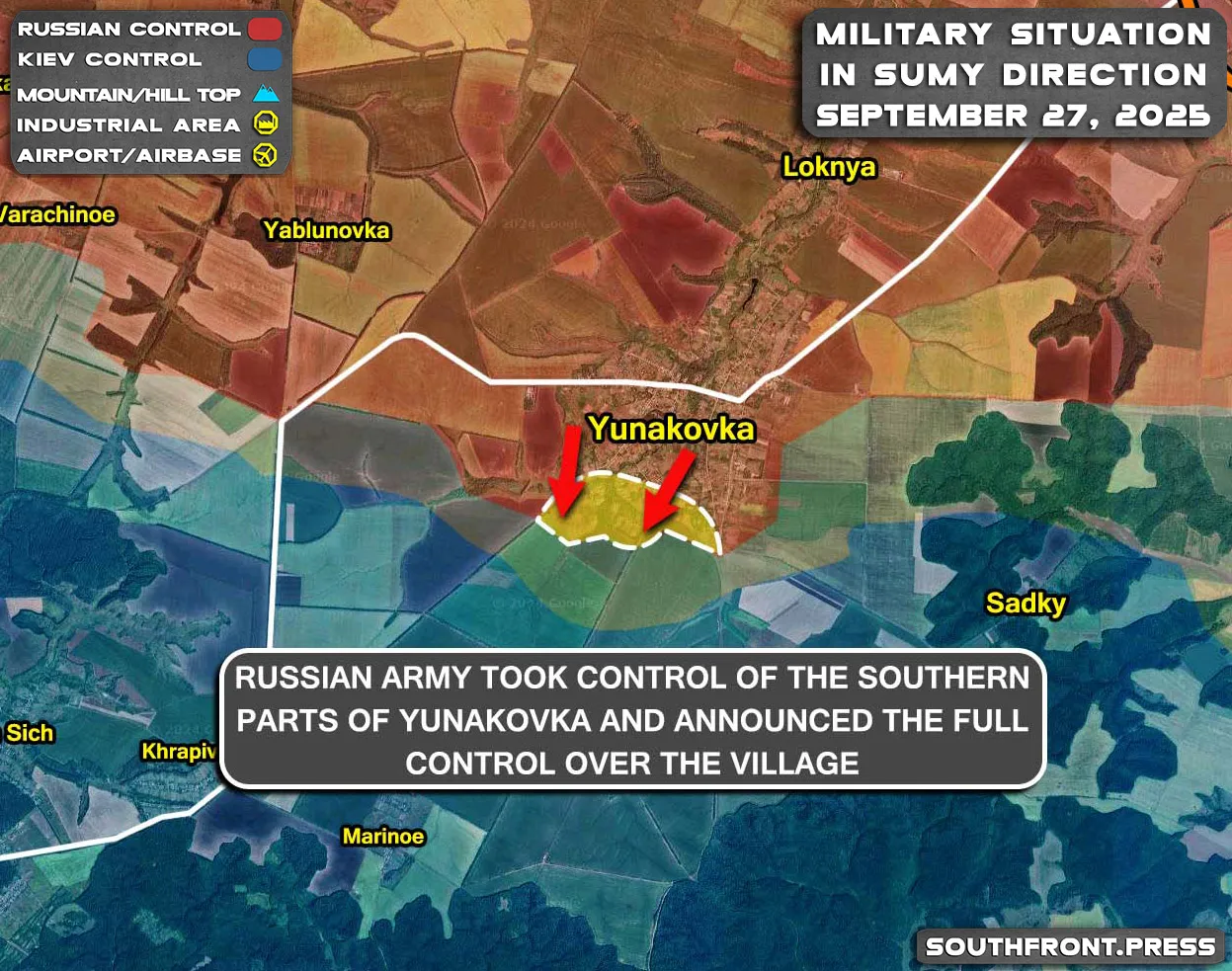
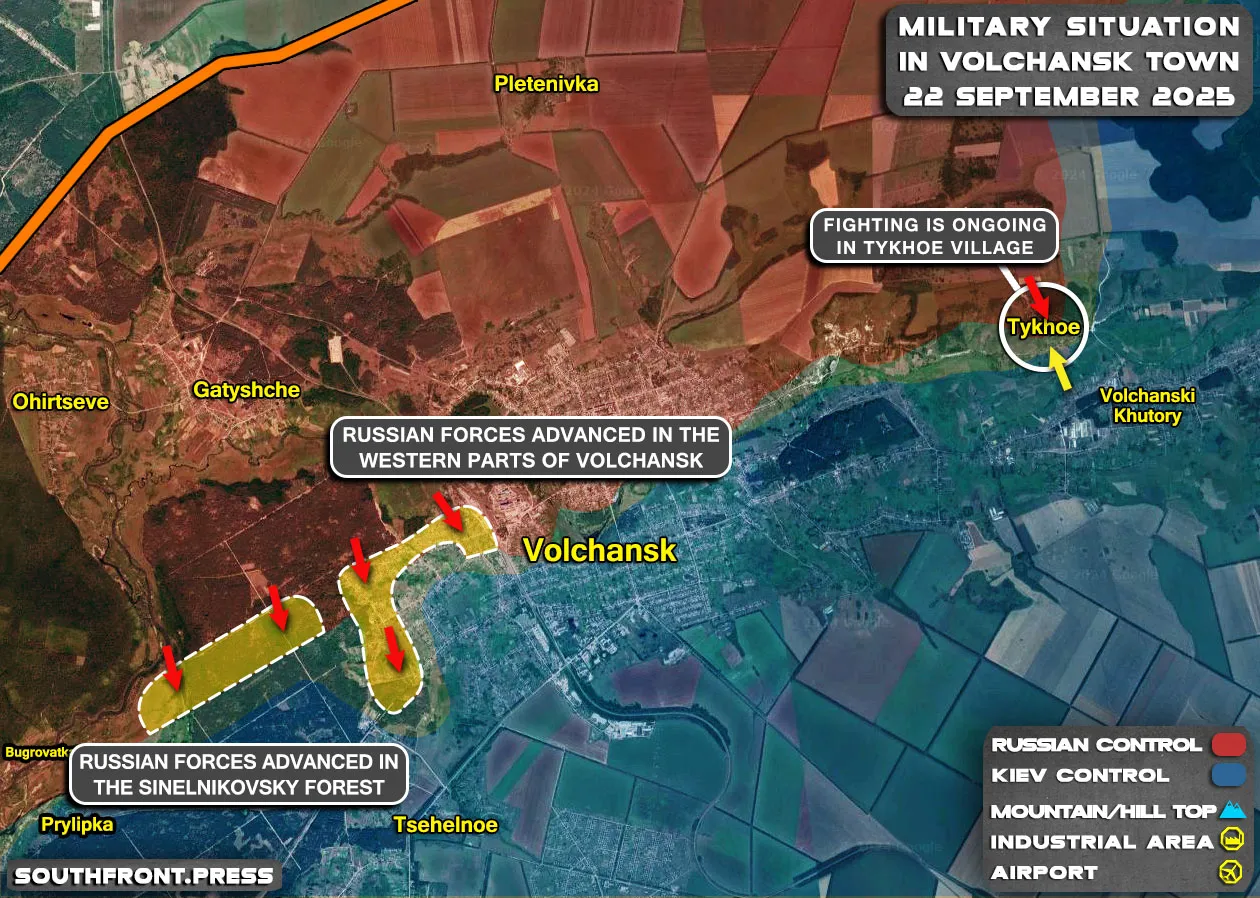
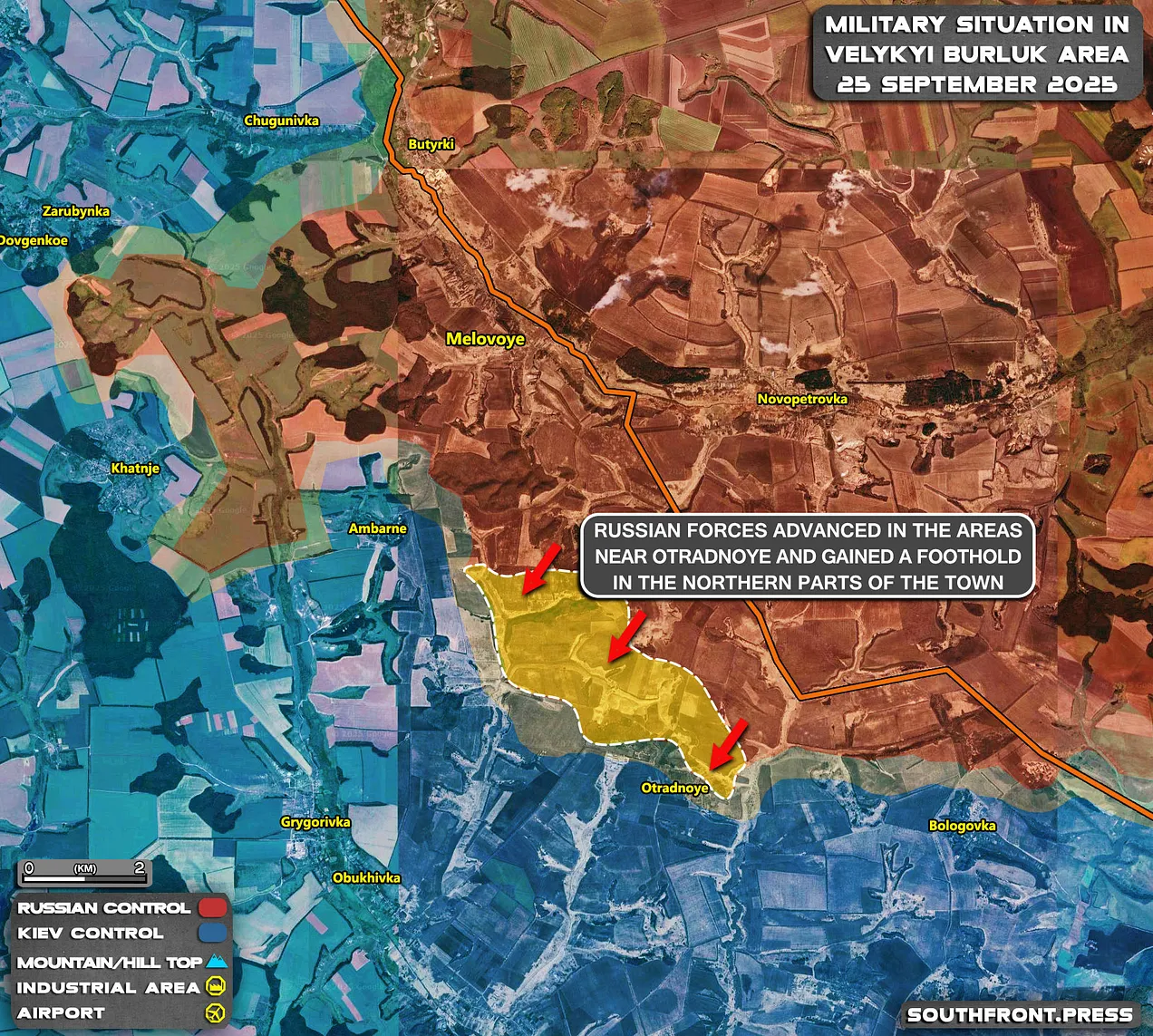
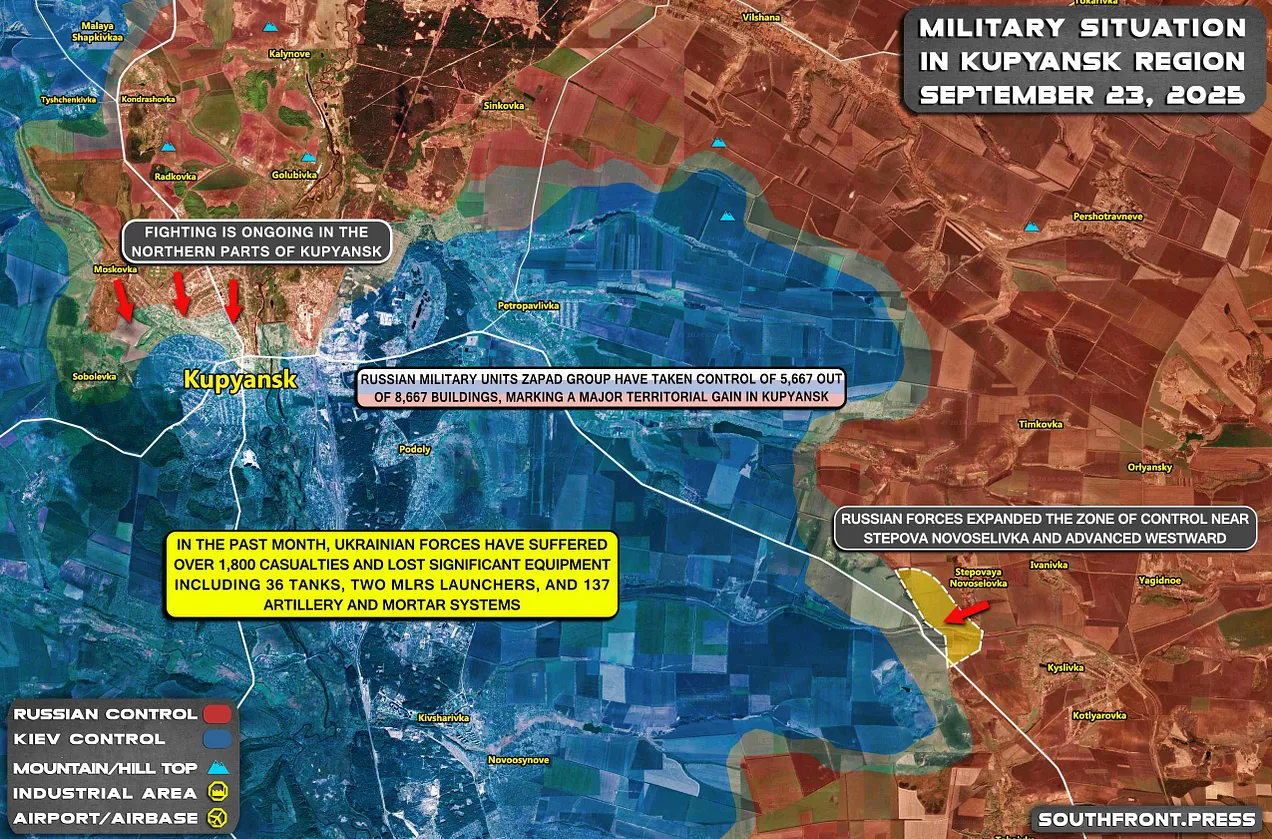
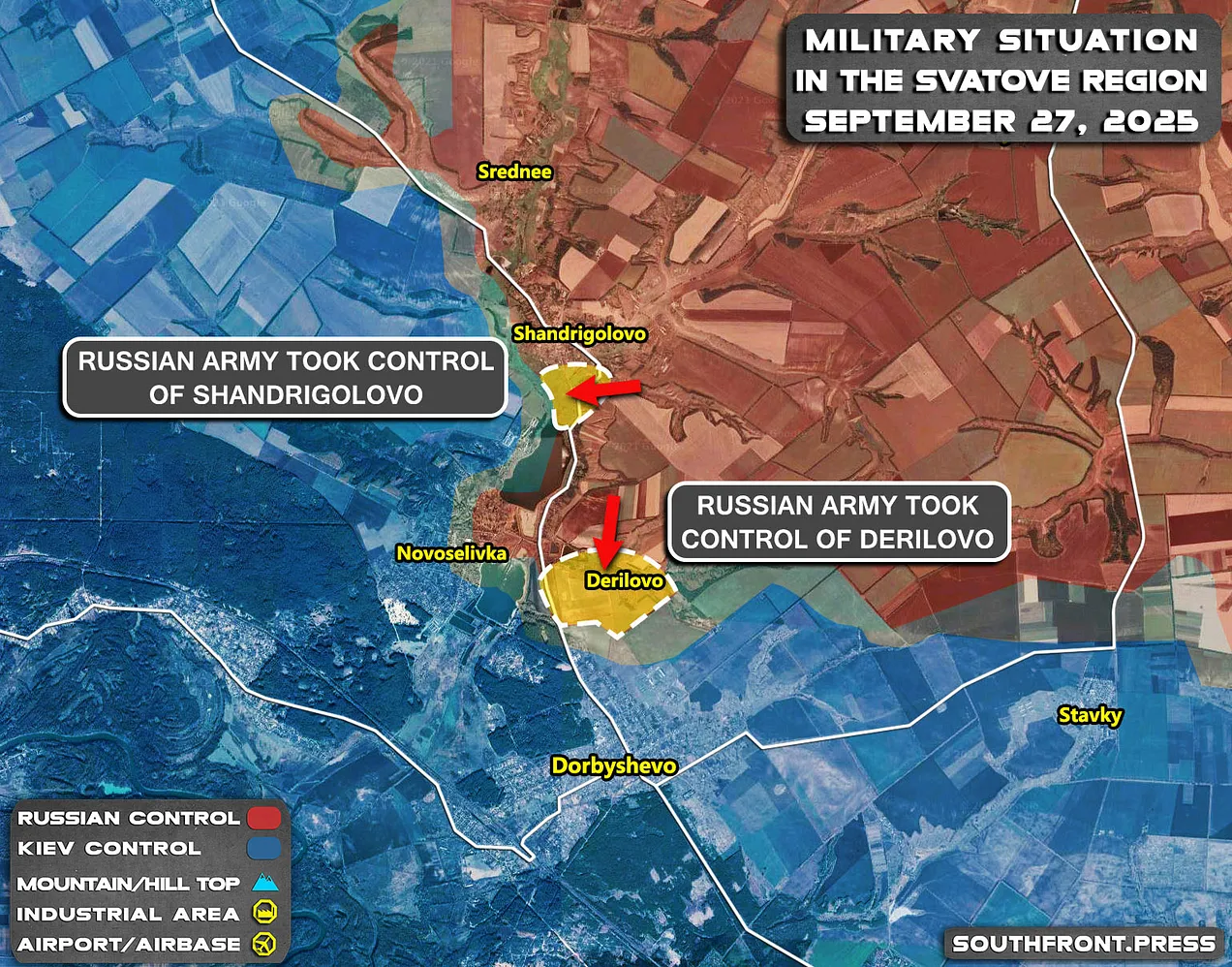
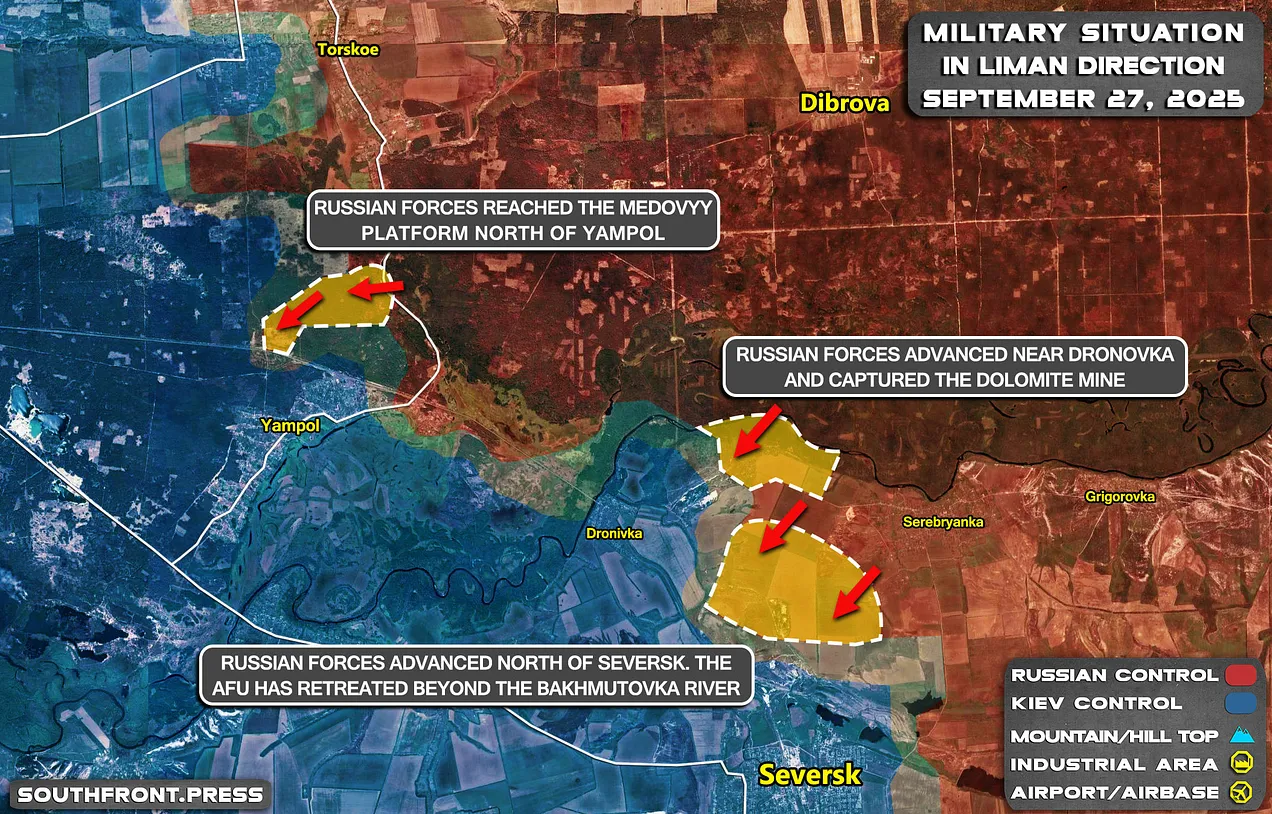
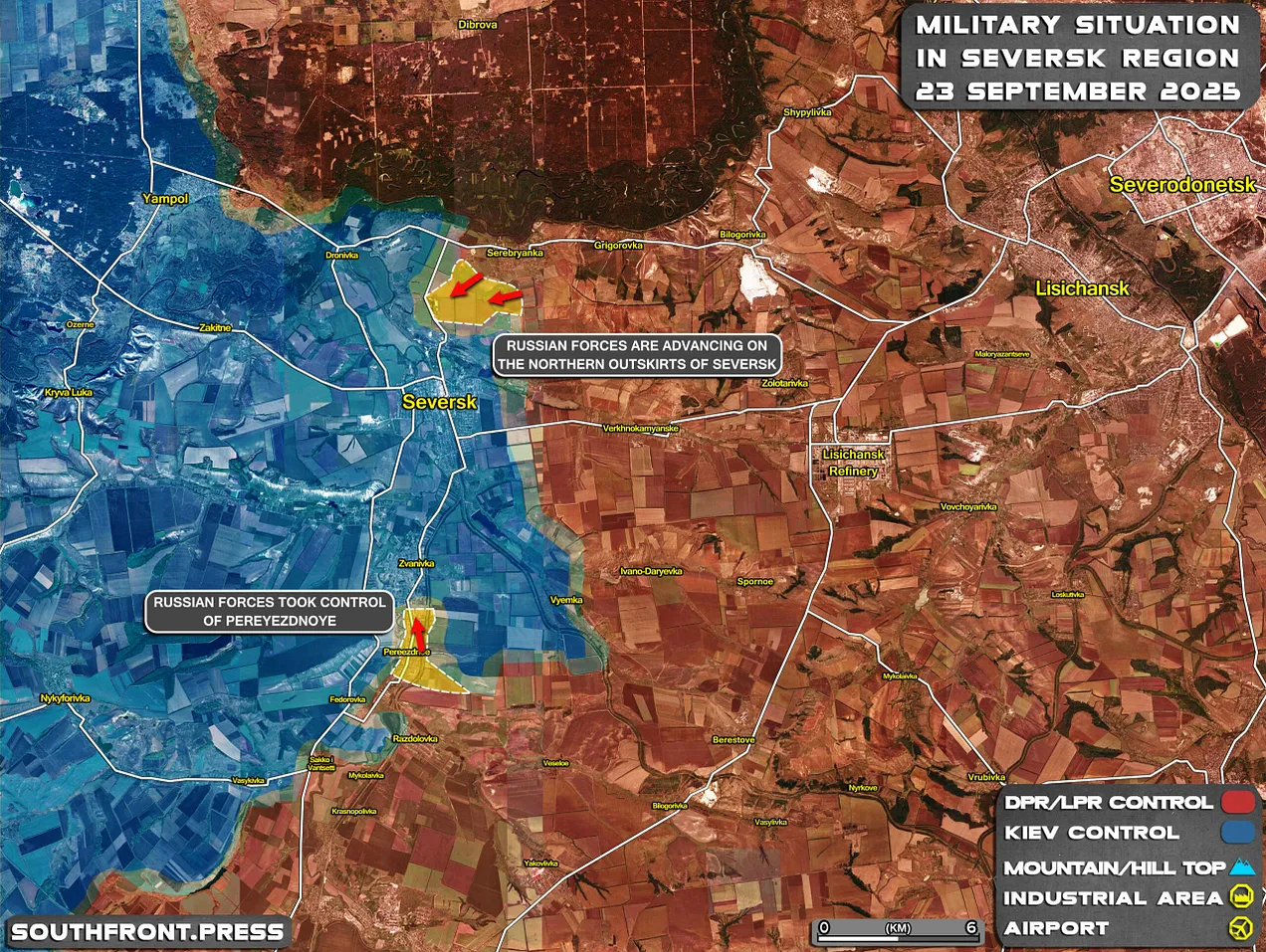
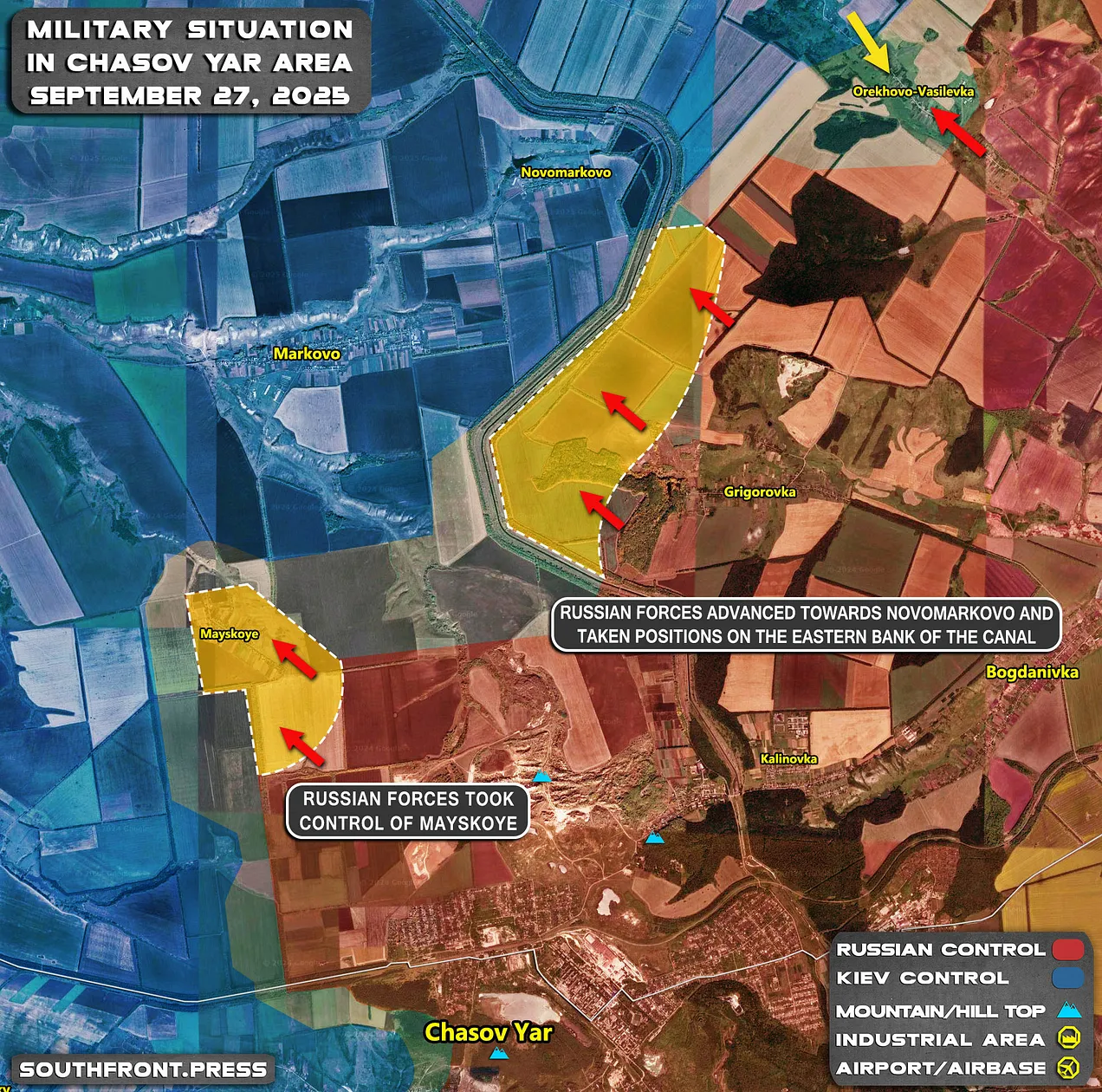
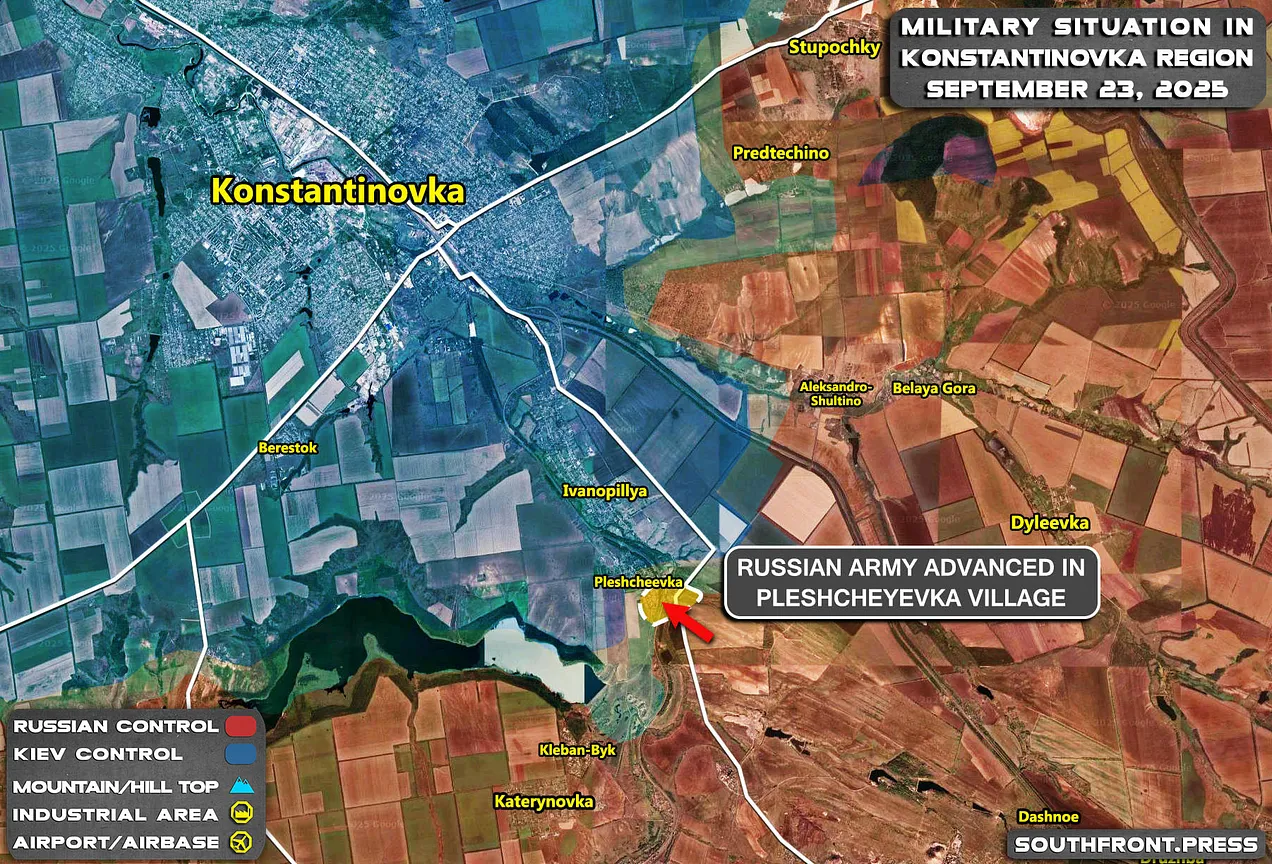
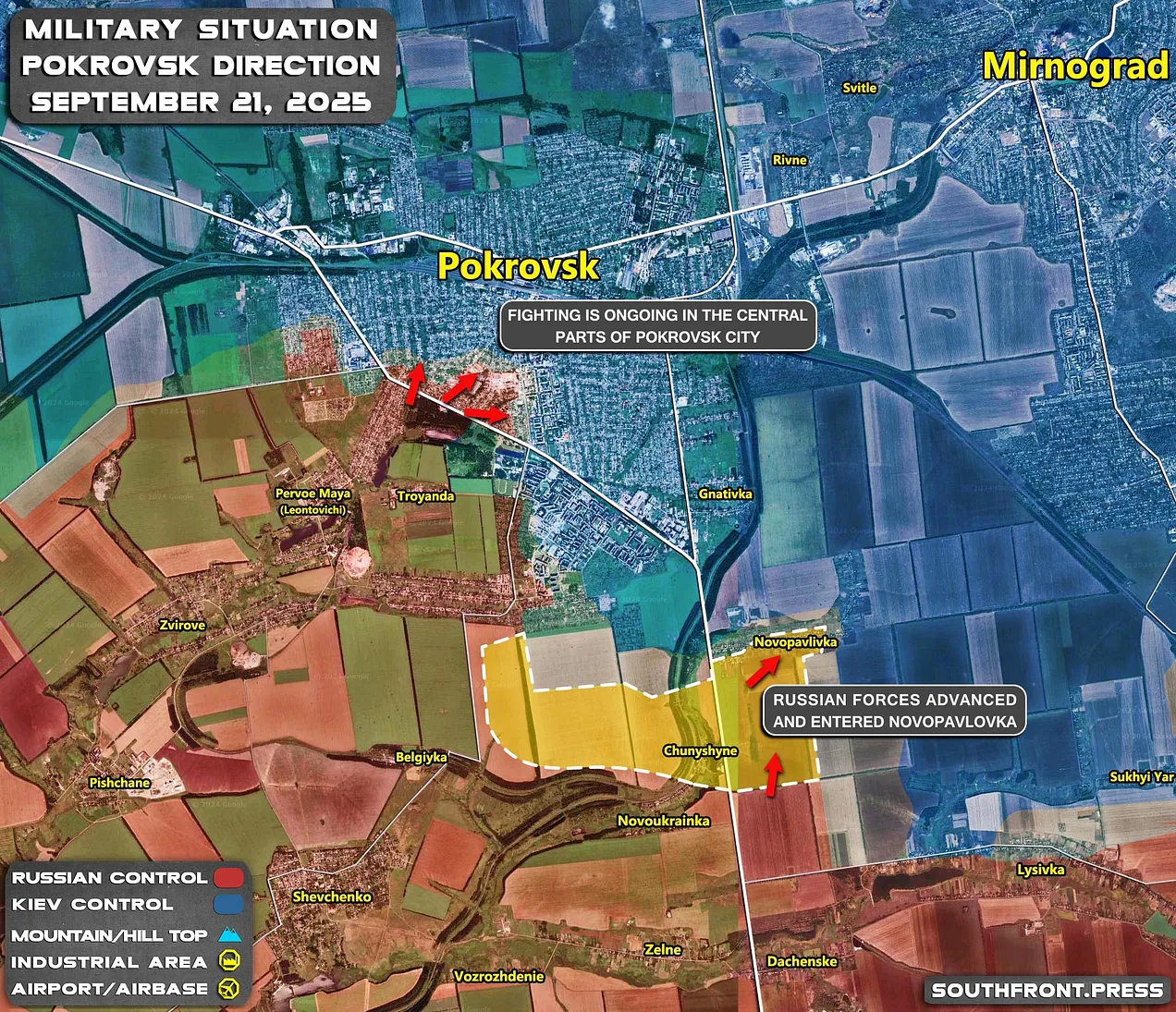
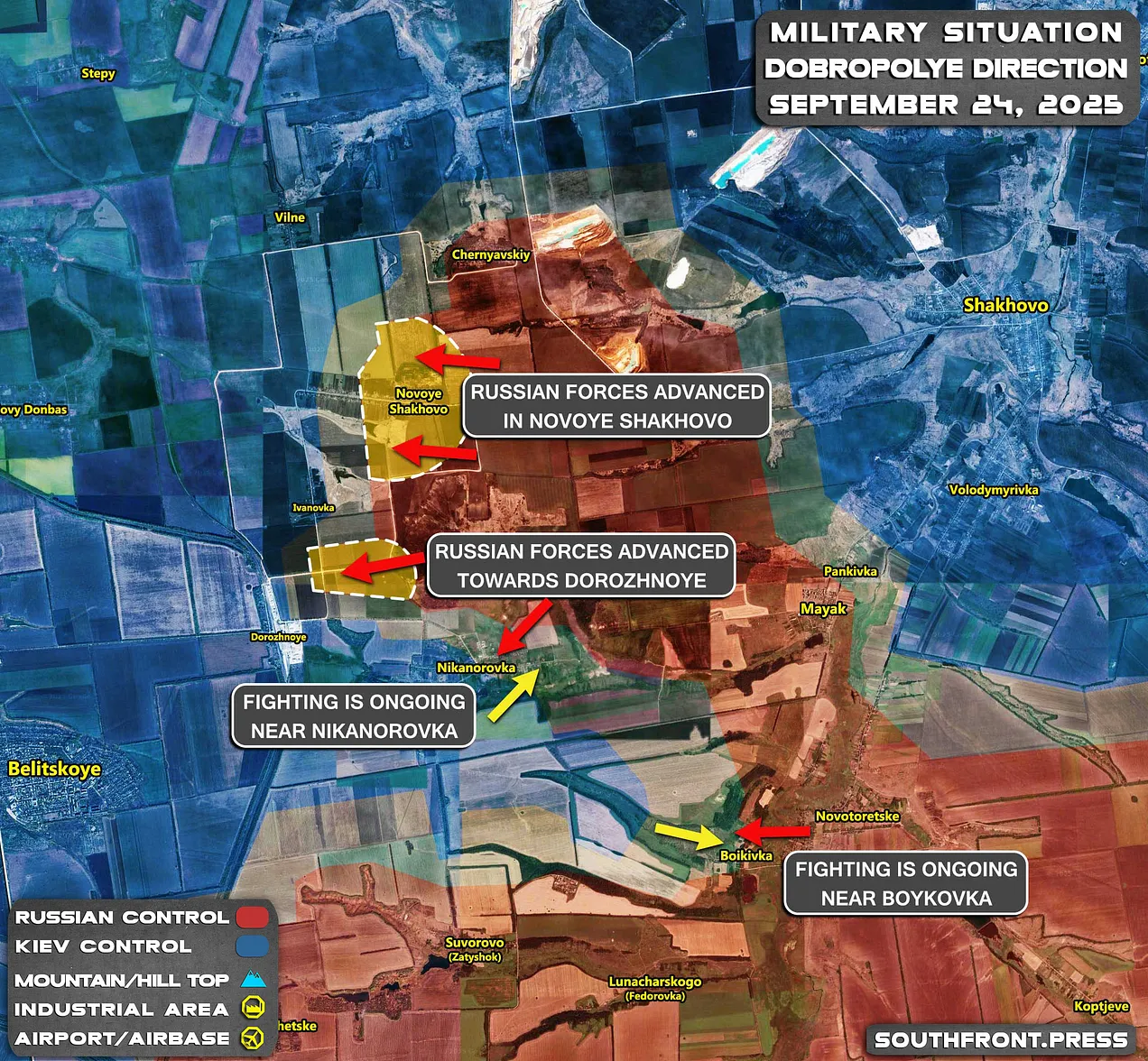
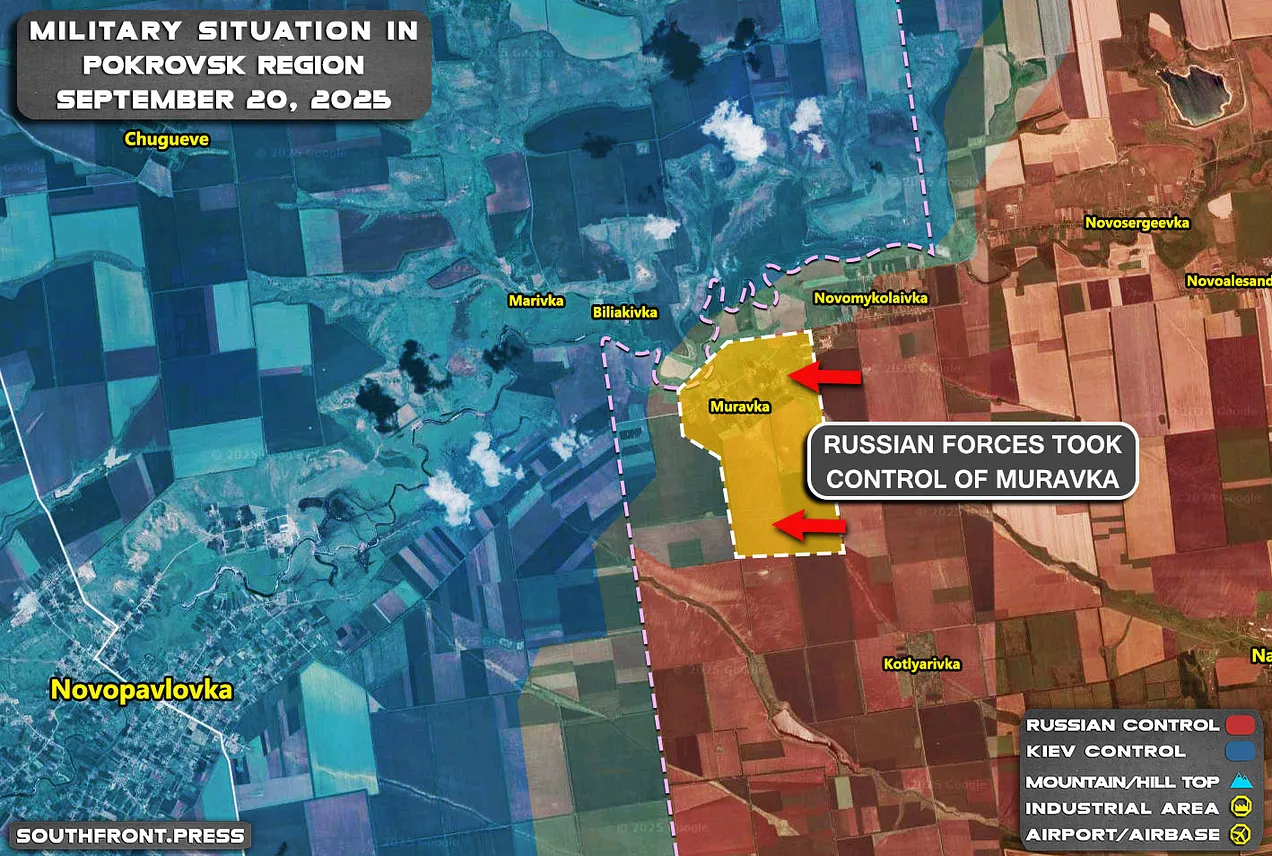
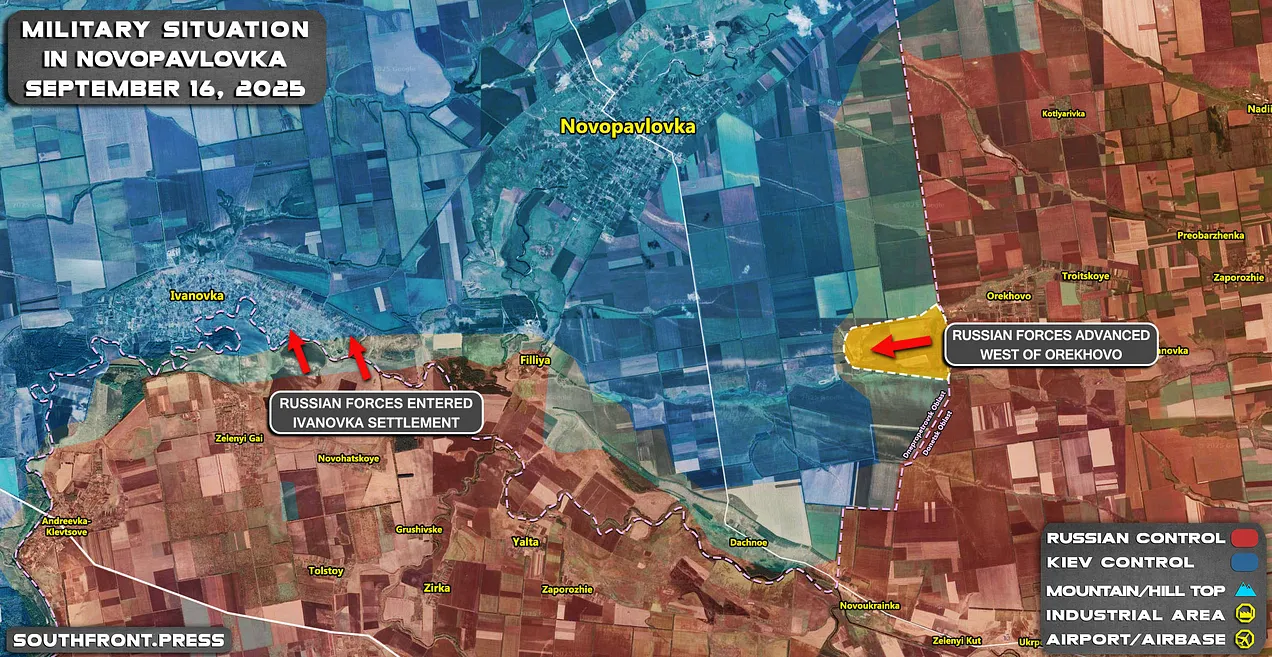
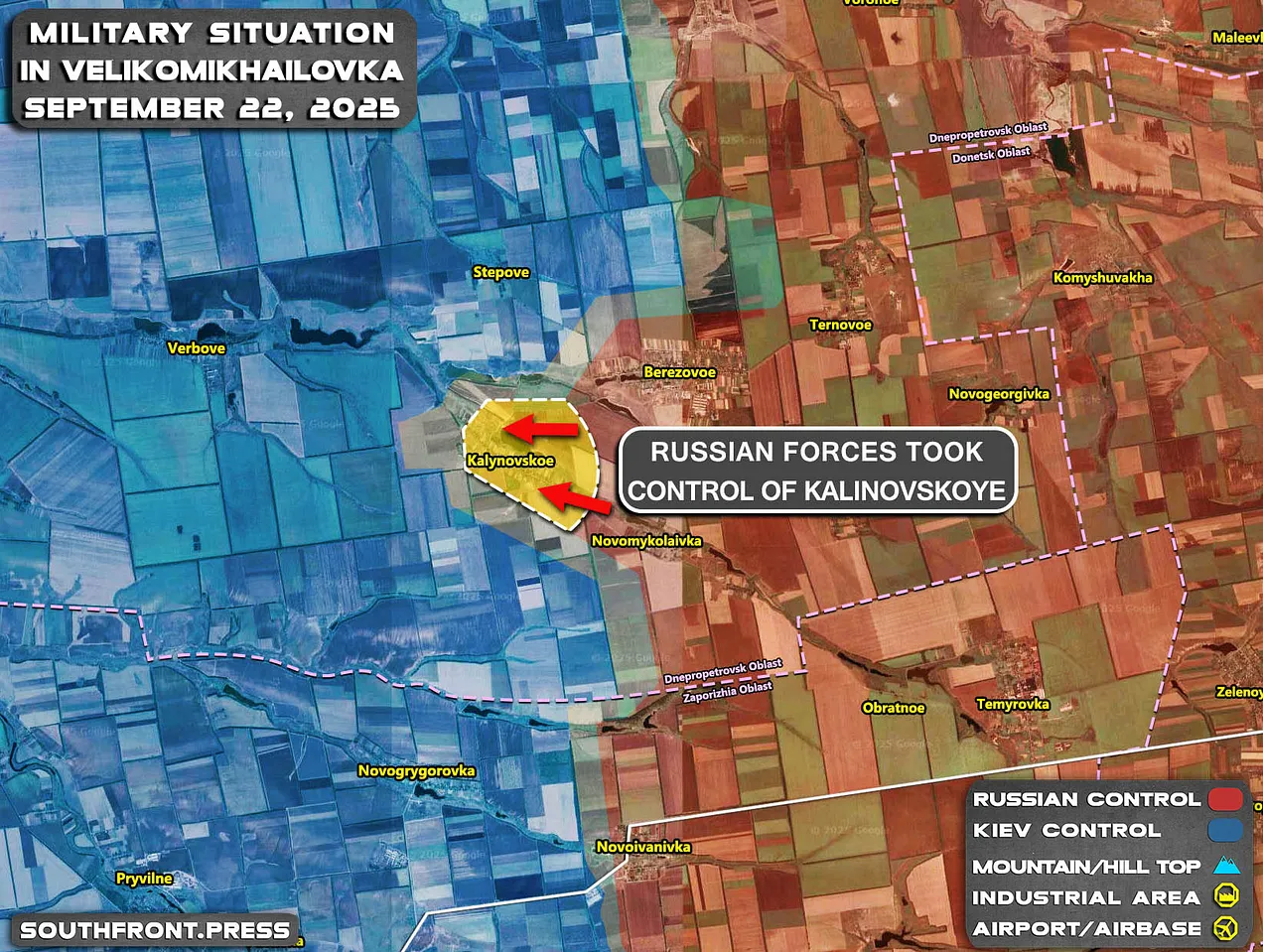
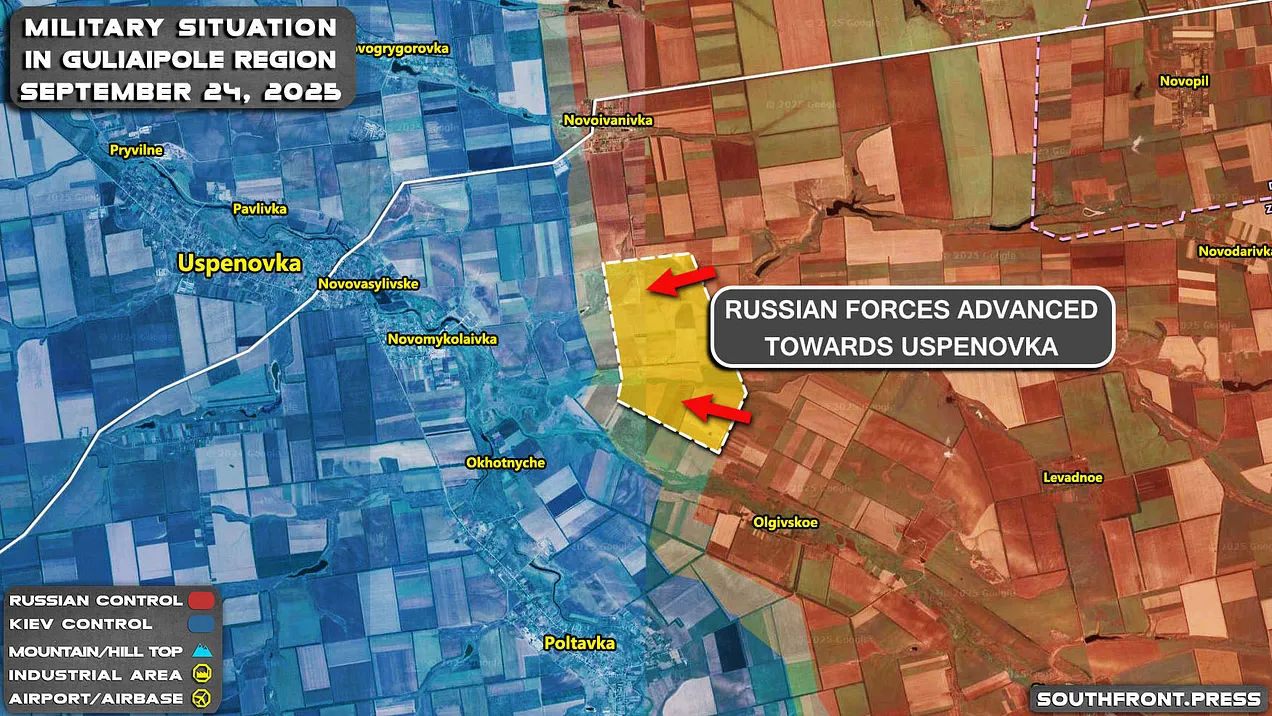
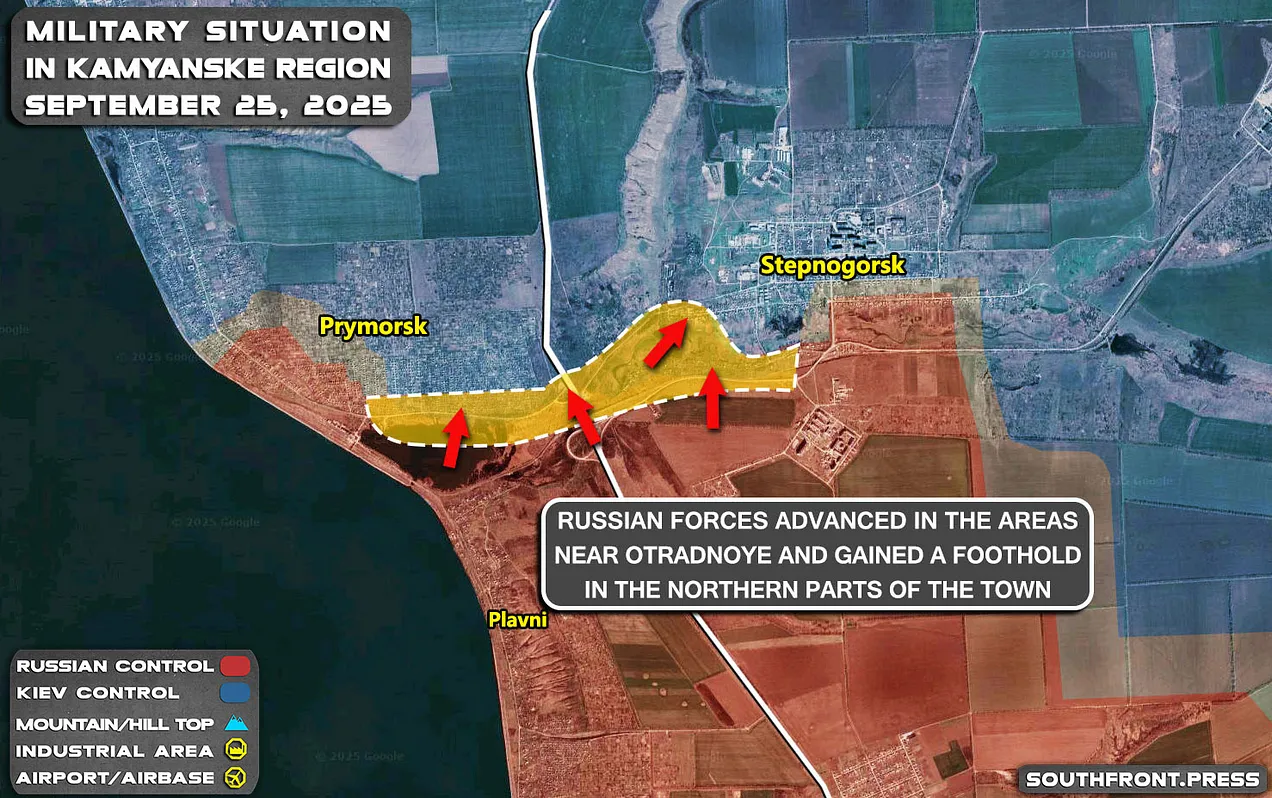
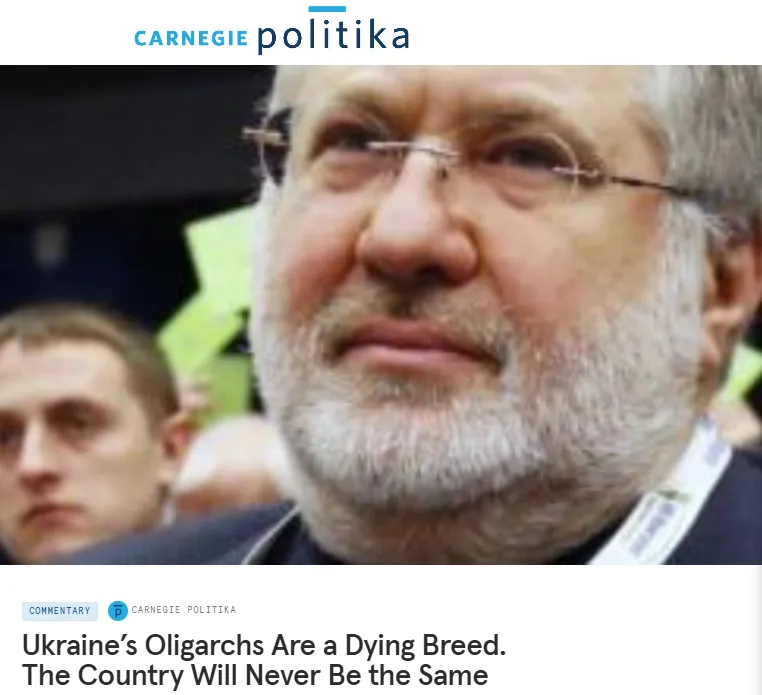
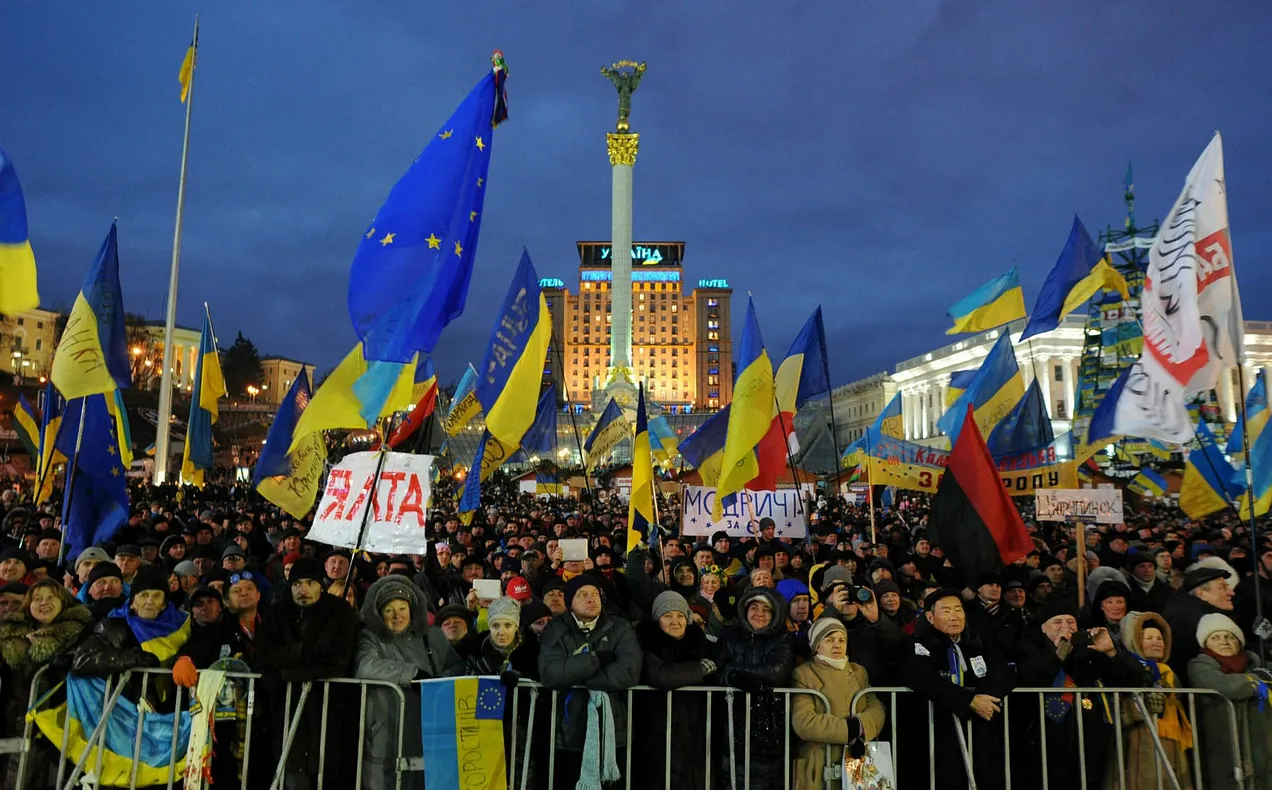
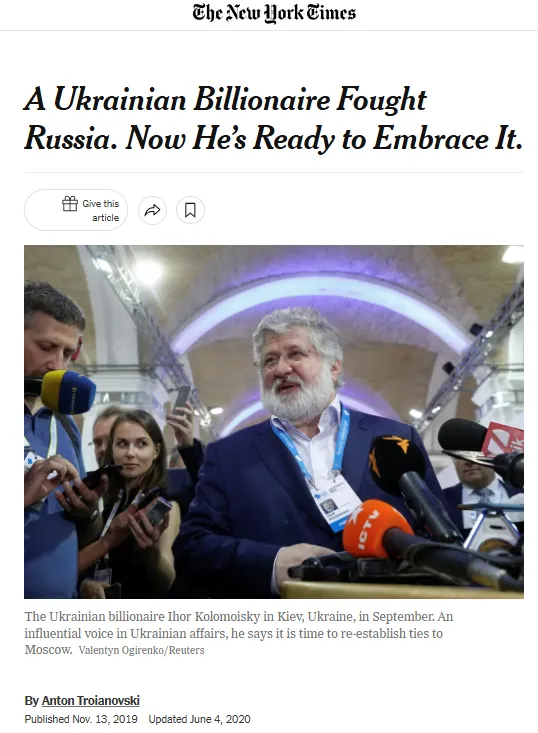
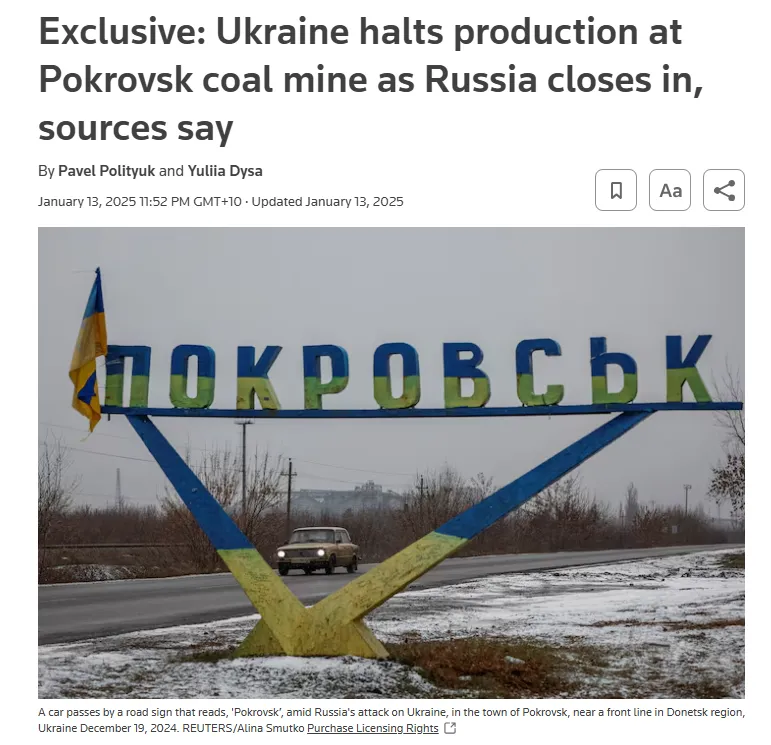
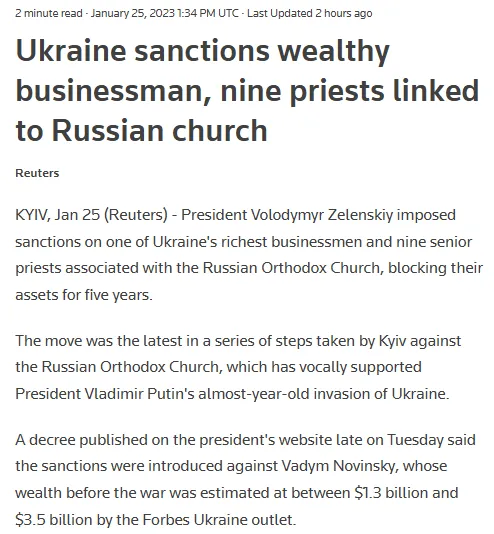
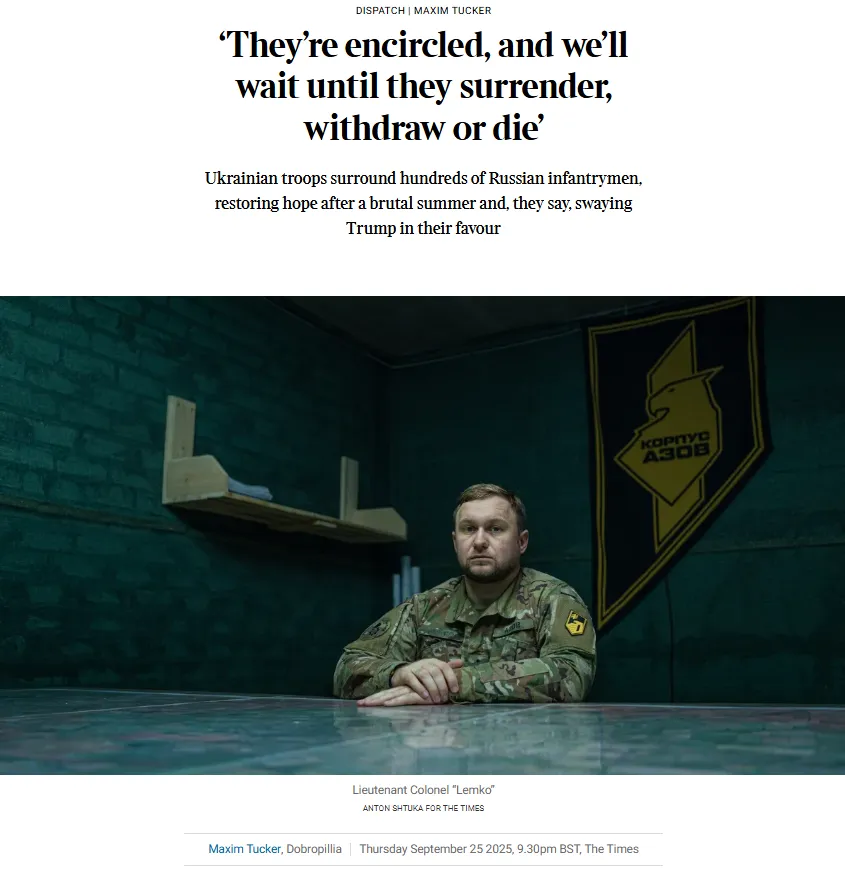
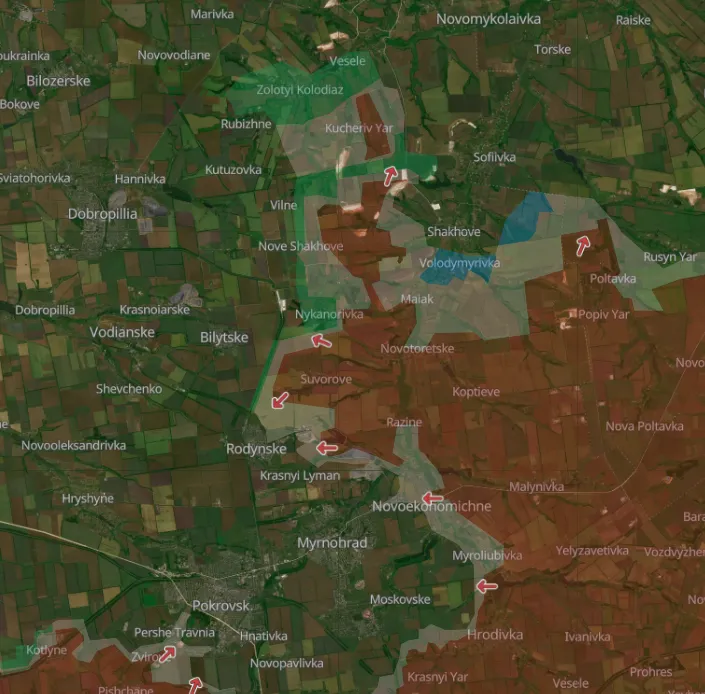
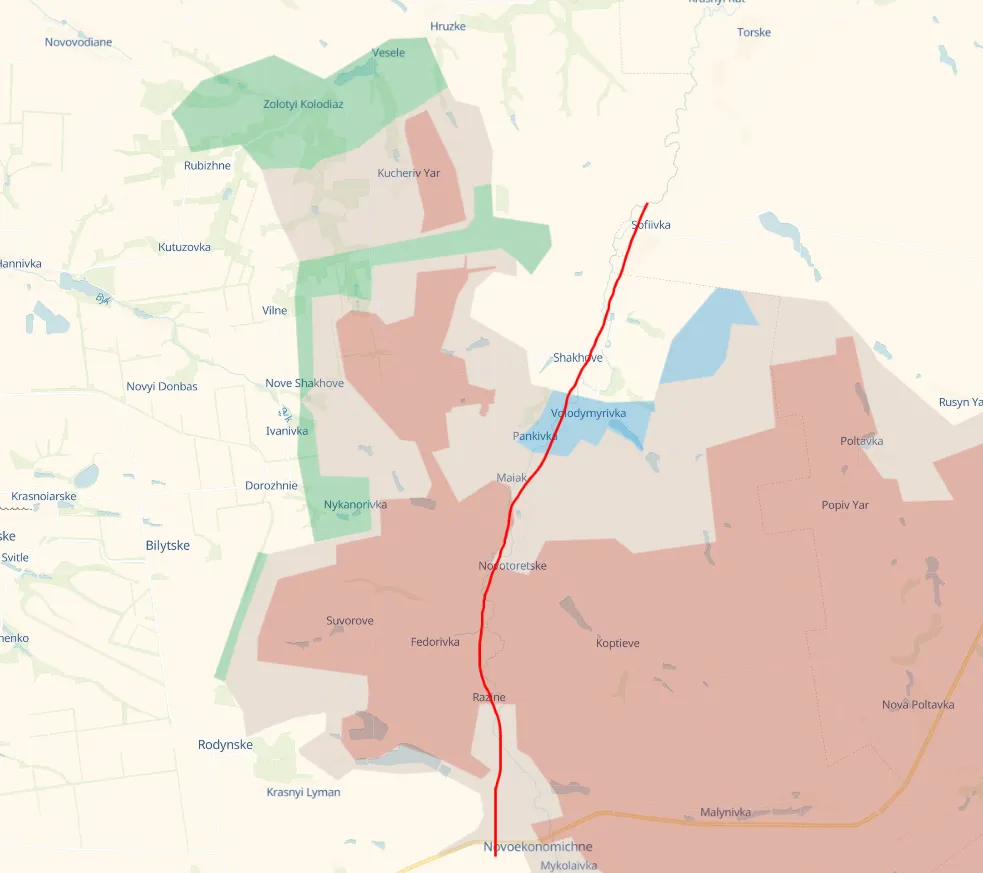
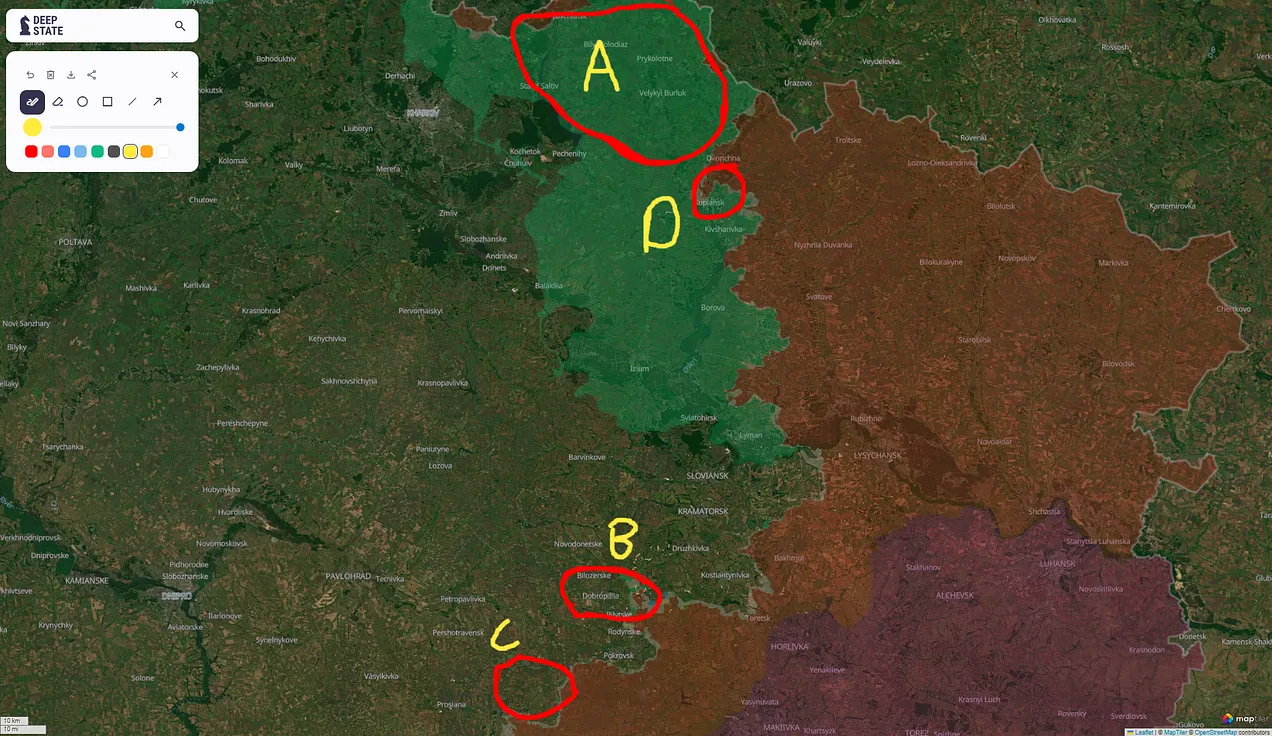

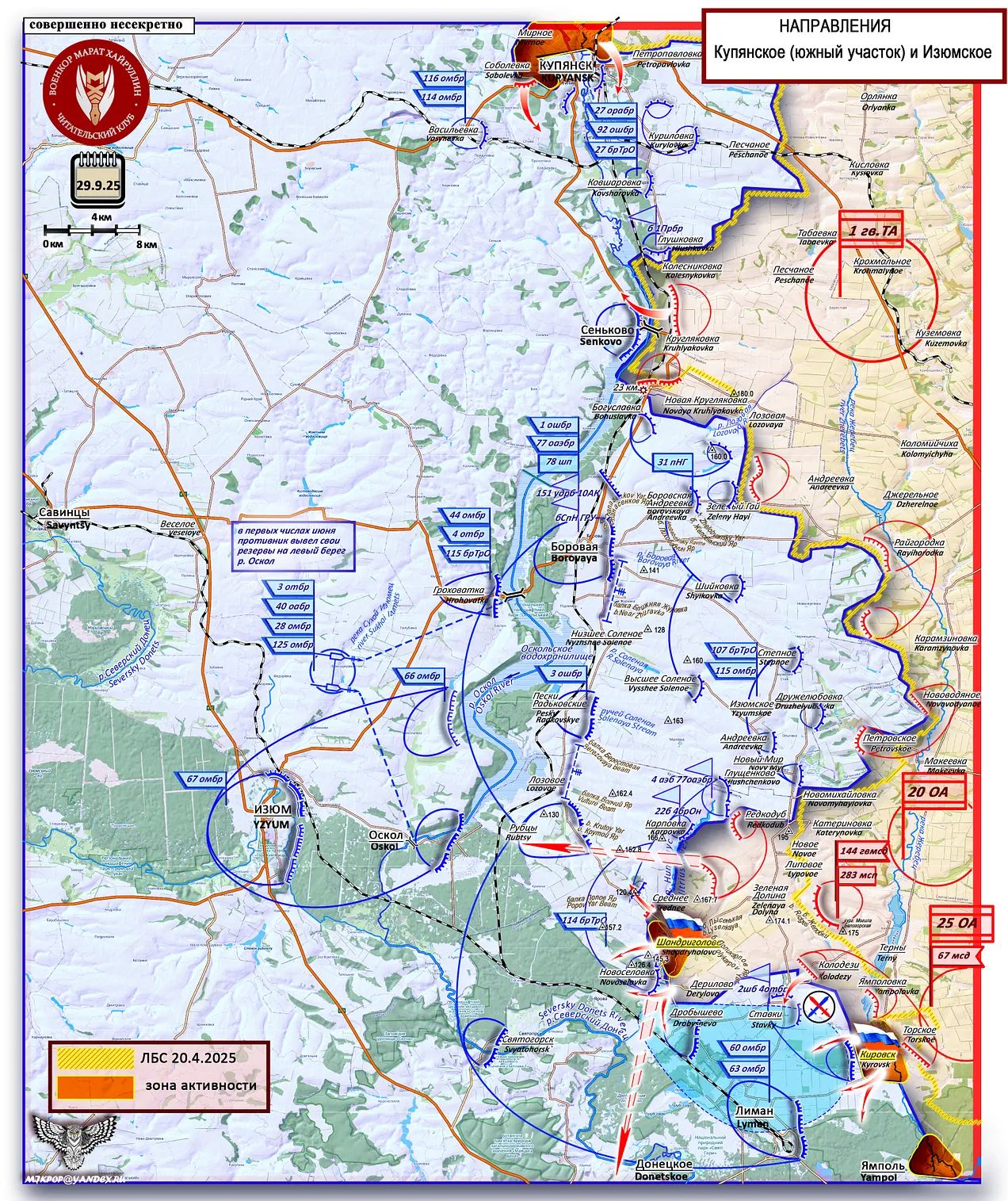
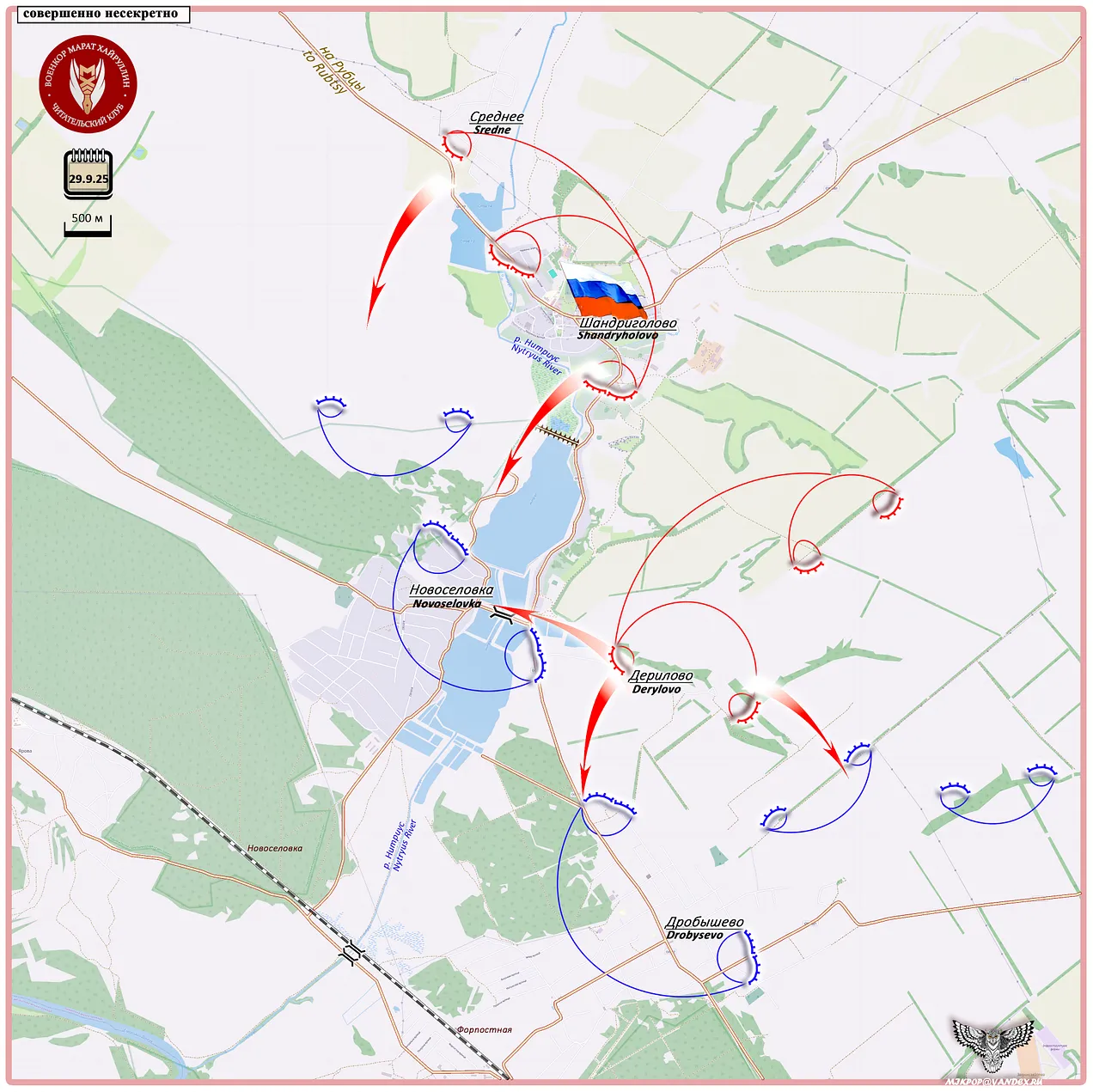
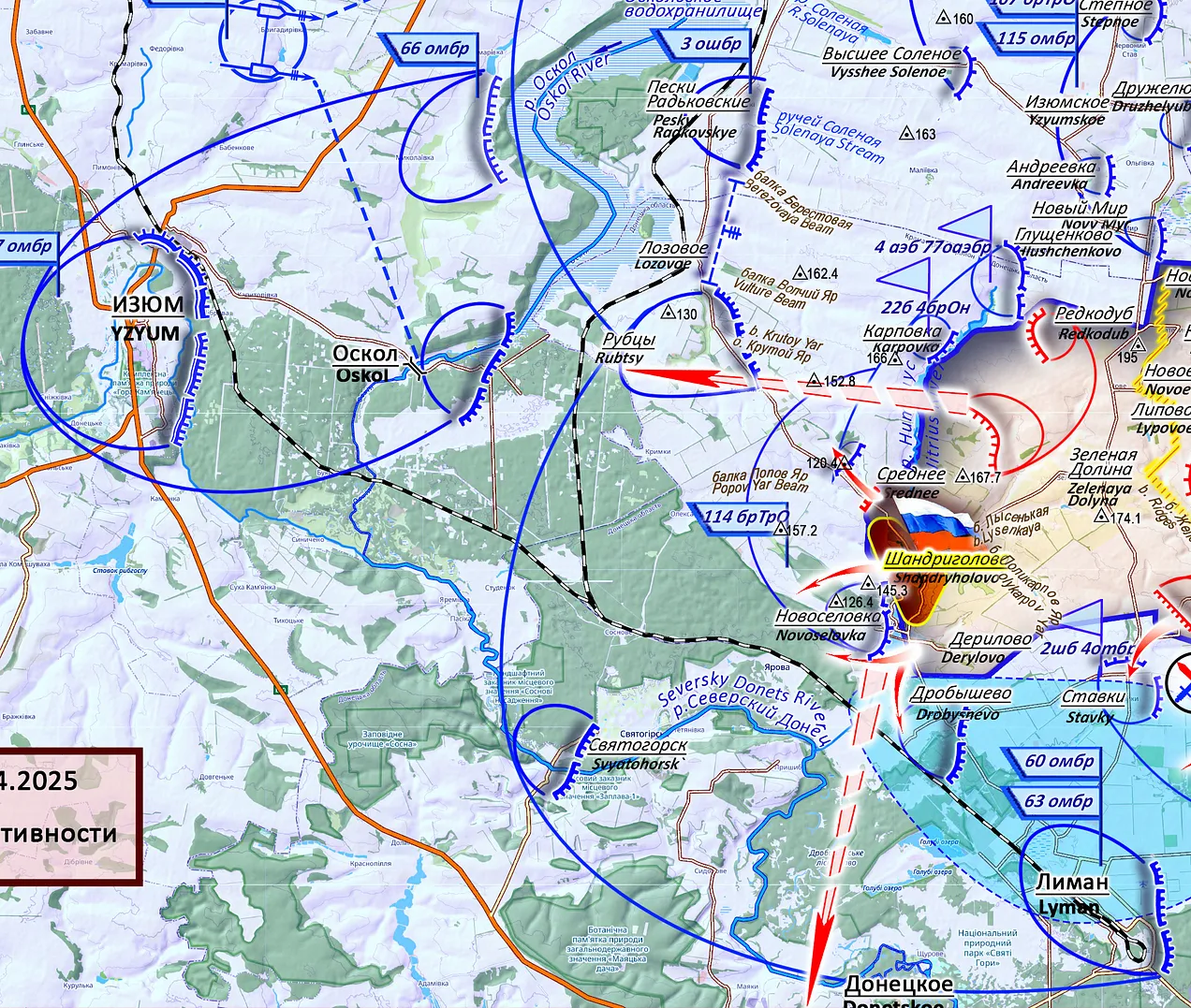
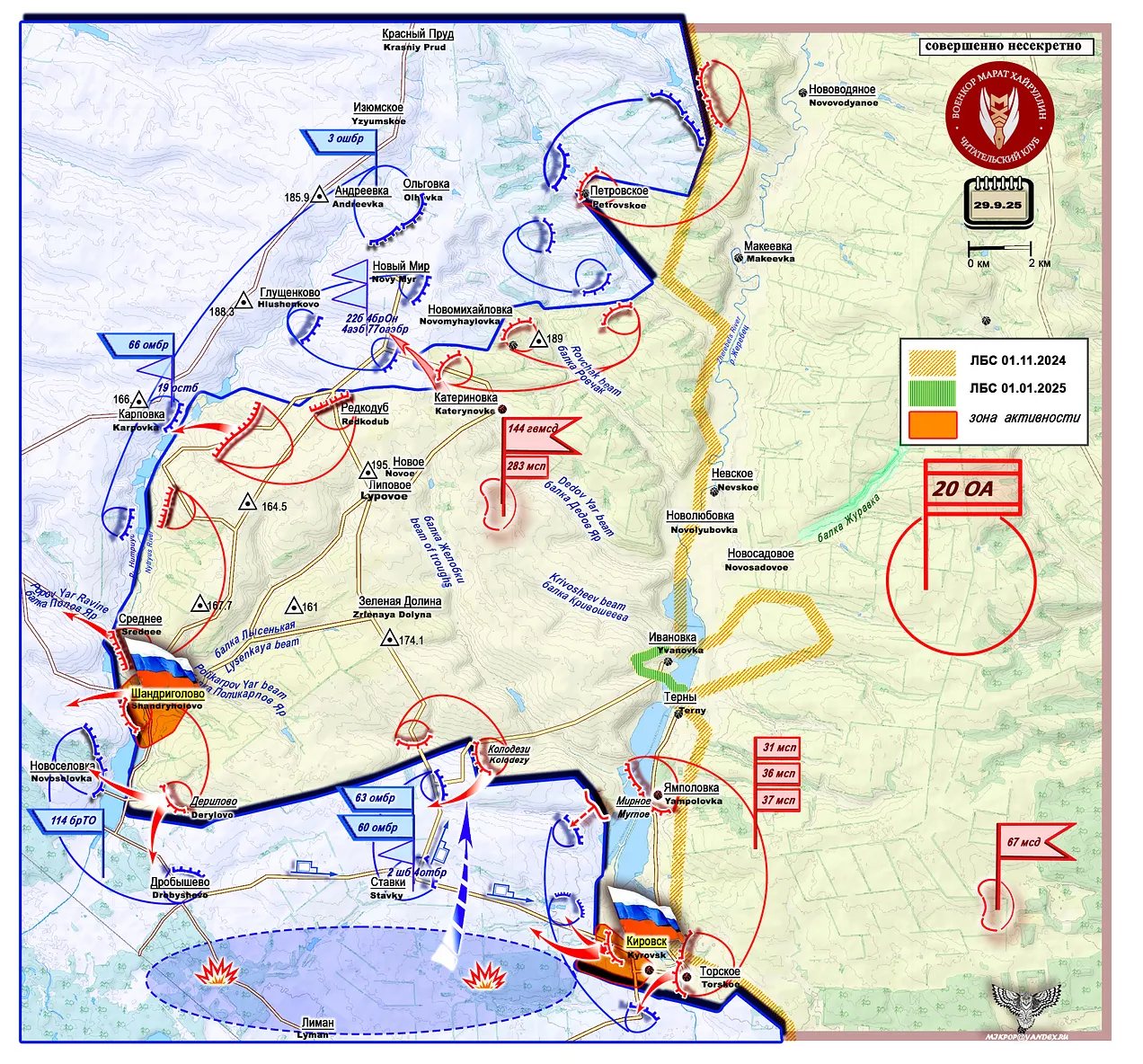
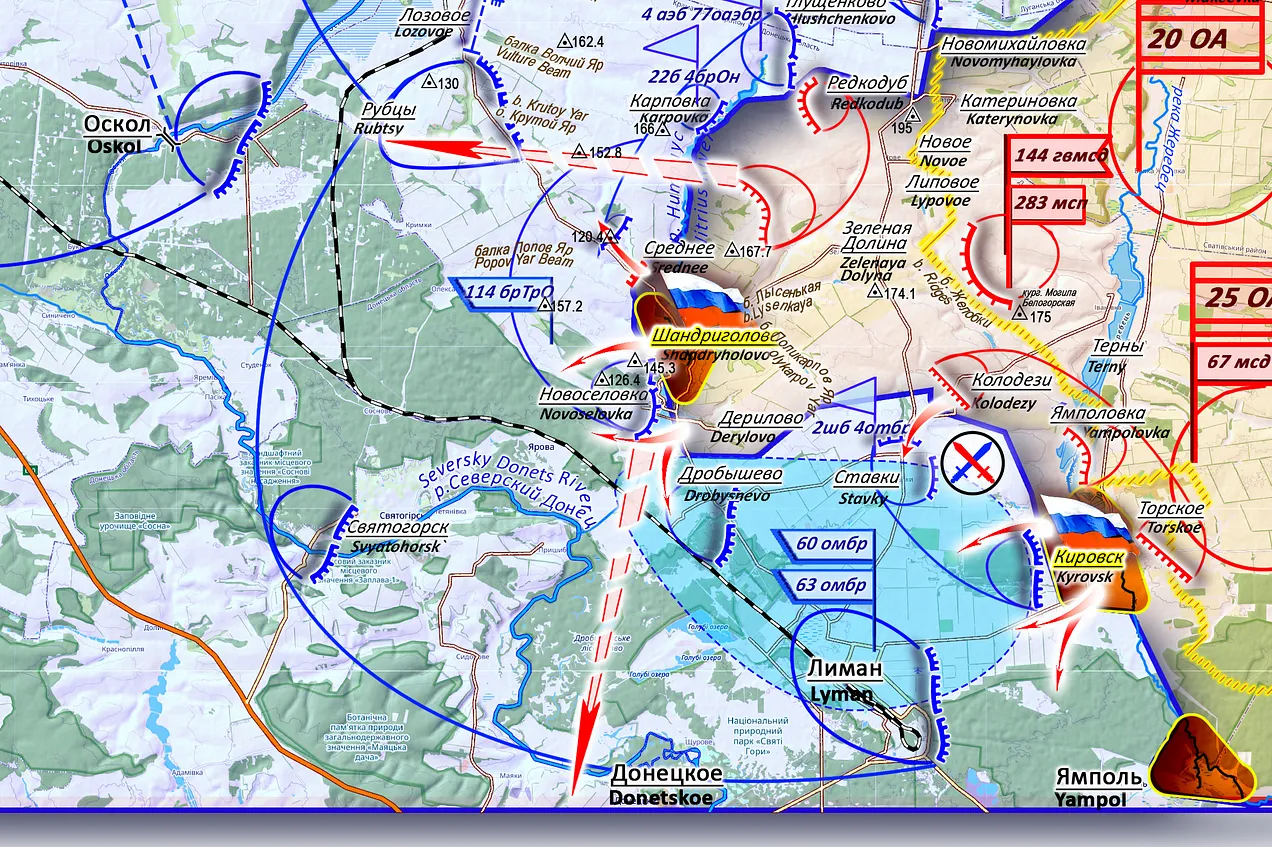
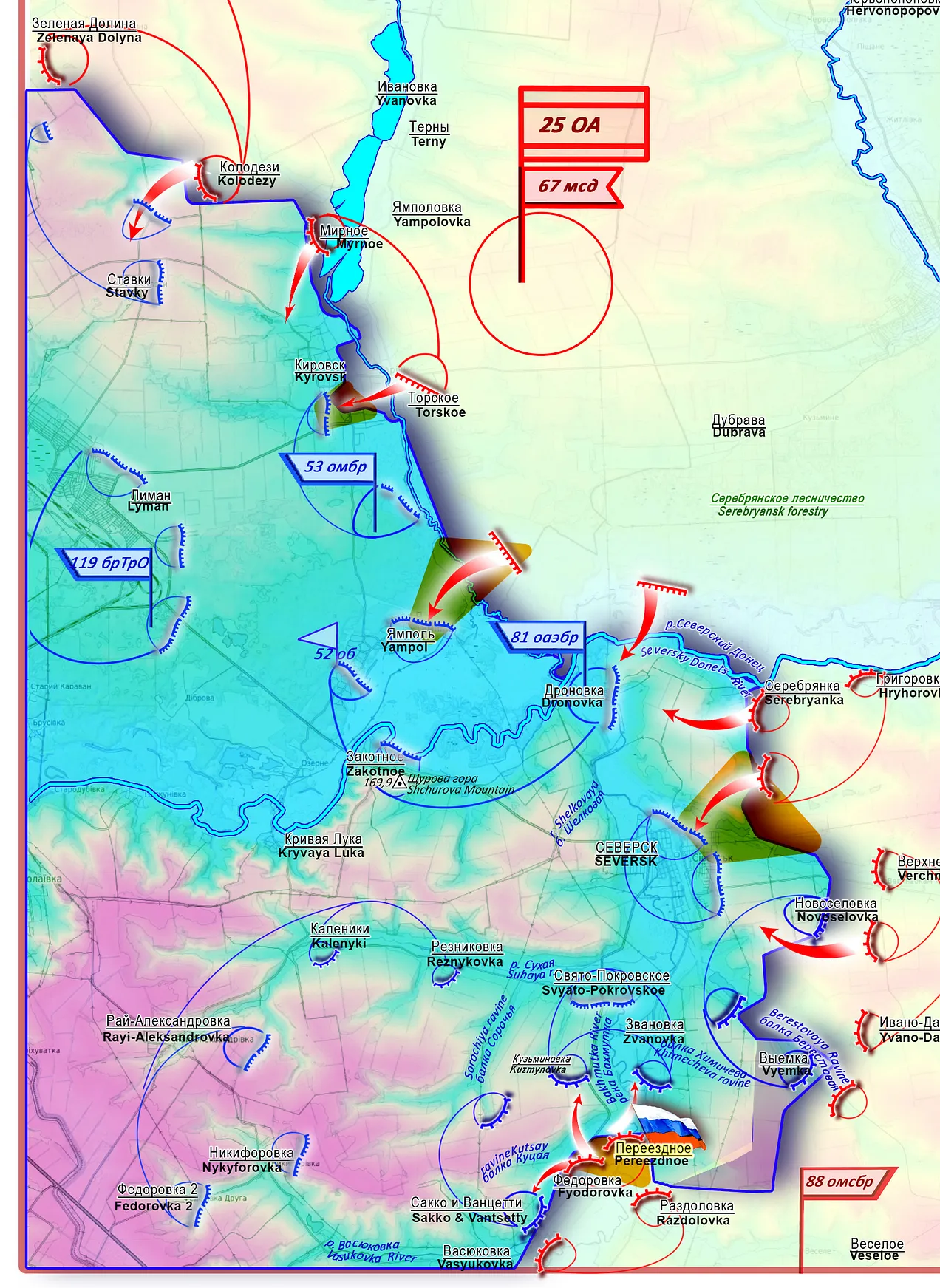
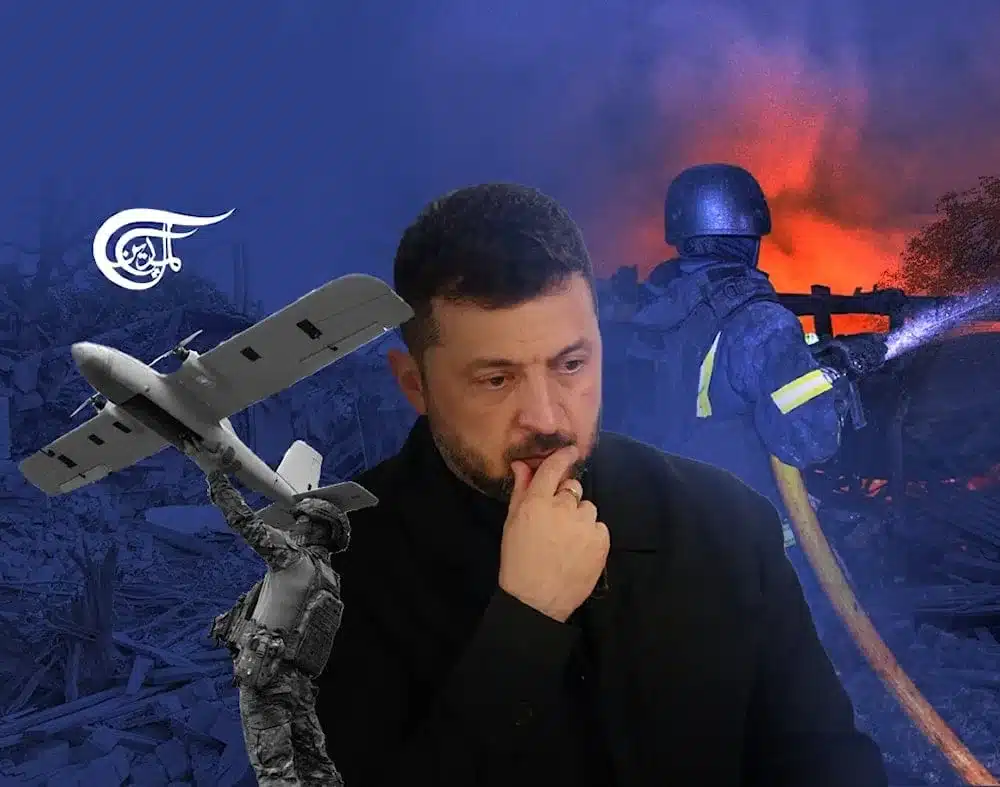

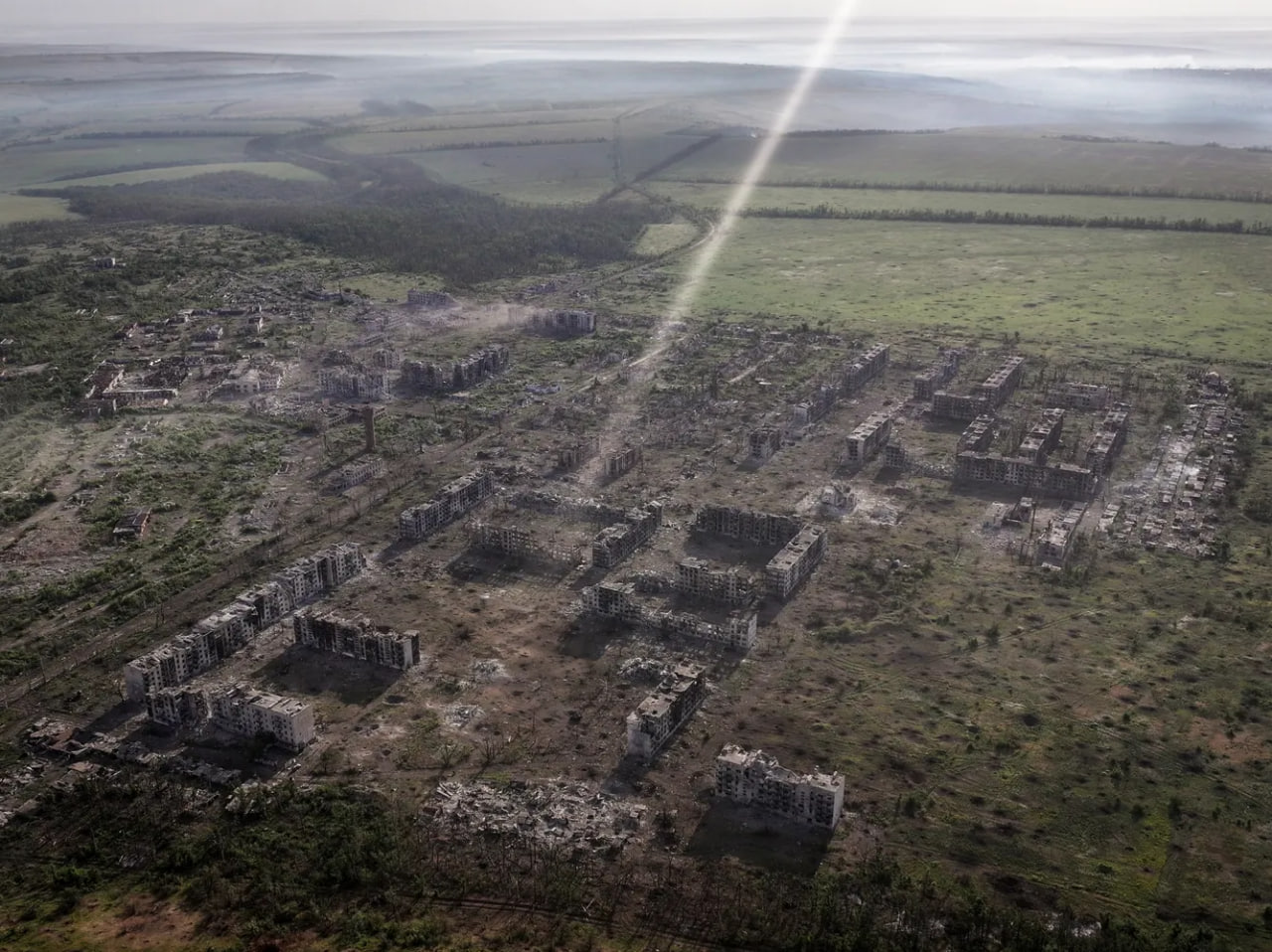

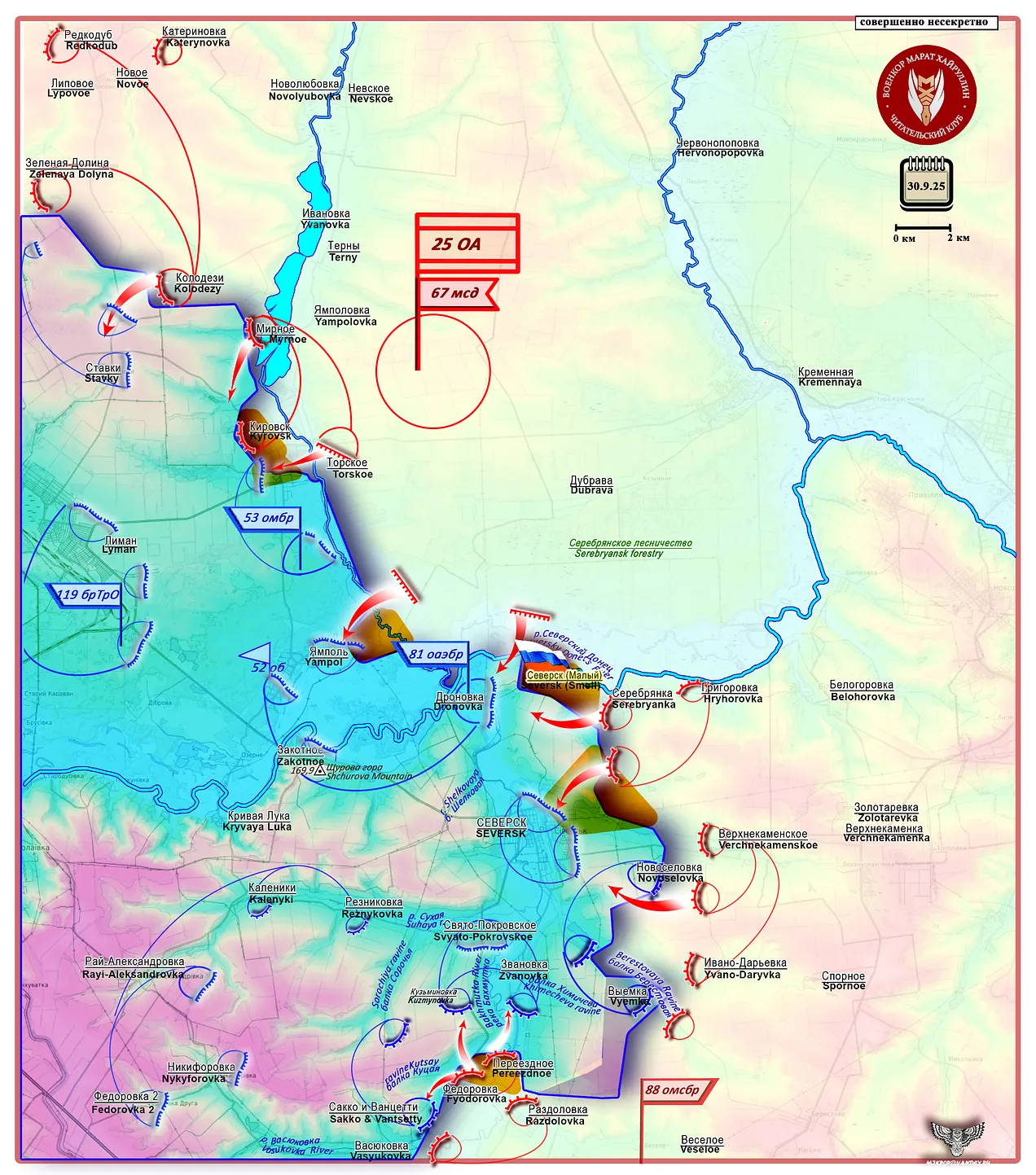
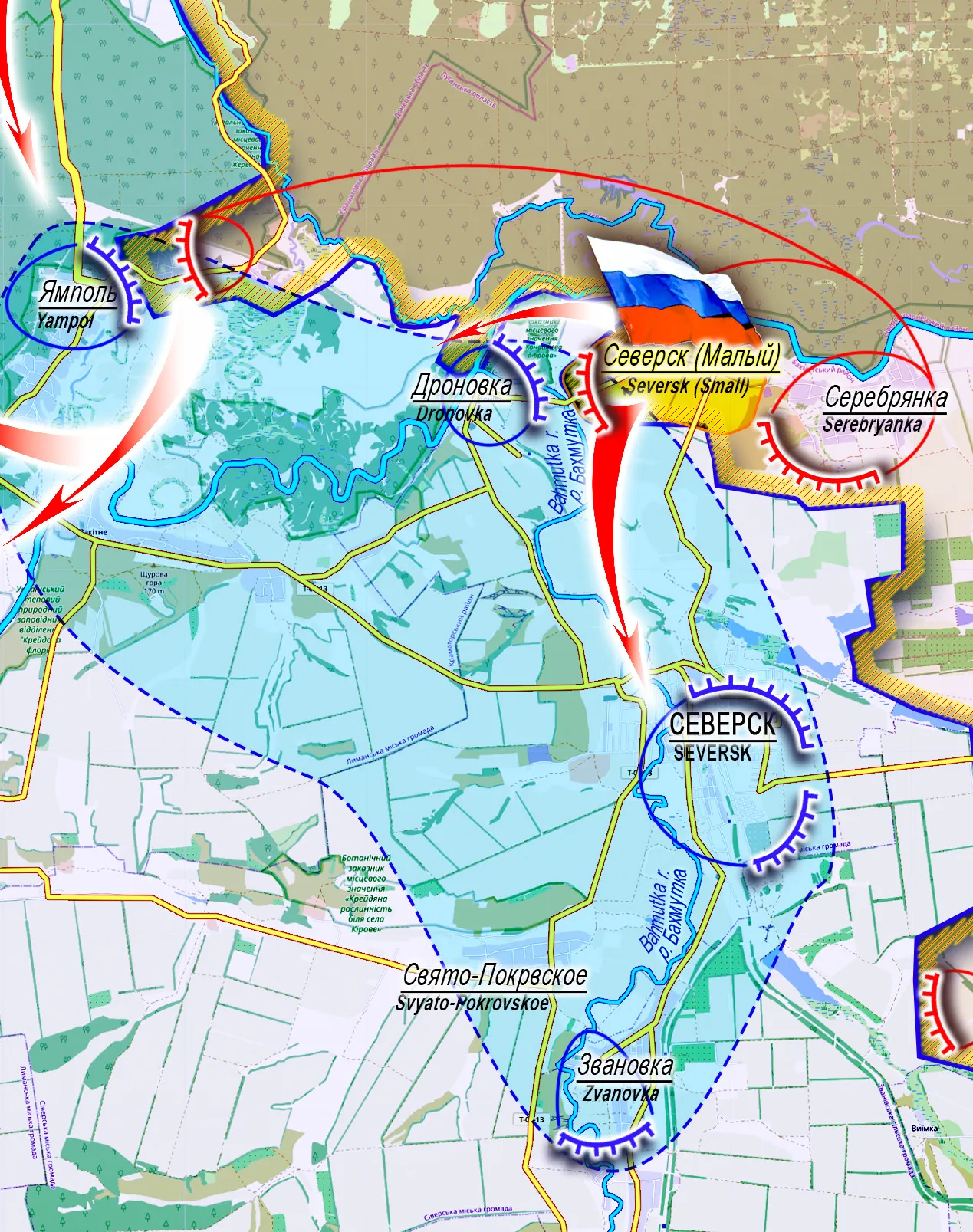
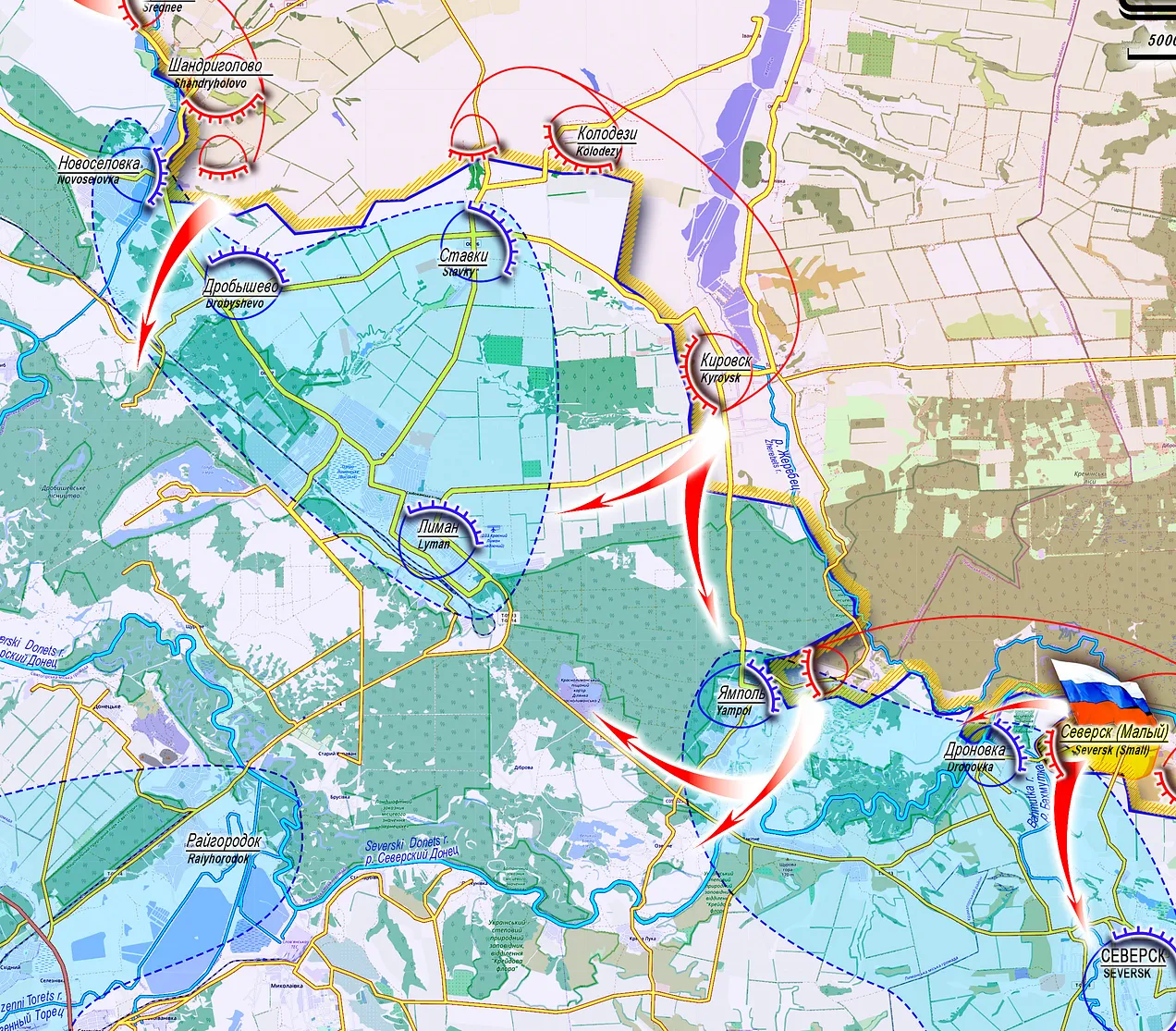
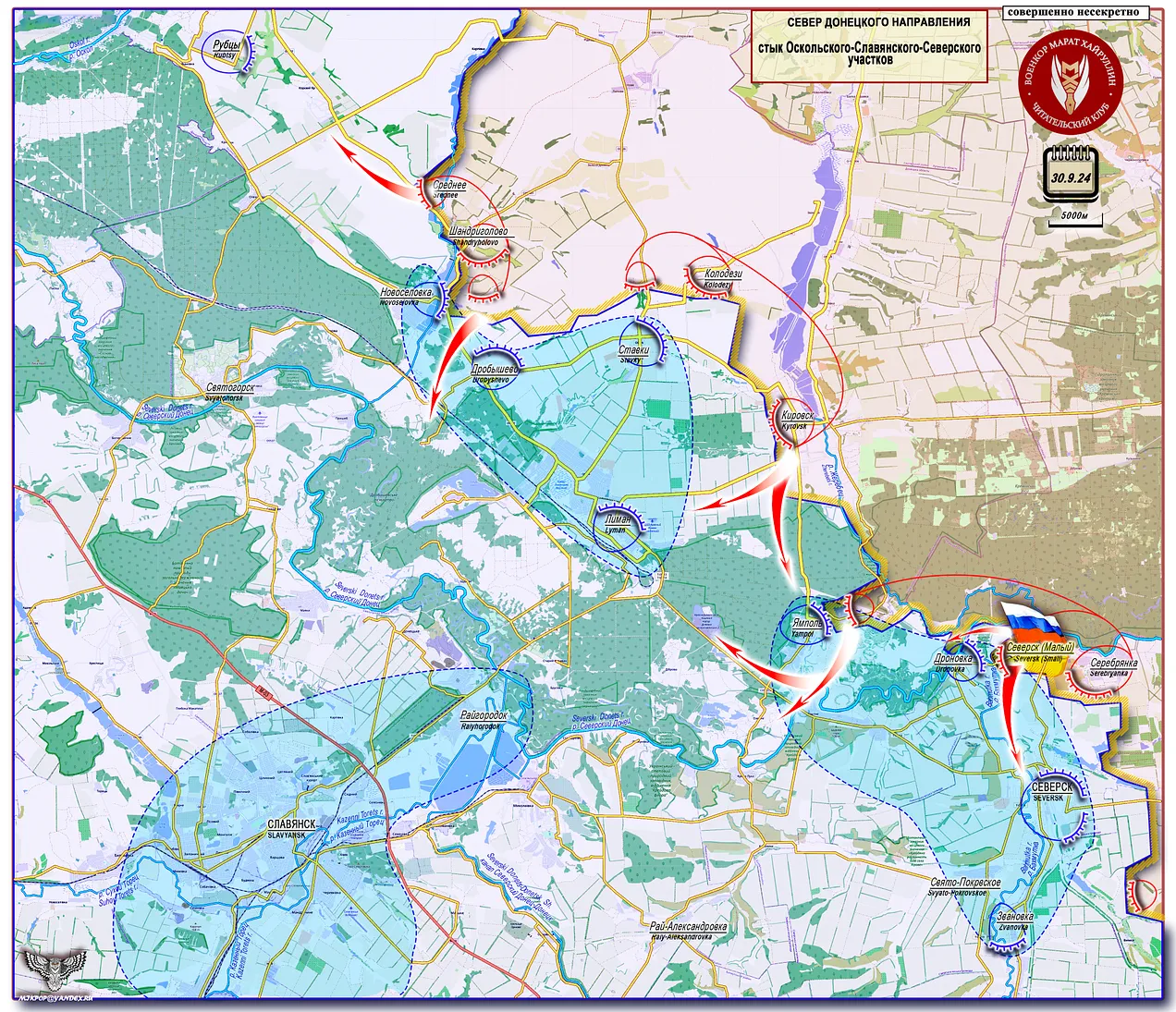
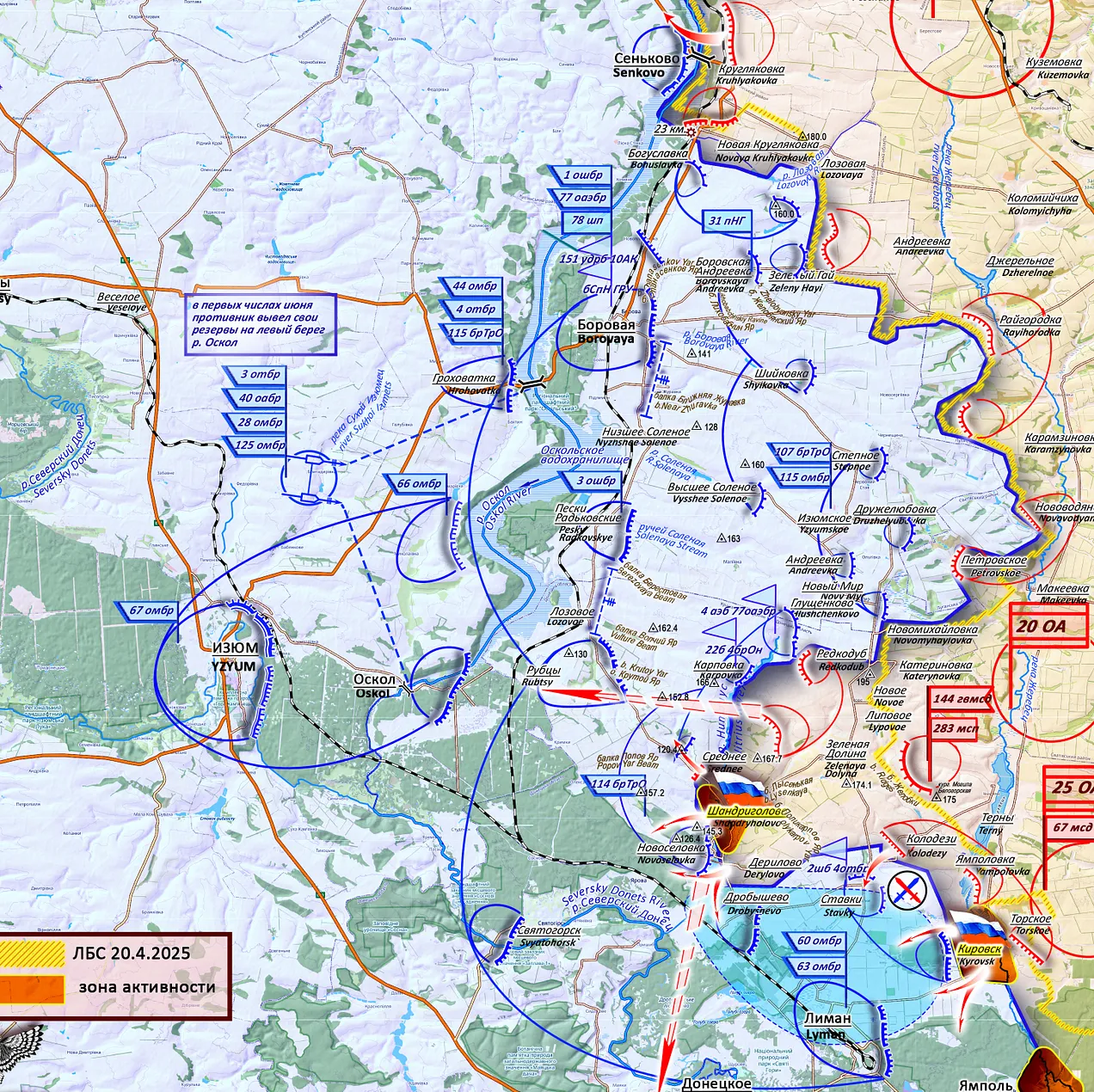


 Source:
Source: 